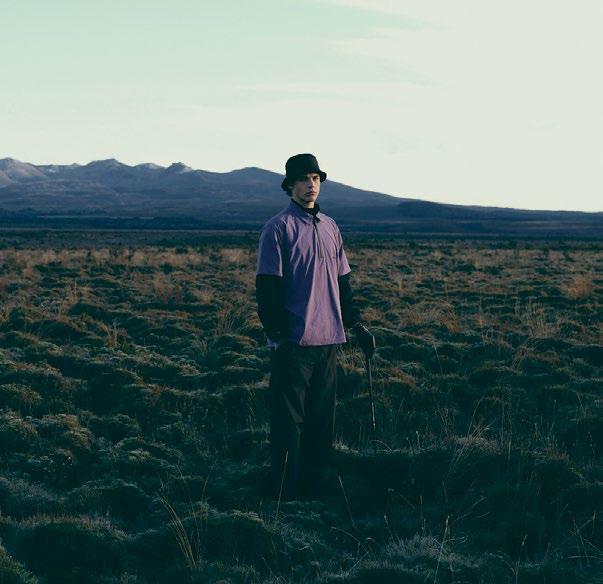ULTIMATE GOLF GETAWAYS
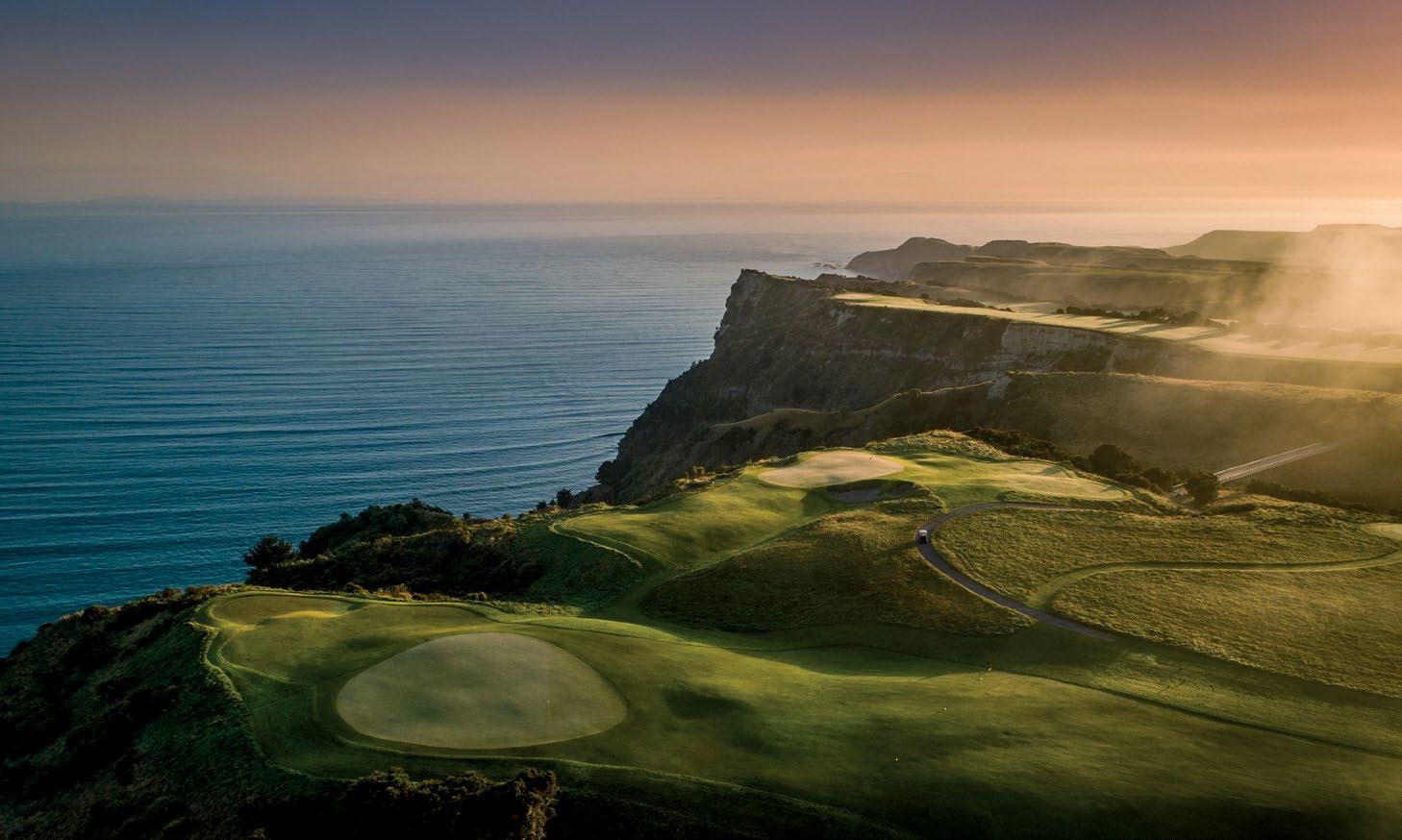

























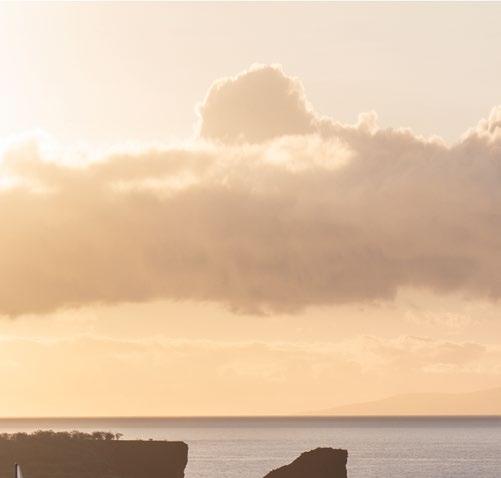



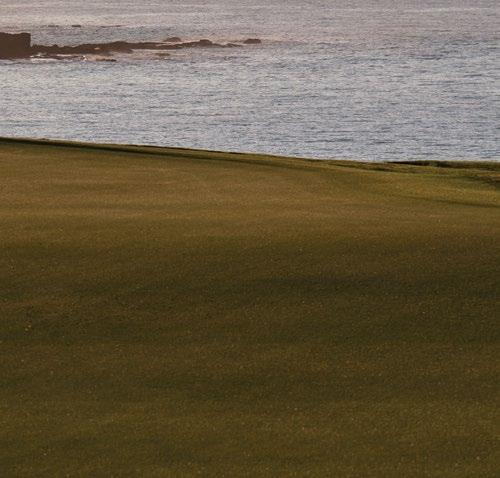








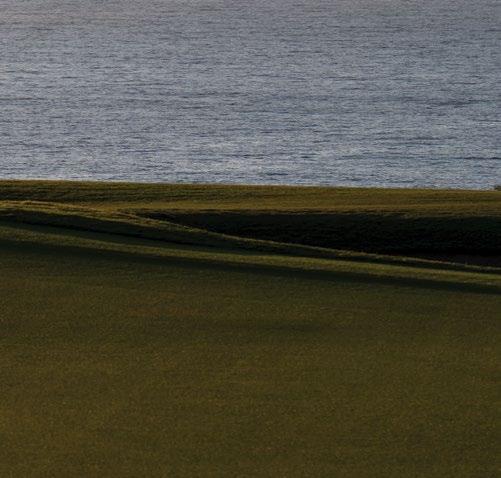













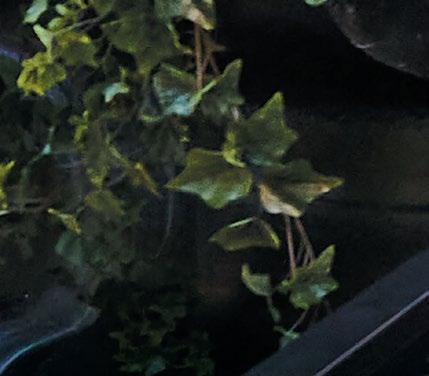

































































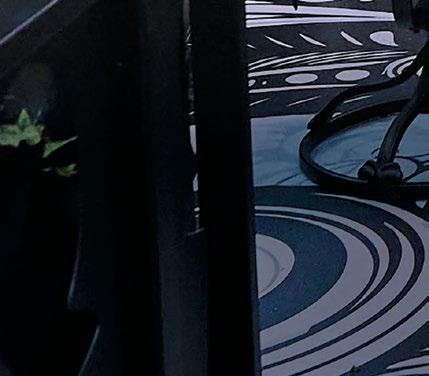


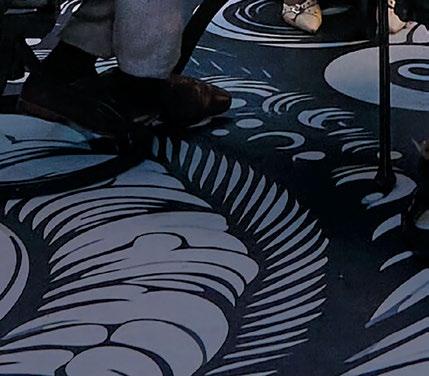
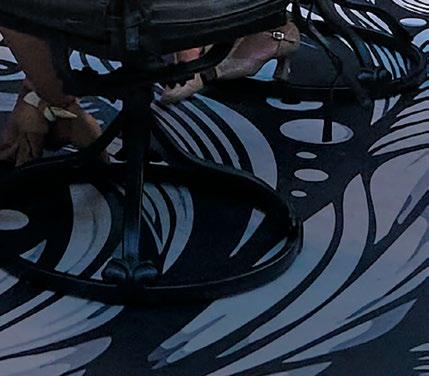







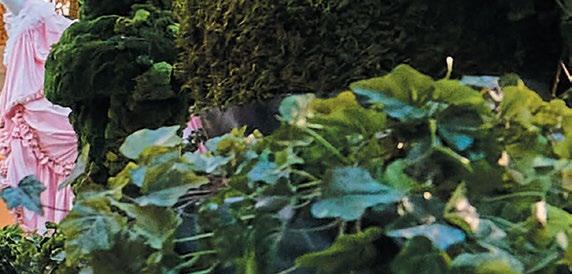
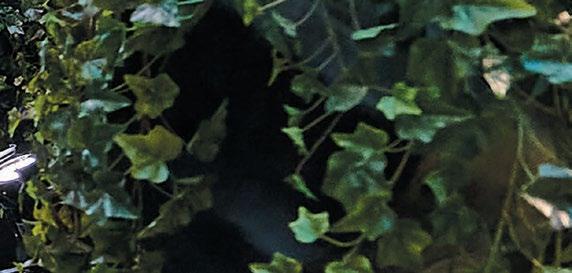


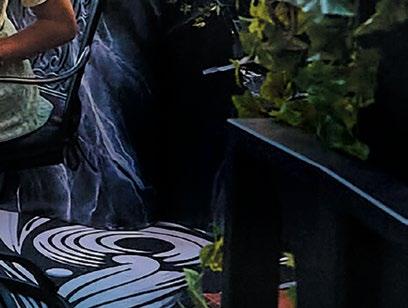










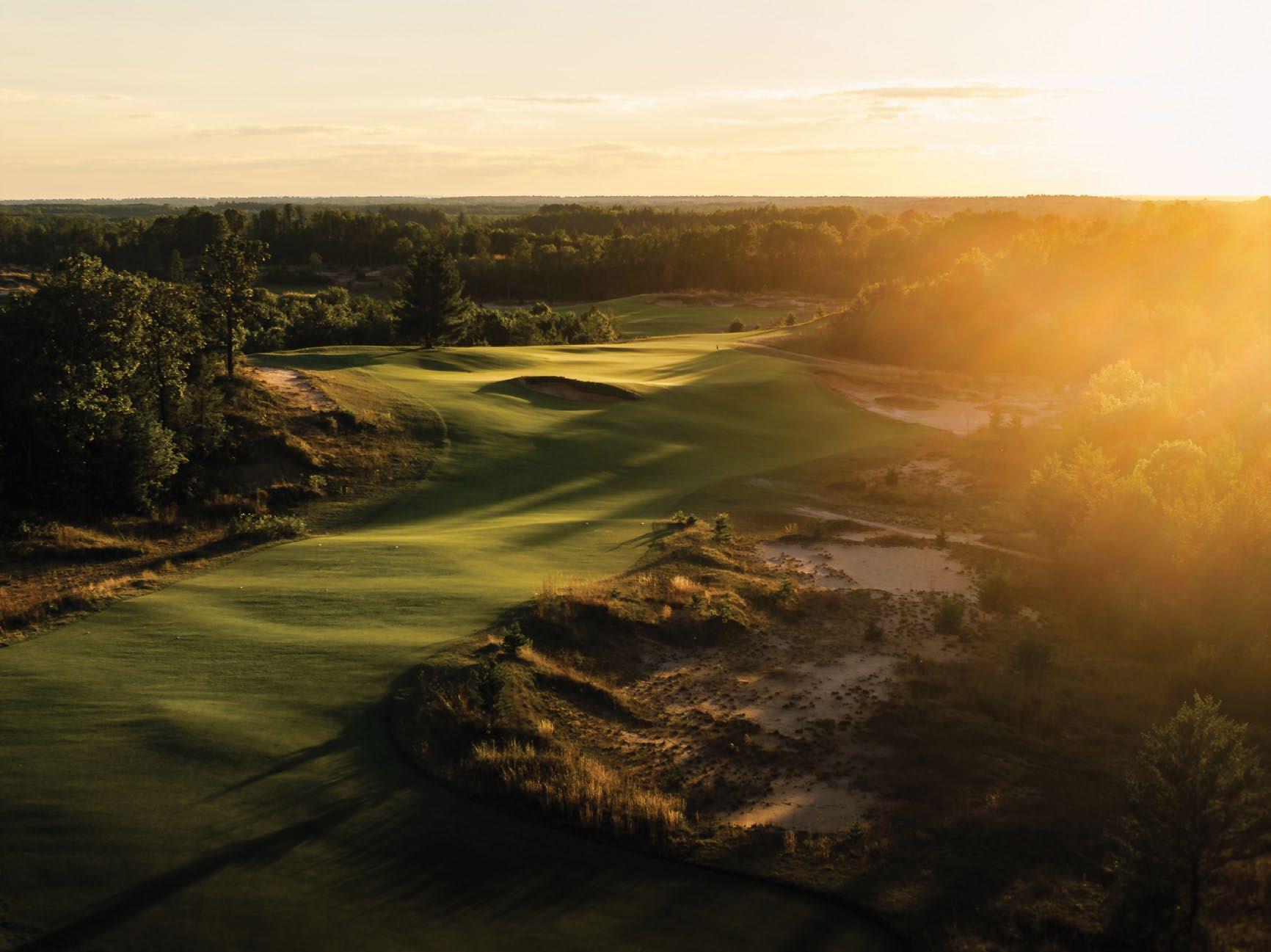
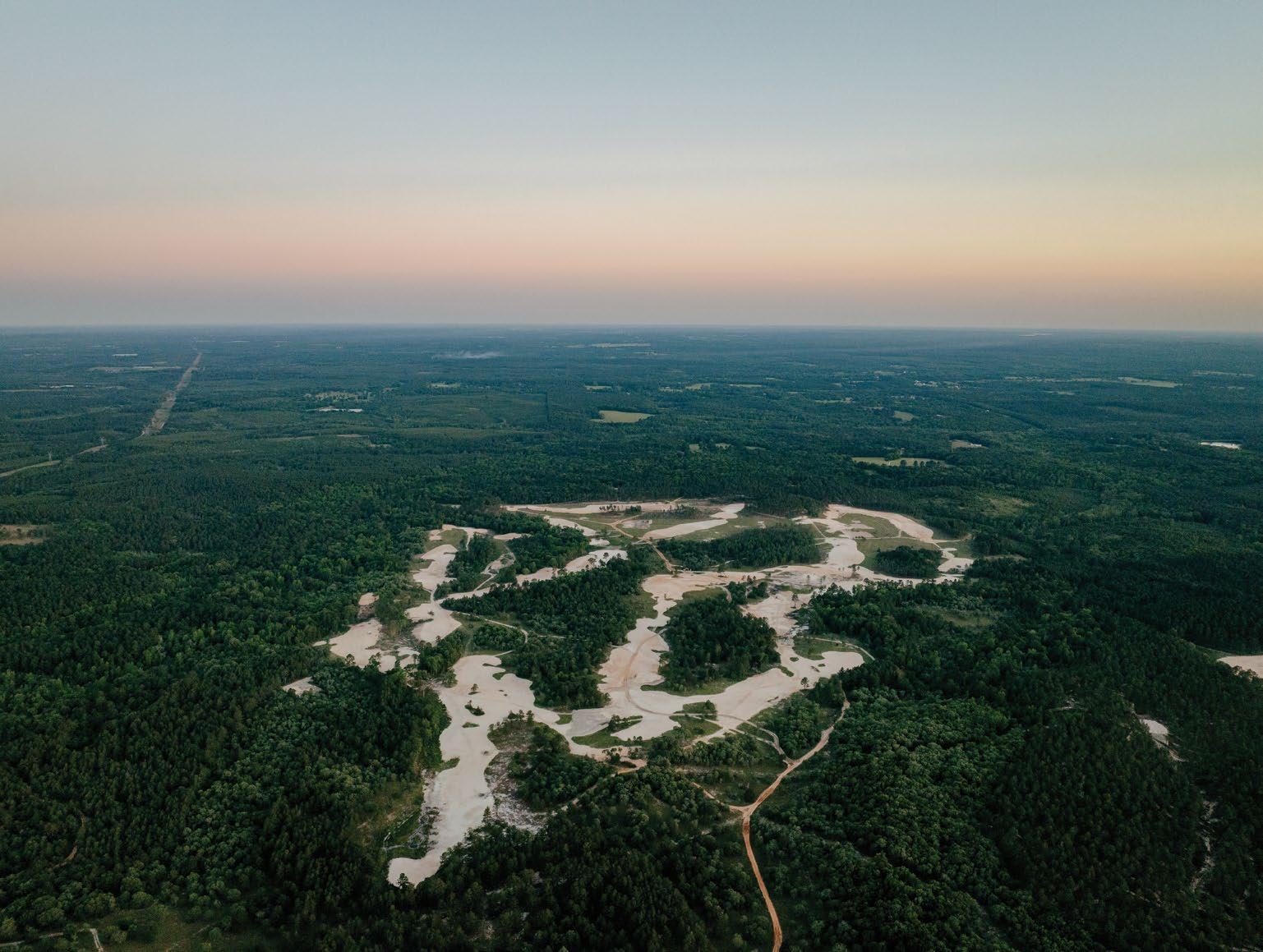
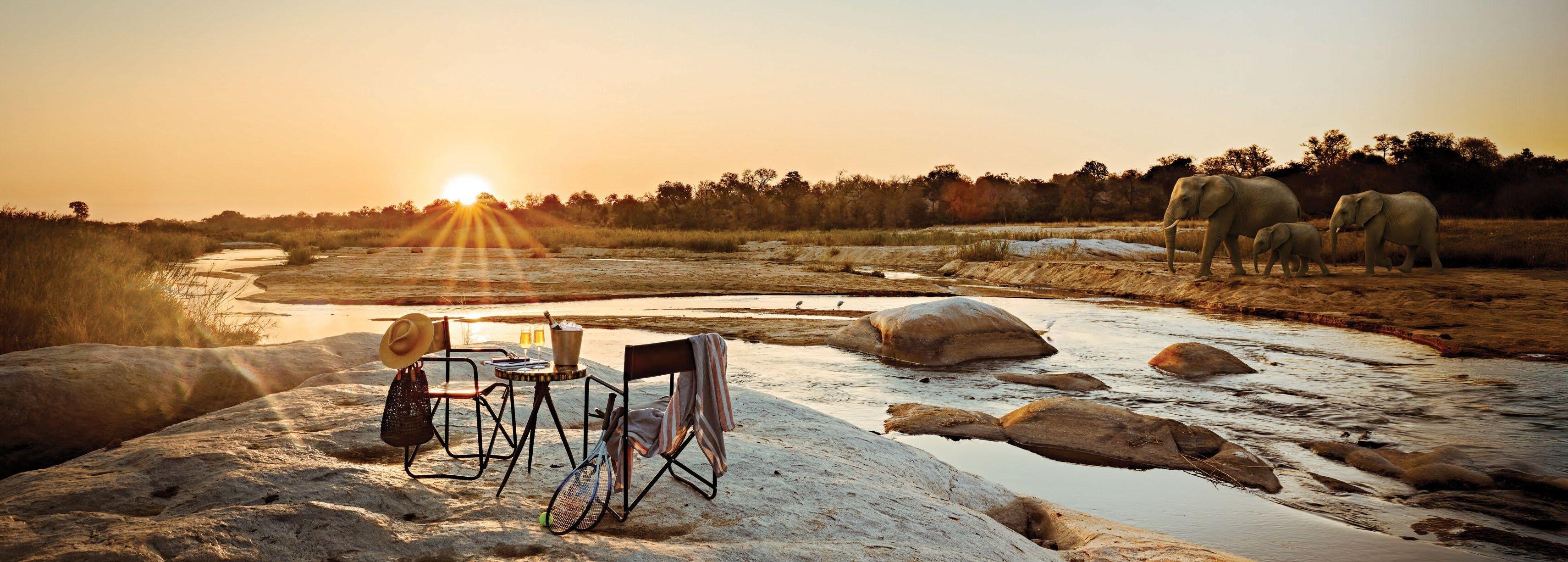
YOUR BUCKET LIST DIDN’T EVEN KNOW THIS EXISTED.

The match had been played on a clay court overlooking the savanna. The only spectators, a herd of elephants. And that was just day one.
At Kensington, every dream is achievable. Our fully customized itineraries and expert private guides ensure that your trip is once in a lifetime, every time.
Start planning at KensingtonTours.com or contact your Travel Advisor.



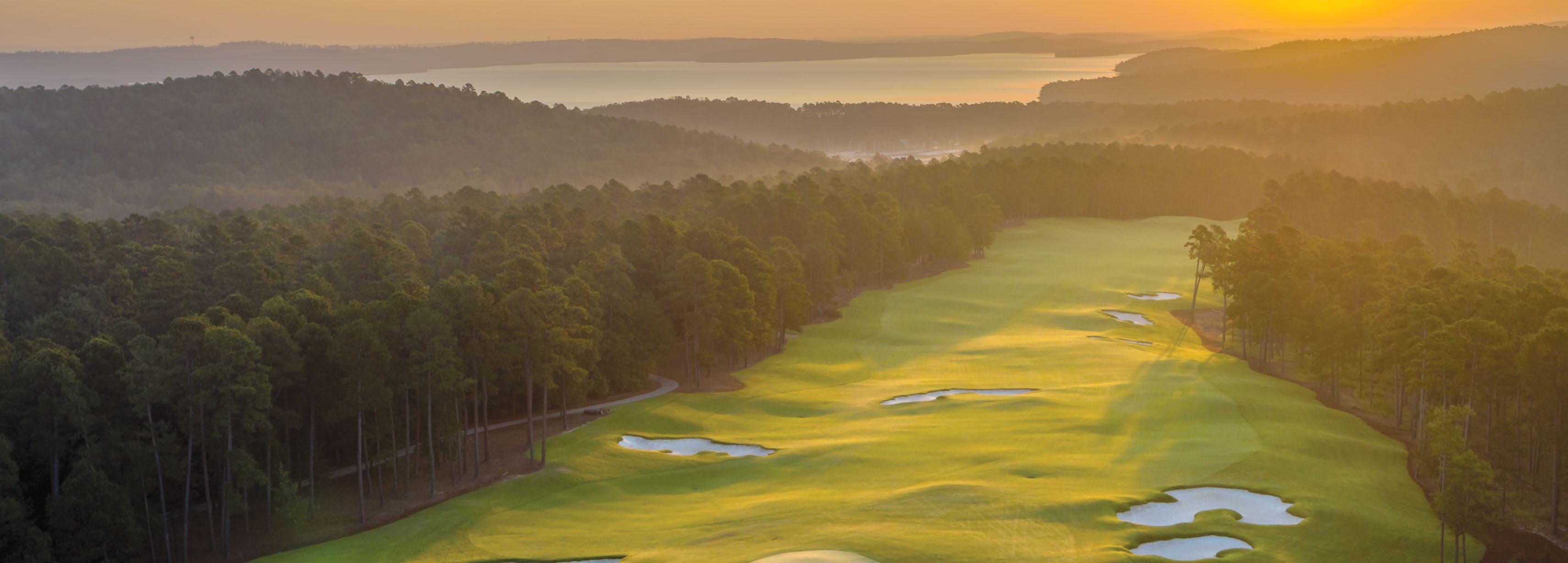
It’s what drives all of us.

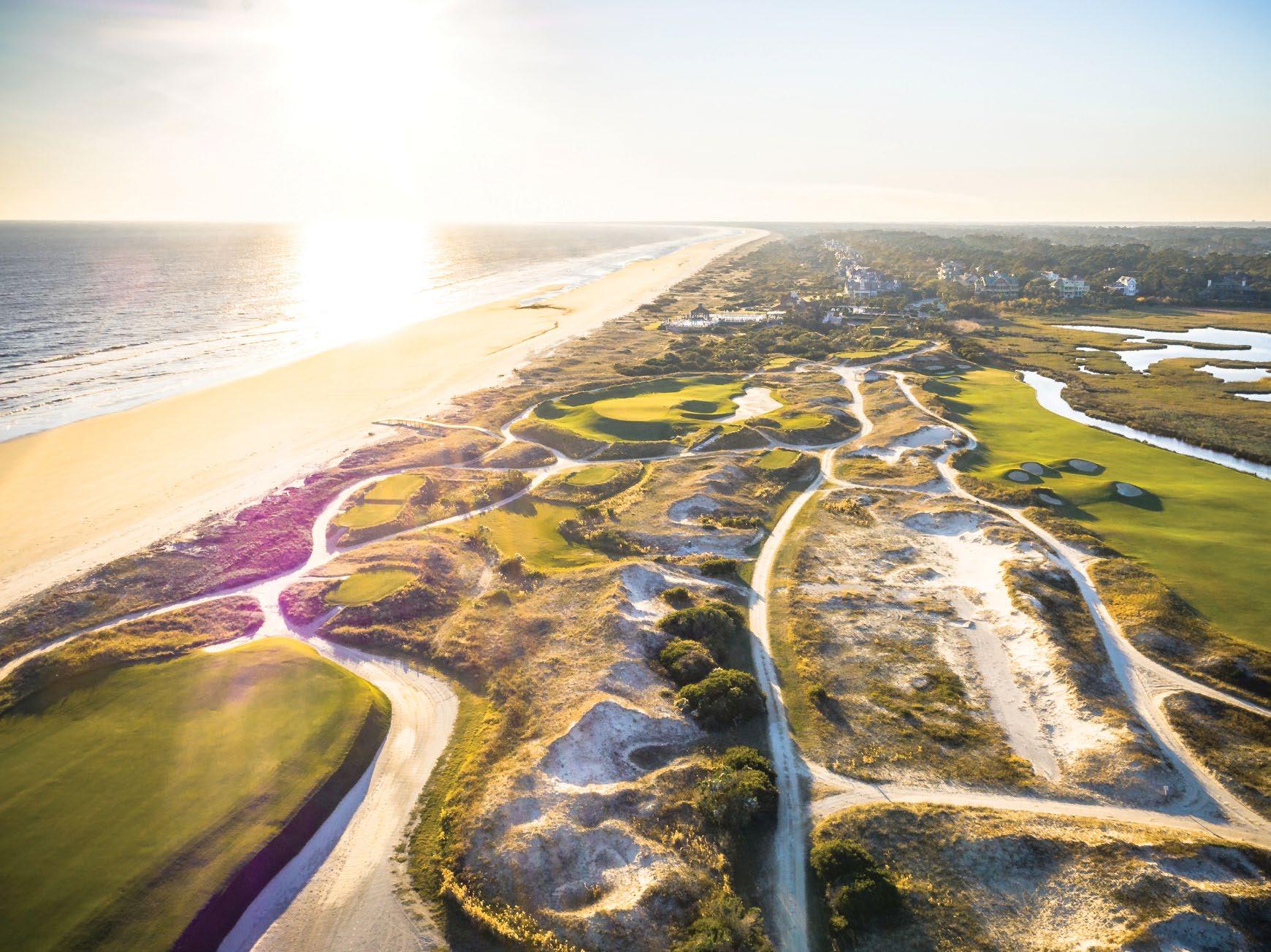
Charleston’s place in golf lore lives on in the area’s world-class courses and resorts.
By Larry Olmsted
Many places around the world are rich in history. The Charleston area and South Carolina overflow with it.
Settled by the English in 1670, the Charleston area had already been occupied by Native Americans for a century or more. It was the site of the first major American victory in the Revolutionary War, in 1775, and its Fort Sumter bore the first shots of the Civil War, in 1861. Among its many other historical benchmarks were the country’s first museum, theater, and public college, all of which are still in use.
Of all the firsts in Charleston’s history, one in particular resonates with golfers: Charleston was home to the inaugural golf club in the United States. The earliest shipment of golf equipment to the Americas—96 clubs and 36 dozen balls—reached Charleston from Scotland in 1743. Locals loved whacking balls
around public open spaces so much that, in 1786, the South Carolina Golf Club was formed, becoming the nation’s first. The club was set in a downtown park, Harleston Green, and within a decade it included a clubhouse. While this is all widely accepted as historic fact, there are some ancillary legends harder to prove; for instance, many pundits believe that the greens fee—what we pay to play on a golf course—got its name from the club dues at Harleston Green.
Golf history has been made in the Charleston area ever since, but perhaps no moment since 1786 was so locally significant as the 1991 Ryder Cup held on the Ocean Course at Kiawah Island Golf Resort. Played from extra-long back tees, the tournament was so difficult for the best players in the world that it earned the lasting nickname “The War by the Shore.”
For visitors today, the Ocean Course

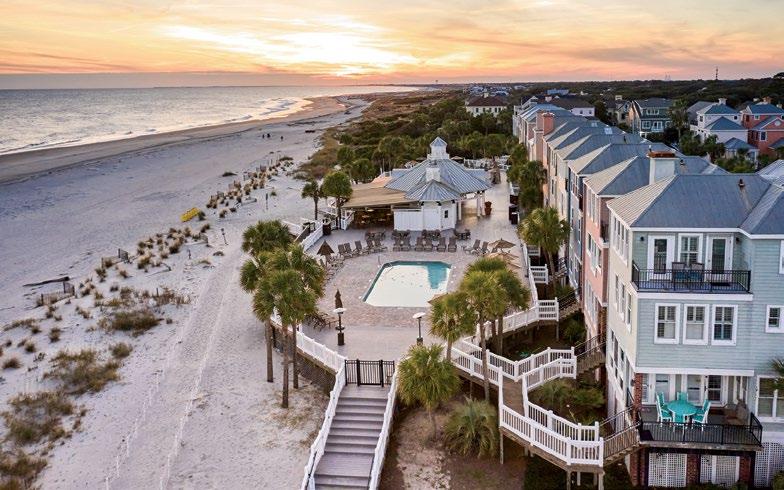

is a far more inviting experience—and a world-renowned bucket list course. It is continually ranked among the nation’s top courses and is the rare instance where a public course is the highest rated in the state. It is widely considered the masterpiece of the late, great Pete Dye and is a shining beacon of golf course design, with radically different play from each of its five tees. Choose the right ones for your ability, and it may well be the most enjoyable round of your life. Overstep your boundaries, and it may be a hard lesson in humility and lost balls.
The Ocean Course also hosted the 2012 and 2021 PGA Championships—an event that will return in 2031—making it one of just four public courses in the country that have held both a Ryder Cup and a major. It also serves as a primary draw for a Charleston golf vacation—but it’s hardly the only highlight for golfers.
Kiawah Island Golf Resort boasts four other 18-hole courses, making it one of just a handful of resorts worldwide with five full-size layouts. Another of its must-play layouts is Osprey Point, a Tom Fazio design, but all the courses are well worth a round.
Cougar Point, by South African legend Gary Player, is a highlight, as is Jack Nicklaus’s Turtle Point, with its trio of standout oceanfront holes. Clyde Johnston’s Oak Point solidly rounds out a field that offers unmatched variety for golfers.
Fazio’s expertise can also be enjoyed
at Wild Dunes Resort on Isle of Palms, where he designed both of the awardwinning courses. In fact, the Links Course here was the first Fazio ever did—another part of Charleston’s golf history—and has always been one of his personal favorites. His sequel, the Harbor Course, is currently receiving a facelift and will reopen in pristine shape. It is the more challenging of the two, and while both share the gorgeous coastal setting, the Harbor has water at every turn, including lagoons, salt marshes, and holes on the Intracoastal Waterway.
Both Wild Dunes Resort and Kiawah Island Golf Resort have appeal far beyond golf, with luxury accommodations and countless activities and amenities for all ages. They also offer excellent dining with Lowcountry flair—think shrimp and grits—and are convenient enough to Charleston’s center that many resort guests head into town for a special dinner or night out after a day of golf.
Charleston’s legendary culinary scene includes standout regional fare, fresh local seafood, and multiple James Beard Award winners. Its combination of amazing food, history, architecture, and culture—paired with seven remarkable coastal golf courses by a who’s who of designers—makes this South Carolina city a destination like no other.
Visit ExploreCharleston.com to plan your next trip.
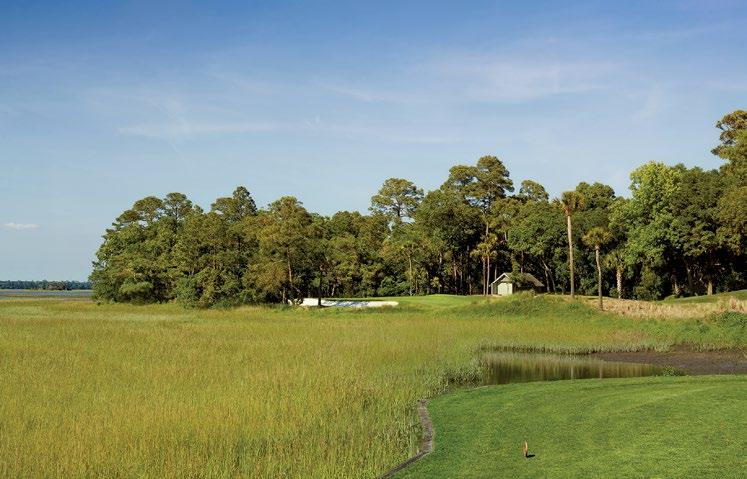
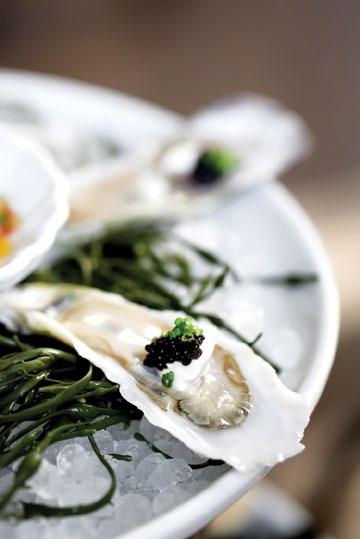
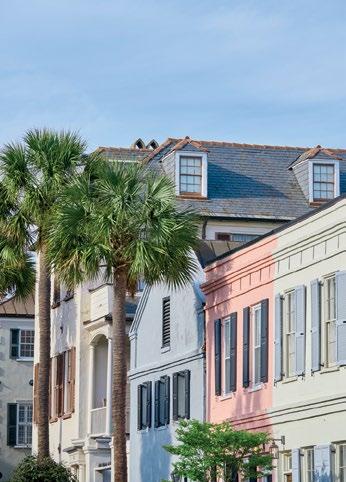


Framed by nature’s grandeur, you press the signature tee into the turf—one stripe honoring golf’s storied past, the other its future. In that serene moment, everything feels effortless. A picturesque course becomes your canvas for connection, a gathering place for kindred spirits. Here, tradition and luxury harmonize, and purposeful details create unforgettable experiences for the modern golfer who cherishes a classic game.
Request an invitation to join at dormienetwork.com

027–068
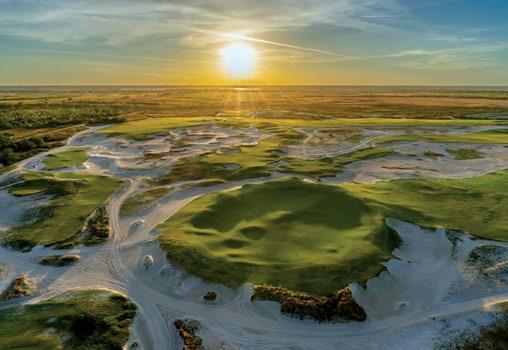
081–131
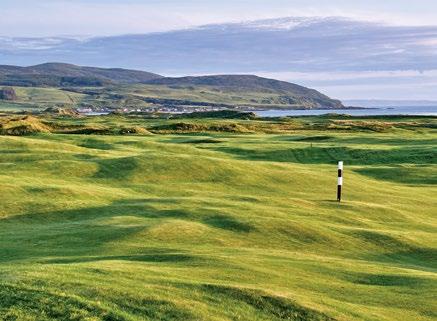
132–153

CHAPTER 1
35 words - Ficto voluptiis quam quistem dolenda nihilluptur solorer umenetum fuga. Nam, illiquo moluptatet, od ma evernatem autemque volo et ma dolorpo stinvelique arum aut fugita cum resciur adipsanis voluptur acest, conet pa dolorehent.
CHAPTER 2
35 words - Ficto voluptiis quam quistem dolenda nihilluptur solorer umenetum fuga. Nam, illiquo moluptatet, od ma evernatem autemque volo et ma dolorpo stinvelique arum aut fugita cum resciur adipsanis voluptur acest, conet pa dolorehent.
CHAPTER 3
35 words - Ficto voluptiis quam quistem dolenda nihilluptur solorer umenetum fuga. Nam, illiquo moluptatet, od ma evernatem autemque volo et ma dolorpo stinvelique arum aut fugita cum resciur adipsanis voluptur acest, conet pa dolorehent.
Publisher & Co-Founder
Matthew Squire
Executive Vice President, Content
Bruce Wallin
Creative Director
Matthew Halnan
Managing Editors
lori Bryan nikki prange
Editors
Robin Barwick (UK)
Shaun Tolson (US)
Head of Advertising Sales
Jon Edwards
Executive Director, Marketing
Emily Poppert
Marketing Coordinator
Morgan Barbay
Contributing Editor
Alexandra O’Laughlin
Founding Director
Arnold Palmer
Photography
Mark Griffin Champion, Evan
Schiller,
Jacob Sjöman
Special Thanks & Contributors
Ludvig Åberg, Ben Crenshaw, Michael Croley, Jillian Dara, Mike Davis, Sheila Johnson, Mike Meldman, Butler
Melnyk, Shivani Vora
Subscriptions
Order online at: shop.kingdom.golf and receive special subscriber offers
Or email: hello@kingdom.golf
Inquiries
Advertising ms@northandwarren.com
Editorial rb@northandwarren.com
Commercial ms@northandwarren.com 646-970-3755
Published by
President, Chief Business Officer JAY MEYER
Executive Vice President, Content BRUCE WALLIN
Executive Vice President, General Manager PAMELA ABBOTT
Vice President, Partnerships
CHRISTIAN POPPERT
Partnerships
Katie Brockman, Paolo Cassano, Mark Cooper, Tori DeClaris, Jon Edwards, Lauren Edwards, Margot Giblin, Travis Haley, JD Hess, James McNulty, Elaine Rizos, Matt Squire, Debbie Topp, David Van Sicklen
Marketing
Morgan Barbay, Julia Biedenbender, Tatiana Imamura, Emily Poppert,
Szafranski, Joanna Thomas
Jen Scherr, Adam
Director, Creative Services Shannon Corrigan-Baumann
Managing Editor
Lori Bryan
Creative Director
Matthew Halnan Vice President, Commerce & Growth
Cooper Fleishman
© 2025 North & Warren, LLC. Reproduction without permission is prohibited. The articles appearing within this publication reflect the opinion of their respective authors and not necessarily those of the publisher. The contents of advertisements and advertorials are entirely the responsibility of advertisers. No responsibility is taken for unsolicited submissions and manuscripts.
Printed in the USA


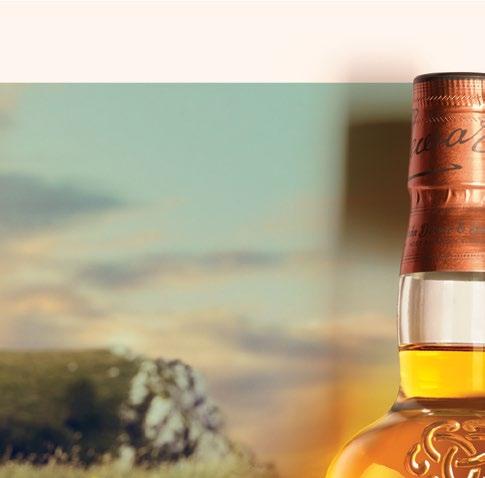








A curated collection of U.S. golf courses and resorts worthy of a special journey.
Hawaii
Old Hawaii is alive and well on Lanai, a mostly private island that’s home to historic Lanai City, empty beaches, abundant marine life, and two completely different Four Seasons resorts. Sensei Lanai is a wellness retreat set in the pine-covered mountains of the island’s interior. Four Seasons Resort Lanai, meanwhile, sits majestically above Hulopo‘e Bay, the lone beach resort on one of Hawaii’s most alluring islands. Here, too, is the rightfully renowned Manele Golf Course, a Jack Nicklaus Signature design that hugs the lava outcroppings and cliffs high above the bay. (The course is open to guests of both resorts.) Chances are, you’ll lose a golf ball or two—several tees require forced carries—but you’ll likely see dolphins while playing one of the most enjoyable rounds of your life.
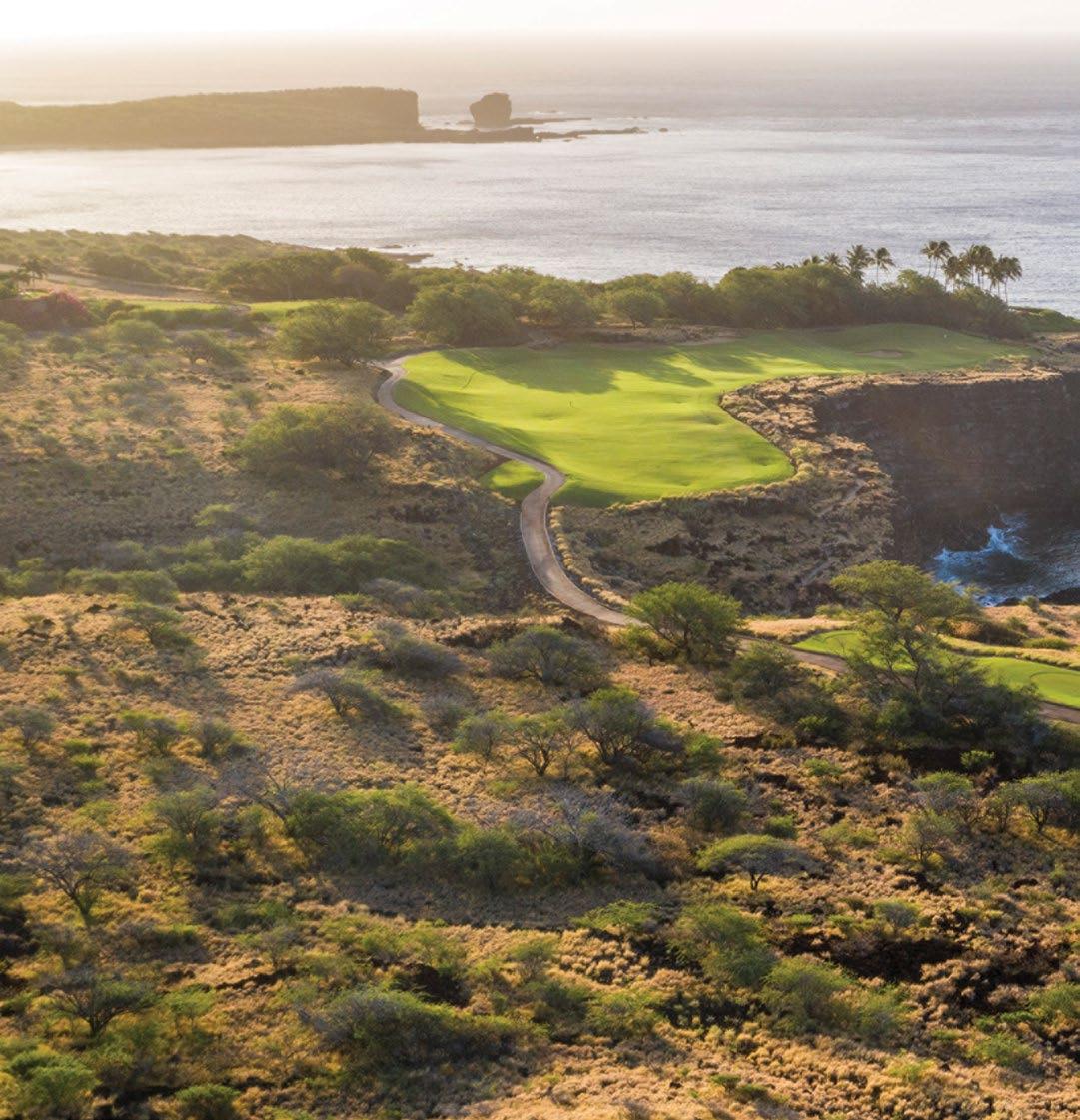
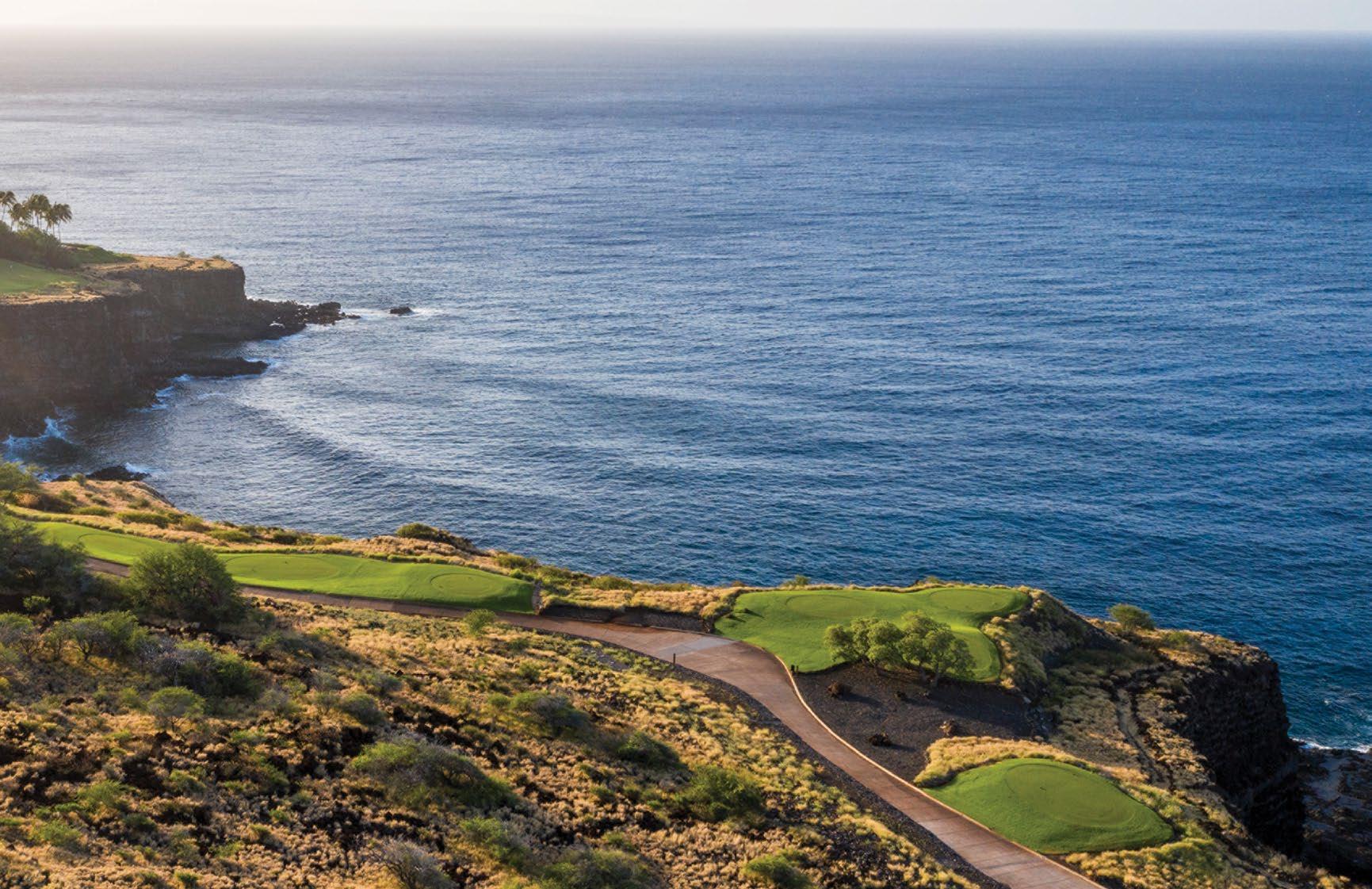

This resort in southern Indiana is home to a trio of diverse courses that offers something to satisfy any discerning golfer, but its championship routing, the Pete Dye Course (left), is in a class of its own. Set atop a series of ridges that, in some areas, can provide 20- and 30-mile-long vistas, the 8,100-yard layout (yes, you read that right) is surprisingly walkable, thanks to the more than 2.5 million cubic yards of dirt that Dye and his team moved during construction to soften the extreme elevation changes. That said, the course’s length—and its ribbonlike fairways bordered by deep ravines—makes low scores hard to come by.
“At Bandon, you can hear people having discussions about the best and worst courses at the resort,” says architect Bill Coore. “Each course has its own following, particularly amongst people who’ve played there more than once. I just know of no other place in the world like it.”
Since the resort’s eponymous course opened in 1999, it and all of the subsequent fulllength layouts—Pacific Dunes, Old Macdonald,
Bandon Trails, and Sheep Ranch—have wooed different groups of golf-obsessed travelers. In time, the same will be said for the newest course at Bandon Dunes, Shorty’s (below), which is a masterpiece of golf in miniature form. The 19-hole short course was designed by WAC Golf and tumbles over and around a swath of dramatically shaped dunes and ridges, answering the hypothetical musing of what golf might look like in the land of hobbits.


Since it opened for play a century ago, the Cascades Course at the Omni Homestead Resort has been reason enough for golfers to make the pilgrimage to western Virginia. Thanks to Omni’s ongoing restoration and renovation efforts—a project that commenced in 2021 and has since surpassed $150 million— the list of reasons to visit this historic resort keeps growing.
Almost two dozen U.S. presidents have visited the Homestead, including Thomas Jefferson, who stayed there for three weeks in 1818, frequently soaking in the mineralrich Warm Springs Pools. President William McKinley, the first sitting president to play golf,
teed it up on the resort’s Old Course (originally a Donald Ross design) in 1899; less than 10 years later, President William Howard Taft, a frequent Homestead guest, established golf as the most favored presidential sport.
As for the Cascades Course (above), the 6,908-yard William Flynn layout is home to several compelling holes, not least of which is the 10th, a dogleg par 4 that Arnold Palmer deemed one of his 54 favorite holes in America. Palmer’s predecessor, Sam Snead, called the Cascades home for the entirety of his career, serving as the Homestead’s first resident golf professional. “If you can play the Cascades,” he declared, “you can play anywhere.”
Measuring an even 8,000 yards from the back tees and situated across 800 acres, this Jack Nicklaus Signature golf course in Big Sky, Montana, offers wide fairways and friendly contouring. Its Rocky Mountain setting (at an altitude of 7,500 feet) means that the course looks more menacing on the scorecard than it actually plays—and guarantees an enjoyable round no matter your score.
“A lot of the land here is preserved,” says golf photographer Evan Schiller. “You are surrounded by these 10,000-foot peaks, and there are no houses out there, so when you’re playing golf, you’re out in the wilderness.”

Wisconsin
The village of Kohler is synonymous today with five-star hospitality and championship golf. The latter took root when Herb Kohler hired Pete Dye to create the first of what would become four championship-caliber courses.
“Pete was really married to the land,” the late Kohler once said. “In his mind, there was always strategy and the landscape—and how the course was positioned was very much a part of the strategy.”
In their conception of the Straits Course at Whistling Straits (right), the duo took inspiration from their golfing trips to Ireland and Scotland. Kohler wanted a course that rivaled Ballybunion, and he watched as Dye brought in more than 10,000 truckloads of sand to transform the otherwise flat parcel of land.
When the course opened in 1998, it was a trailblazer, as the majority of American resort courses at that time lacked the drama and dynamic shotmaking that were inherent to the Straits experience. Nearly three decades later, it remains a masterpiece of American golf by one of the game’s true visionaries. “I thought he was the greatest artist that I’d ever seen,” Kohler said of Dye.
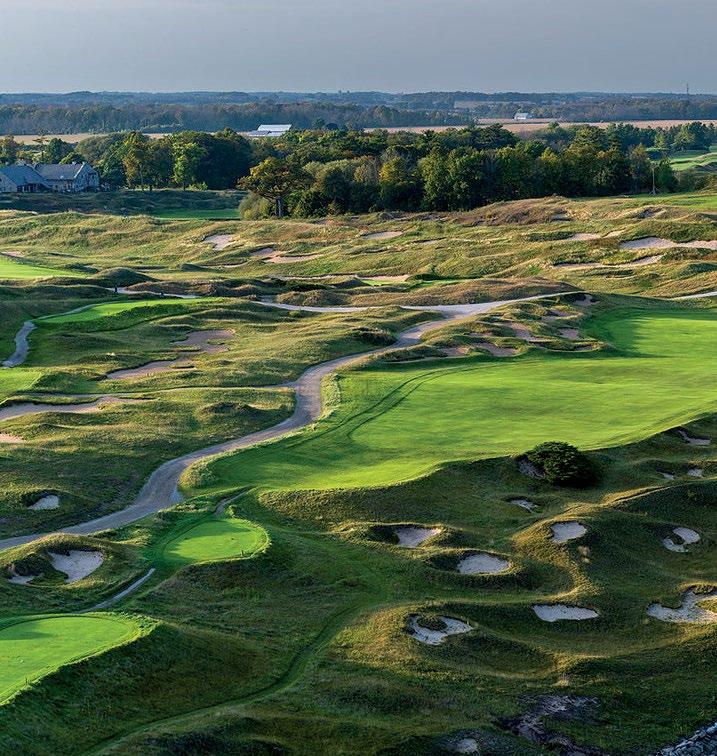
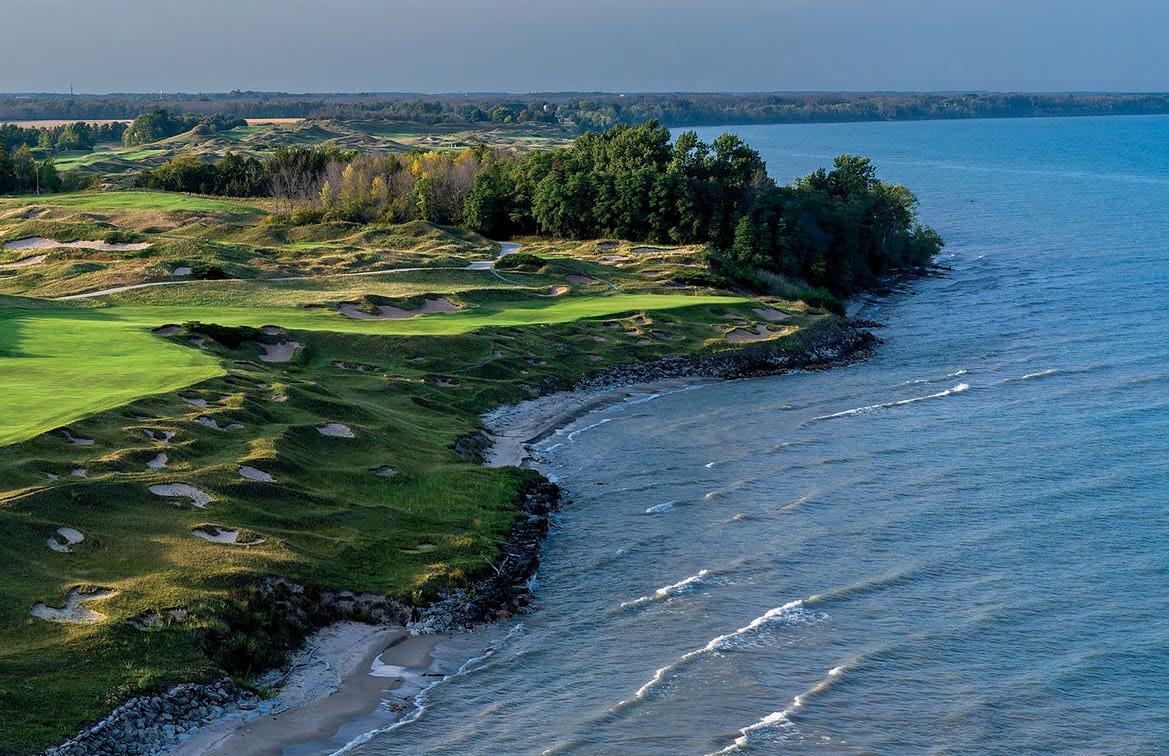

Wisconsin
Some might argue that this Wisconsin golf resort shed its hidden-gem status before it even opened. As soon as word got out that Mike Keiser, the developer behind Bandon Dunes, had purchased 1,700 acres in the Central Sands region, expectations for another epic golf resort were set. Opened in 2017, Sand Valley did not disappoint—and today rivals its Oregonian cousin with four full-length courses designed by some of the game’s most prolific architects, a dynamic short course, a sprawling putting course, and even more golf amenities on the way. “The purity of the experience is like nothing else,” says David McLay Kidd, who designed the resort’s second full-length layout, Mammoth Dunes (left). “It’s all about—and only about—the golf.”
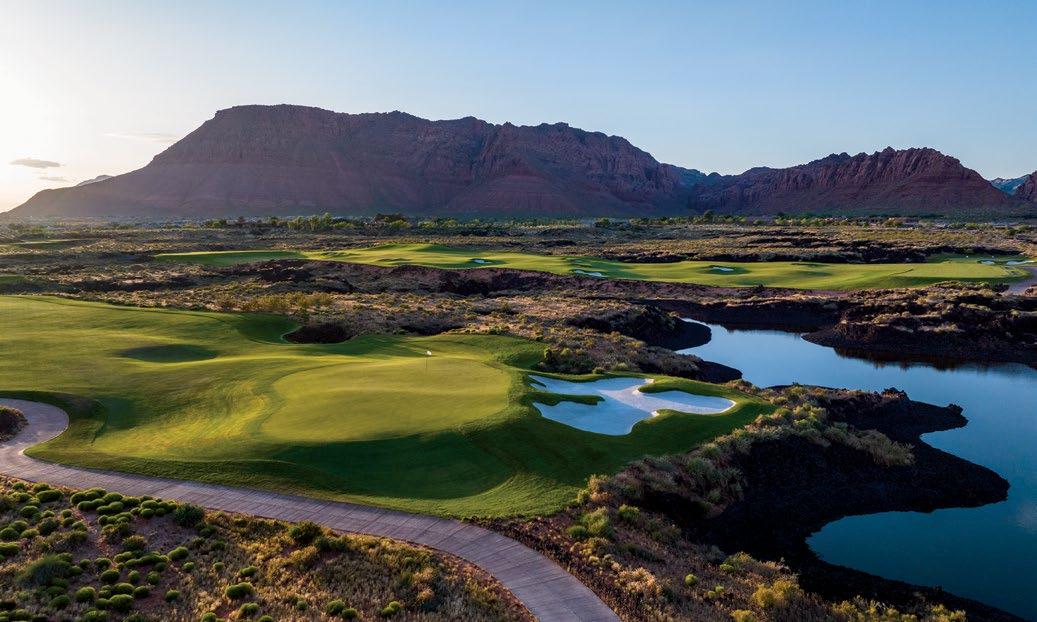
Utah
When Black Desert Resort opened in the spring of 2023, its 19-hole, 7,200-yard golf course represented the final piece of Tom Weiskopf’s design legacy. The late architect worked alongside his longtime associate Phil Smith on the routing of this unique course in Ivins, Utah, which is positioned against a backdrop of Snow Canyon State Park’s majestic red-rock mountains.
Black Desert’s pristine green fairways wend their way through the rugged landscape, punctuated throughout by vast stretches of black lava rock. Finding balls in those black rocks is an unlikely proposition—and playing out of them an impossible one. The many challenges that the course presents partly explain why Black Desert, just two years since its debut, is the only club to host annual events on both the PGA and LPGA Tours.

North Carolina
There are plenty of reasons why this North Carolina resort is considered the “cradle of American golf.” It starts with the revered No. 2 course, which has inspired and challenged golfers and golf architects for decades and was recently appointed to be the first anchor site of the U.S. Open. No. 2 may be the resort’s crown jewel, but there are nine other distinctive courses to be played and praised, none more attention-worthy than Pinehurst’s newest addition.
Built upon land that previously existed as a
turn-of-the-20th-century mining operation, the No. 10 course (above) is the first new layout built at the resort in almost three decades. “The site is topographically distinct and drastically different from anywhere in Pinehurst,” says the course’s architect, Tom Doak, though he’s quick to acknowledge that the terrain still features several of the famed Sandhills region’s hallmarks. “The sand, the wiregrass, the bluestem grass, and other native grasses that grow around the Sandhills,” he says, “create a fabulous texture for golf.”
Florida
Streamsong is an anomaly among Florida golf resorts. The property occupies a former phosphate mine that remained undeveloped for years, and the stacked mounds and trenches that were left behind eventually revegetated. The result is a rugged landscape that looks completely natural—and yet completely out of place in the Sunshine State. “If you brought me in blindfolded,” says Tom Doak, who designed Streamsong’s Blue course, which opened in 2013, “Florida would’ve been the last state that I would’ve guessed I was in.”
In addition to Doak’s Blue, Streamsong features the Gil Hanse–designed Black course (right), the Red course by Bill Coore and Ben Crenshaw, and the design duo’s new 19-hole match-play short course, the Chain.
CONTRIBUTORS: Robin Barwick, Shaun Tolson & Bruce Wallin
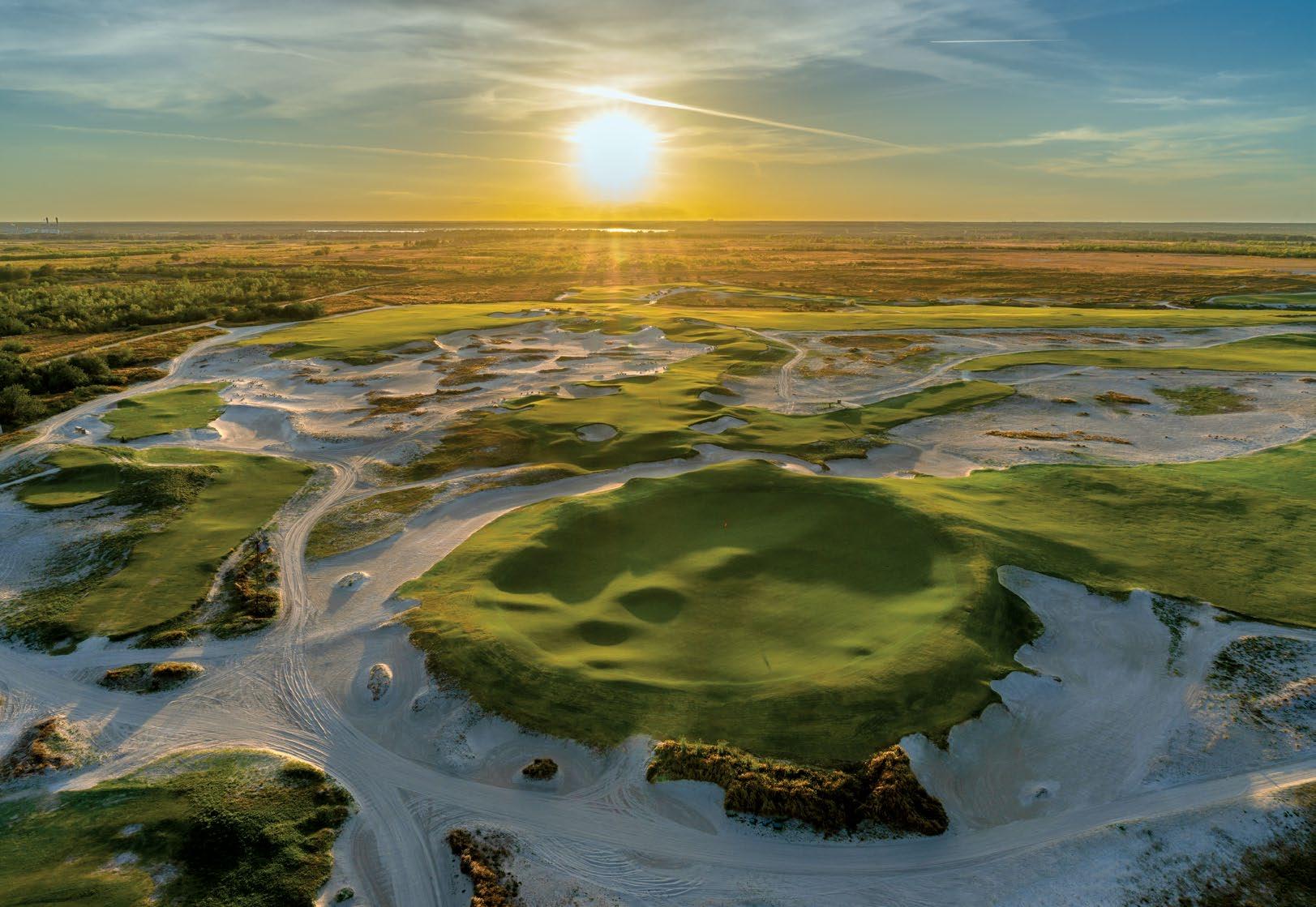
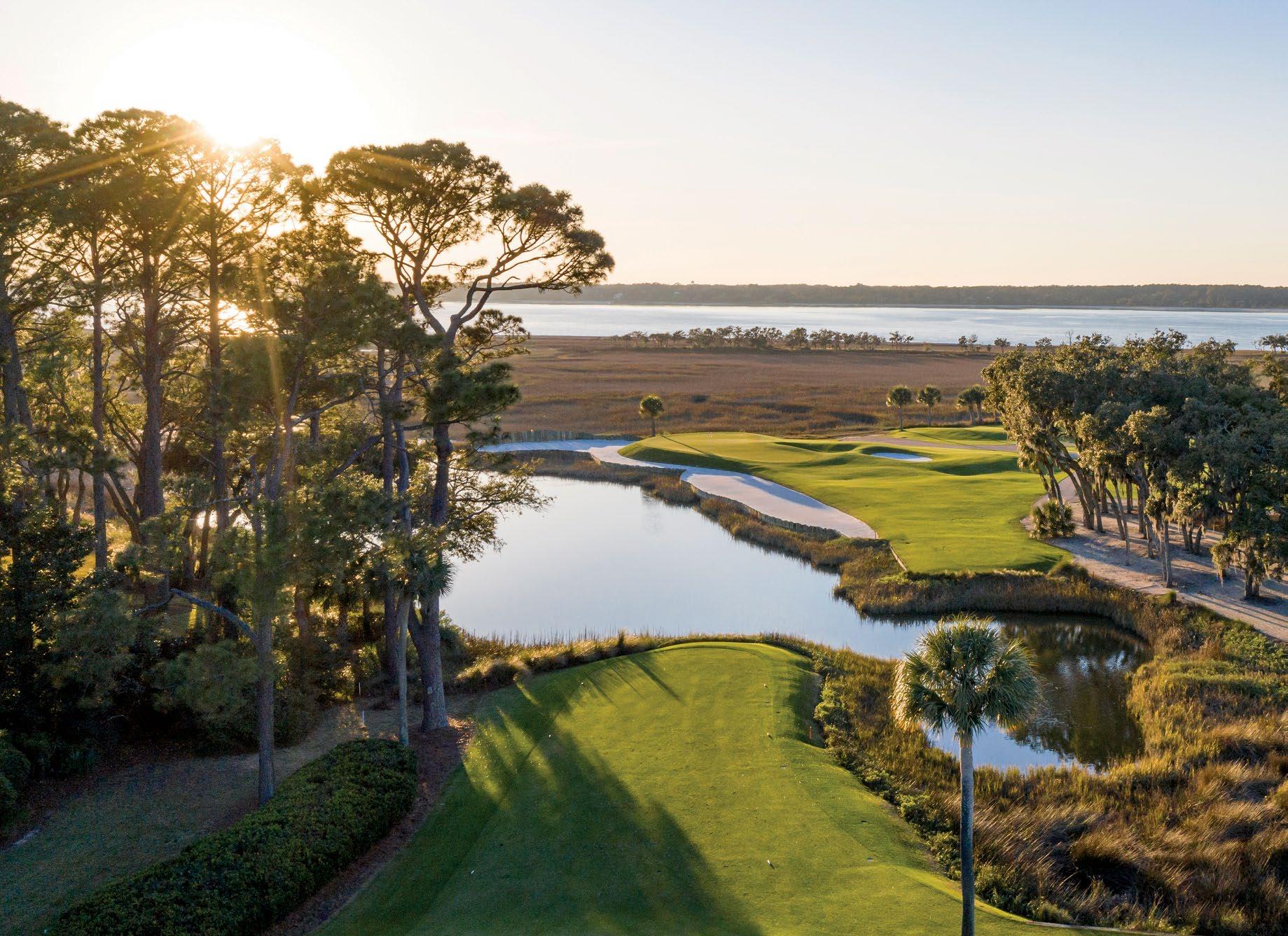
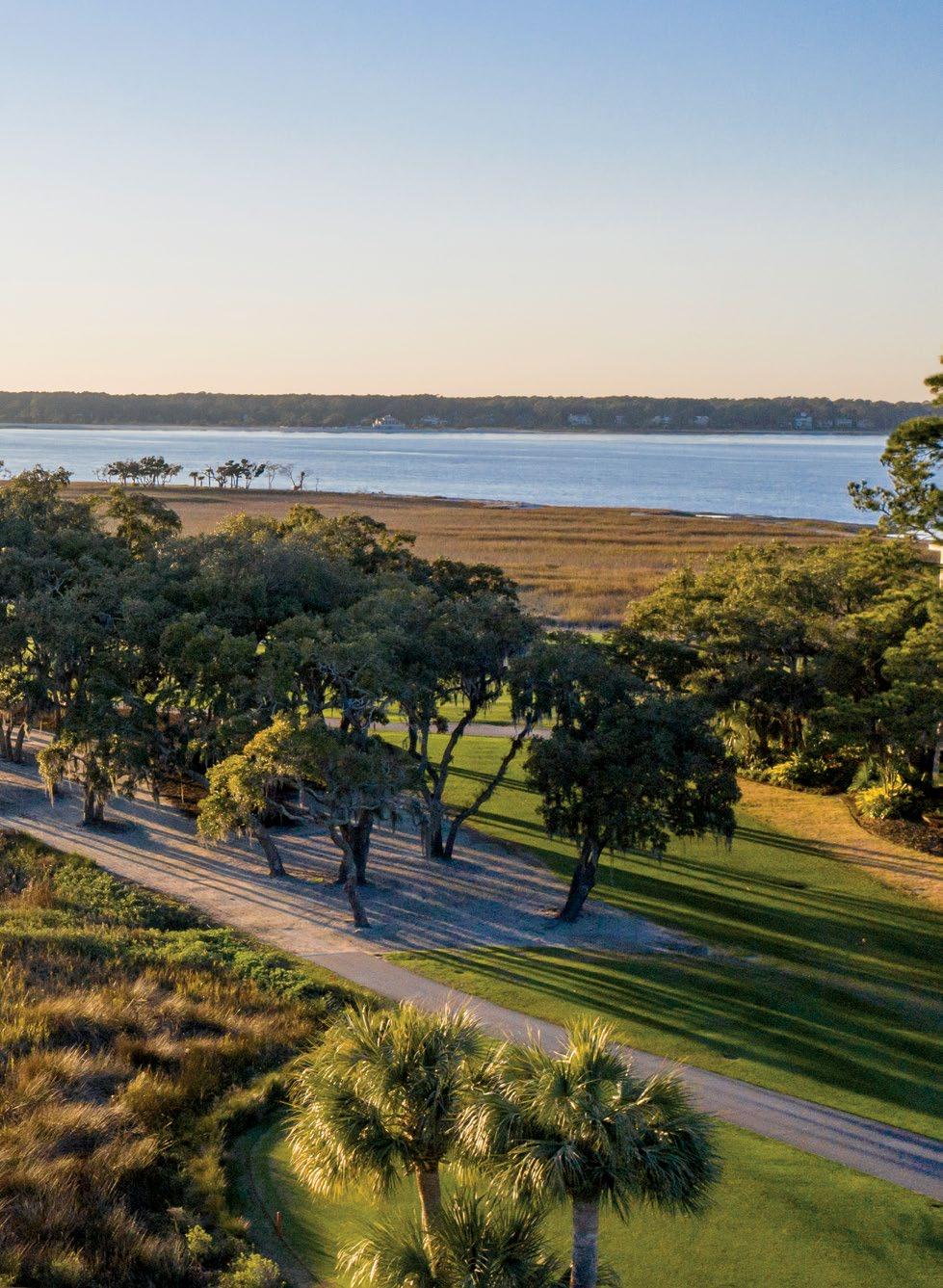
Insider tips and the top spots to hit on a swing through the Lowcountry’s legendary golf courses, barrier islands, and historic cities.
Playing any major championship venue presents a challenge, but Pete Dye’s Kiawah Island masterpiece is in a class of its own.
By Shaun Tolson
with a history that includes a Ryder Cup, three PGA Championships, and two World Cups, Pete Dye’s Ocean Course at Kiawah Island Golf Resort is on every enthusiast’s bucket list. “It draws people from all over the world,” says the resort’s president, Roger Warren. “If you love golf, it’s hard not to be enamored with it.”
For those fortunate enough to play the Ocean Course, that sense of enchantment often comes with a healthy dose of anxiety and apprehension. From the course’s tee boxes, landing areas appear to be much tighter than they look on TV. The sandy waste areas, punctuated by tufts of wiry sea grasses, seem to be more expansive. Green complexes are more complicated and more contoured—especially around the perimeters.
Take too conservative a line with your tee shot on the par-5 second, and you may find yourself standing awkwardly at the base
of a steep embankment, hacking out of gnarly, six-inch rough, just hoping you can advance your ball back onto the fairway. Swing a bit too quickly with your driver on the par-4 ninth, and you may be resigned to blasting out of a sprawling, steep-faced bunker that runs along much of the left side of the fairway. The pros can avoid these precarious spots with ease. The average amateur? Not so much.
“If you stick to your line, there’s plenty of room to play golf,” says Brian Gerard, Kiawah Island’s director of golf. “But when your eyes get drawn to trouble, now you don’t have any confidence, and Pete did that better than anybody. The Ocean Course is visually intimidating. It will expose your weaknesses.”
Despite the psychological warfare it imposes on players, as well as the intimidation factor of the scorecard—a 77.4 course rating and 153 slope rating from the black tees—the Ocean Course is playable for average golfers. That’s a reflection of the work Dye did to soften the course during the mid-1990s. In fact, when he was out surveying the land ahead of those modifications, he would often ask groups of golfers who passed how they were getting around, many times without those players knowing who he was.
“That’s one of the coolest things that I remember about Pete,” Gerard says. “He took an interest in the average player as much as he did the best players in the world. He wanted to

hear what people said about his design, and he would always try to find a solution that satisfied everyone.”

The ultimate insider plots five perfect days playing five of the island’s celebrated golf courses.
imagine you have five days to play Kiawah Island Golf Resort’s five public courses— architectural marvels designed by Pete Dye, Jack Nicklaus, Tom Fazio, Gary Player, and Clyde Johnston. Is there an ideal itinerary you should follow? That’s the question we asked Kiawah’s director of golf, Brian Gerard, and what follows is his insider’s playbook.
The first course built at Kiawah Island is the one Gerard would play first. Across 6,814 yards, this Gary Player design, circa 1976, features expansive fairway and greenside bunkers defined by broad flashes of white sand—a unique attribute among the island’s courses. These bunkers often serve as can’tmiss aiming posts and help first-timers better understand the shots they need to hit. The course’s various tee boxes present players of varying abilities with the requisite level of difficulty and challenge. The fourth, fifth, and sixth holes dramatically play right along the island’s protected marshland and, in
Gerard’s estimation, compose “one of the most picturesque three-hole stretches” at the resort.
Built by Clyde Johnston in 1989, Oak Point flies under the radar of most guests for two reasons: its designer isn’t a household name, and the course is located just across the Kiawah River, on Johns Island. In Gerard’s opinion, this 6,821-yard layout doesn’t get the recognition it deserves, especially considering that it carries the same levels of conditioning and playability as the resort’s four other courses. He also notes that those who venture off island to play it generally like it so much that they immediately want to play it again. “It’s a real shotmaker’s golf course,” he says. “There are multiple risk-reward opportunities, both off the tee and into the greens on the par 5s. And both number nine and number 18 are great finishing holes right along the river.”
With two rounds under your belt, it’s time to take on the resort’s gauntlet. “There’s plenty of room to play golf on the Ocean Course,” Gerard says. “But Pete Dye was a genius at making golfers feel uncomfortable. Indecision changes a lot, and the wind has a lot to do with that. The wind changes everything at the Ocean Course.” Needless to say, most resort guests who make
x

layout find themselves grinding to save pars or bogies, which means they too often don’t take the time to appreciate where they are. “You have to stop and take a look around,” Gerard insists. “It’s the perfect setting.”
After a day grinding it out on the Ocean Course, golfers will be clamoring for a reprieve. That’s where Tom Fazio’s Osprey Point comes in, offering up just the type of playing experience that most guests will yearn for one day removed from a round with demanding shots at every turn. Playing around four natural lagoons, the course is widely considered the “favorite” of both resort guests and members, largely due to its wide fairways, generous swaths of rough, minimal forced carries, and approach
forgiving and welcoming. “Golfers are just freed up there,” Gerard says, “and they tend to always have a really fun and enjoyable experience.”
Turtle Point encapsulates many of the experiences that golfers will have on each of Kiawah’s four other public courses, making the 6,911-yard Jack Nicklaus layout an ideal conclusion to this bucket-list getaway. Players will immediately notice the fairways here are tighter and, given the many raised, turtleback putting surfaces, the approach shots more daunting. The back nine also delivers a trio of oceanfront holes that rivals the drama and beauty of any stretch of the Ocean Course. Says Gerard, “It’s a great finishing course to your stay.” —S.T.
In a Kingdom exclusive, five-time RBC Heritage champ and Atlantic Dunes designer Davis Love III discusses his restoration of the legendary Harbour Town Golf Links.
hilton head island wasn’t always a golf mecca. It all started at Sea Pines Resort, in 1962, when George Cobb designed the Ocean Course. That initial layout set in motion a wave of golf course development on the 69-squaremile barrier island, which today is synonymous with championship-caliber golf.
In the years that followed, Pete Dye visited Hilton Head to make his own contribution at Sea Pines, creating the now-legendary Harbour Town Golf Links. Dye’s course not only revolutionized golf design trends but also attracted the PGA Tour to the island—where it has returned for almost 60 straight years.
In the spring of 2025, almost immediately after the final putt dropped at the RBC Heritage tournament, Sea Pines Resort closed Harbour Town for an extensive restoration, with Davis Love III and his company, Love Golf Design, serving as consultants on the project. (Incidentally, in 2016, Love and his brother, Mark, led a redesign of the original
Ocean Course, creating Atlantic Dunes in its place.)
Harbour Town’s renovation is set to last most of the year, during which all greens, bunkers, and bulkheads will be rebuilt; irrigation and drainage improvements implemented; and minor, artistic modifications made to green complexes and bunkers. To learn more about the project, we sat down with Love, who, with five titles to his name, holds the crown as the winningest RBC Heritage champion of all time.
you’ve played harbour town as a professional pretty much every year for almost four decades, as well as in a handful of junior tournaments. do you remember your first experiences on the course?
I was there in ’69 for the first [PGA] tournament with my dad when I was five. My son says I don’t really remember it, I just remember what my dad told me about it, but I know I got stuck in the marsh mud on 18, probably looking for golf balls. And I remember panicking, thinking that I was gone, that I would never get out.
most golfers who end up hitting their approach shots in that area probably feel the same way.
Yeah, I’ve been traumatized by the left side of the 18th green like everybody else.
how have you seen the course
evolve over the years?
There’s a lot more green grass, pretty grass; it’s nice and neat and organized; and there’s not as much trouble just off the fairway. Behind the second green, for example, originally there were big clumps of pampas grass that were four-, five, six-feet tall. The trouble is, people were losing golf balls one hop off the green. Harbour Town is still a resort course, so Pete said to take that out, and he replaced it with a bunker. Then that bunker was [later] removed. Little things like that I’ve seen change over the years, so [with this project] we have to decide which version we want.
how are you going to ensure that the changes you make are true to earlier versions of the course?
There are so many good, old pictures. I brought two big boxes of pictures home with me from the resort, and I’ve sorted them [and scanned them], and now I have them all on one file. It’s just incredible how different the bunkers and the drop-offs around the green are. And the reason why I signed on is because I live close by, and I know I can spend a lot of time there. Tweaking these little things is all artistic, but you have to stand there and look at it in the dirt.
what’s your primary responsibility on this project?
Our job is not to change what Pete did but try to get it as close to the original as we can. We’re
going to go out there and say, ‘Here’s a picture of what Pete built.’ We know what he did and what he was thinking, now how far back can we go to his original idea? It’s asking the question, ‘What would Pete do?’ If he could go back and do whatever he wanted, without anybody telling him, what would he put it back to?
you’ve taken on some restoration projects like this before. what’s the appeal?
It’s inspiring when somebody has the nerve to say, ‘I’m not going to do what I want to do. I’m going to do what the original architect did.’ So, I want to do what Pete did. And at Harbour Town, it’s there for you. They’ve done a great job of preserving it. I always go back to the analogy of an old car, a ’63 Corvette. If you’re going to do work on that car, you don’t put stuff on it that came from an ’80 Corvette. You want to make sure it looks like a ’63 Corvette.
are there any areas on the course that have the potential to notably change in appearance or how they play based on the work that your team will be doing?
The eighth green could be a drastic change from the master plan, because [originally] it had a big bunker in the back, and it used to be a boomerang-shaped green, not just an oval.
did dye ever offer you advice on designing golf courses?
One year, when I was leaving Hilton
Head Island, I was in the airport, and Pete was there. He came up to me and said, ‘So you’re a golf course architect now, huh?’ And I said, ‘Yes, sir.’ He replied, ‘No. You’re a golfer, not a golf course architect. Until you get on the equipment and learn how to build them yourself, you’re not a golf course architect. So, are you going to do this, or are you just going to sign your name to stuff?’
so it was dye who really set you on your path as a designer?
He inspired me to really learn how they’re built—the how and the why. I began looking at it through a different lens, rather than just holes that I like, linking holes together, and making pretty golf courses. He inspired me to learn more about the strategy, whether it’s going back to [Seth] Raynor or [C.B.] Macdonald or [Donald] Ross.
speaking of strategy, that’s an element of harbour town that a
lot of tour players point to when they talk about how much they love the course. do you feel the same way?
It’s a ball-striker’s golf course, but it’s a fair golf course that anybody can win on. At Harbour Town, if you play the way Pete wants you to play, if you play strategic golf, you’ve got a better chance. The Tiger Woods and Jack Nicklaus types—players who are going to do whatever the course asks them to do—those guys win golf tournaments on courses like Harbour Town because they’re willing to yield to the strategy. They’re not trying to break the course; they’re trying to play with the course.
<sidebar to Davis Love interview>
Barrier Island Blueprint
Whether a golf trip with friends or a quick family getaway, your Hilton Head Island adventure starts here.
Stay: If you’re seeking exceptional golf on Hilton Head Island, the Inn & Club at Harbour Town is the place to be. The property is understated in its elegance, with 60 guest rooms outfitted with large soaking tubs, walk-in showers, and beds swathed in Frette Italian linens. Larger groups can book the Fairway Suite, which boasts a spacious lounge and a covered terrace that overlooks the first and ninth fairways of the resort’s most famous course. The Westin Hilton Head Island Resort & Spa is a winner for all ages, with a prime beachfront location, three swimming pools, a full-service spa, multiple dining options, and a golf and racquet club.
Renting a condo or house at Palmetto Dunes Oceanfront Resort—with its marina, three golf courses, and miles of biking trails—is another great option for families.
Play: Sea Pines is home to a trio of championship-caliber golf courses, including Love Golf Design’s Atlantic Dunes and Harbour Town Golf Links, the stunning and demanding Pete Dye design that has hosted an annual PGA Tour event since 1969. Elsewhere on the island, several more championshipcaliber courses await. Port Royal Golf & Racquet Club and Palmetto Hall Golf & Country Club each offer 36 holes. The former is home to one of the island’s first courses (Barony), as well as a 6,600-yard redesign—the handiwork of Pete Dye—that is routed across
a former Civil War battleground. Palmetto Hall features two distinctive courses, one created by Arthur Hills, the other designed by Robert Cupp. Shipyard Golf Club, with its three, interconnecting nines, hosted the PGA Champions Tour for a handful of years during the 1980s; and Oyster Reef Golf Club is home to one of the island’s most spectacular holes, a 192-yard par 3 set against the backdrop of Port Royal Sound.
Explore: Paved, flat biking trails are abundant in Hilton Head, offering an easy way to enjoy the island. But when it comes to family fun, the local vehicle of choice is a boat. Check out Outside Hilton Head for nature cruises, fishing charters, and kayaking excursions, and Captain Kidd for catch-and-release crabbing adventures. Aspiring duffers will love Pirate’s Island Adventure Golf, while everyone will cherish an afternoon in Harbour Town, with its old wooden playground, lighthouse, and nightly, family-friendly concerts by local legend Gregg Russell.
Indulge: When you’re ready to celebrate that bucket-list round, settle in at Links, an American Grill, inside the Harbour Town Clubhouse, for traditional steakhouse fare. If you really want to bask in the glow after your round, venture to the rooftop oyster bar at the Quarterdeck, where you’ll find Southern seafood complemented by sweeping views of the Harbour Town course, the iconic
lighthouse, and Calibogue Sound. Away from Sea Pines Resort, enjoy a Lowcountry lunch, brunch, or dinner at Fishcamp on Broad Creek, which is set in a historic fishing camp with roots in the local Gullah culture. You can also head to Skull Creek Boathouse—home to everything from a sushi bar to a general store—for a classically kitschy waterfront dining experience. If you’re seeking a more upscale affair, stroll down to Michael Anthony’s Cucina Italiana or one of the many other good restaurants on New Orleans Road. —S.T.
The warm welcome you receive in Charleston’s top hotels is almost as old as the city itself.
By Andrew Nelson
Charleston’s Pineapple Fountain, unveiled in 1990, celebrates a symbol that reaches back three centuries, when returning sea captains plunked the Caribbean fruit atop their front gates to announce their homecomings. The pineapple became the Holy City’s emblem of a hospitable welcome, one associated with the celebrations and traditions of the city’s elites, who built large townhomes to host friends and
business associates. Today, many of those same homes have been refashioned into intimate hotels where a stay can be as richly layered as the Lowcountry’s complex past. Five of our favorites follow, plus a few places to experience Charleston’s justifiably famous cuisine.
The Pinch: Designed for short- or longterm stays, this 25-room boutique property guarantees a slice (or perhaps a pinch?) of true Charleston luxury in a prime location. Nips include indulgent modern suites: think kitchenettes backsplashed with Arabescato Calacatta marble and countertop copper cocktail kits, and the Quinte Oyster Bar (order a platter of Edisto Island Steamboat Creeks). The setting is just steps from iconic city scene-stealers like the Cistern, the College of Charleston’s live-oak-canopied quad, and the high-end shopping on King Street, where golf outfitter Greyson Clothiers has teed up a new store. Across a cobblestone courtyard from the hotel lobby: Lowland, the Pinch’s well-regarded restaurant, is helmed by former FIG chef Jason Stanhope in an 1834 townhouse.
Mills House: Its exterior may be as pink as a debutante’s blushed cheek, but the 218-room Mills House is no ingenue. First opened in 1853, the hotel, now part of the Hilton Curio Collection, survived the Union Army’s bombardment in the Civil War and the earthquake of 1886. After a somnolent 20th

century, it emerged revitalized following a 2022 floor-to-ceiling zhuzh. Not just for visitors, the hotel sees Charlestonians encircling its courtyard fountain, dining at the Iron Rose, and lingering in the lobby.
The Restoration: Overlooking King Street, the 54-room Restoration Hotel offers large, loftlike suites and studios with no two seemingly alike, a particularity reflected in the property’s programming that features everything from an in-suite private chef to curated shopping experiences. Pro tip: Wander down King to the moody Unitarian Church Cemetery, linked to Edgar Allan Poe’s poem Annabel Lee. Ascend to the Watch Rooftop Kitchen & Spirits for drinks and sweeping vistas of the steepled skyline stretching from the Ashley River to the Cooper River.
The Dunlin: Part of the Auberge Resorts Collection and inspired by Carolina shorebirds, the newly hatched Dunlin (it opened in August 2024) fringes the Kiawah River on Johns Island, 21 miles southwest of downtown. Its 72 rooms, including 20 suites, feature screenporch vistas of the salt marshes and estuaries. Best vantage point: Linette’s, the resort’s coastal cuisine brunch and dinner restaurant.
The vibe is low-key Lowcountry refinement rendered in calming shades of Farrow & Ball green, with public spaces outfitted with wicker rocking chairs and cozy seating. Don’t get too comfortable, though, as the Dunlin is an active resort, offering nature walks, kayaking,
birdwatching excursions, and more.
86 Cannon: Clustered on Cannon Street in the trending Cannonborough-Elliotborough neighborhood, 86 Cannon consists of three adjoining historic homes, the oldest from 1862, transformed into 10 light and luminous rooms. Set your sights on the commodious two-story Kitchen Cottage suite. It feels like your own Holy City manse. The inn’s 5 p.m. wine-andcheese confab on the piazza is a chance to meet other guests or, if lucky, owners Marion and Lori Hawkins. The couple are so beguiling you might find yourself in the library with them, listening to Marion’s jazz vinyl collection or playing a round of mah-jongg. In a city a-fizz with enticements, that’s high praise indeed.
The Ordinary: This pescatarian temple is set in a 1927 bank building, vault included. Mike Lata’s menu is a masterwork of Lowcountry fare, serving seafood towers, smoked swordfish pâté, and the famed oyster sliders that patrons lust after, all enhanced with an effervescent cocktail and beverage program.
Jackrabbit Filly: Chef Shuai Wang melds Chinese soul food with Carolina ingredients at this Park Circle hot spot. The 2025 Top Chef contender is known for spice and flavor: think garlicky cucumbers with salsa matcha. Don’t
miss the karaage chicken, for which regulars are willing to cross the river bridges.
Seahorse: This lustrous new cocktail bar comes with food credentials courtesy of the celebrated Chubby Fish team (located next door). Christian Favier’s drinks menu is both thoughtful and inspired, featuring novel sours and gimlets with a special focus on Charleston’s links to the Barbados rum trade. “It’s sipping history,” he says.
Back to the Beach
The coastal city that put South Carolina on the golf tourism map in the 1980s is well worth a return visit.
Between 1980 and 2001, there were 87 new golf courses built in Myrtle Beach. While it’s been 17 years since it welcomed another, South Carolina’s most famous coastal city for golf still hosted almost 2.8 million rounds in 2024 (source: Golf Tourism Solutions)—and there are several long-celebrated clubs along the Grand Strand that keep Myrtle Beach among the must-visit golf destinations. These are the three that shouldn’t be missed.
The Dunes Golf and Beach Club
From the moment it opened in 1947, this Robert Trent Jones Sr. design has served as the gold standard for golf in Myrtle Beach.
Primarily a private club, the course offers a limited number of tee times to guests through partnerships with nearby hotels and established golf package providers. Once heavily influenced by the prevailing Atlantic trade winds, the Dunes is now somewhat buffeted, thanks to the mature trees that have grown along its namesake, ocean-side mounds. The many lagoons that were scattered along the site during the 1940s still remain, as do the monikers that were attached to them, such as Alligator Alley, which references a three-hole stretch on the back nine. In 2024, the club hosted the Myrtle Beach Classic, marking the first time a PGA Tour event was contested in the area, and it returned for its second stint at the Dunes in May.
Comprising three 18-hole tracks, all designed by Arnold Palmer, this broad facility has attracted avid and discerning golfers since 1973, when the club’s first course, King’s North, opened for play. Collectively, Myrtle Beach National’s 54 holes introduce golfers to three distinctive playing experiences. Those who tee it up on the West Course won’t see a single house lining the fairways. What they will find is a layout that carves its way through Carolina pines and embraces Palmer’s ideology that golfers who wish to win “must play boldly.” The South Creek course, by comparison, puts a premium on accuracy, especially off the tee. Yet,
it’s King’s North that always steals the show. With island greens and island strips of fairways, it’s a championship-caliber routing infused with drama.
The “Granddaddy,” as Pine Lakes is known, was the first course built in Myrtle Beach. Opened in 1927 and designed by Robert White, the first president of the PGA of America (and co-founder of the American Society of Golf Course Architects), the 6,675yard course has seen its share of renovations over the years. In 2008, efforts were made to restore the back nine to White’s original specifications, while also tweaking the front to better align with his vision. The club lauds its collection of demanding par 4s, as well as the multiple holes that offer views of the Ocean Boulevard skyline—views that would be unrecognizable to the original designer. —S.T.
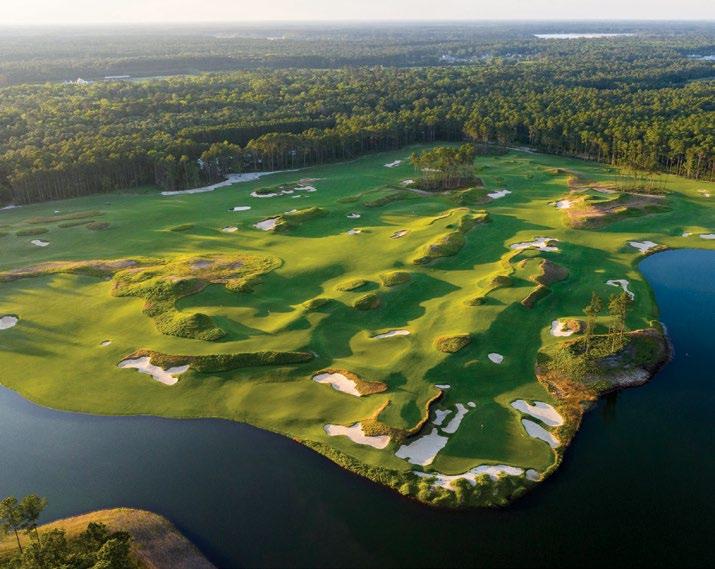
The latest addition to Palmetto Bluff allows players to choose their own adventure, while another headline-grabbing course at the community is slowly coming into focus.
for a better understanding of what the new Crossroads course at Palmetto Bluff is all about—including where its designers, Tad King and Rob Collins, found a source of inspiration—you have to travel almost 4,000 miles across the Atlantic and walk the Old Course at St Andrews. In both directions. There’s a reason why avid golfers never tire of playing the Old Course, even those local Scots who walk the grounds with clubs in tow a dozen times or more each year. The rumpled terrain seemingly offers up new discoveries during every round, and the layout famously plays just as well backwards. In fact, centuries ago the Old Course was only played in a clockwise (now backwards) direction.
Although Palmetto Bluff covers some 20,000 acres of tranquil Lowcountry in Bluffton, the resort community only had a minuscule parcel of land allocated for its latest golf project. Fortunately, the site was laden with sand, which
allowed the architects to sculpt dunes with ridges as high as 40 feet. Crossroads, the nine-hole layout they created, spans just 55 acres, but it’s reversible, which means each day the routing changes. It also boasts sprawling, ribbonlike teeing areas that encourage players to tee it up wherever they want, and expansive putting surfaces (including several greens that are dedicated for use on only one of those two routings).
The result is a layout that’s moderate in length—it tips out at 3,100 yards—but offers a vast array of playing experiences. It’s also a routing that encourages cross-country play, which means golfers can discover adventurous holes that aren’t formally outlined on the scorecard. As Collins says, it was the design team’s intention to “build a thrilling course filled with variety and loaded with shotmaking interest.” Mission accomplished.
At Palmetto Bluff, the Crossroads course joins May River Golf Club, a Jack Nicklaus Signature design open to members and guests of the property’s Montage Palmetto Bluff resort. Also in the works (slated for opening in late 2025 or early 2026) is an 18-hole layout designed by Bill Coore and Ben Crenshaw.
In the estimation of Ryan Farrow, design associate at Coore & Crenshaw, Coore wants to build “something different, something he hasn’t seen before.” Such a course will be in good company at Palmetto Bluff. —S.T
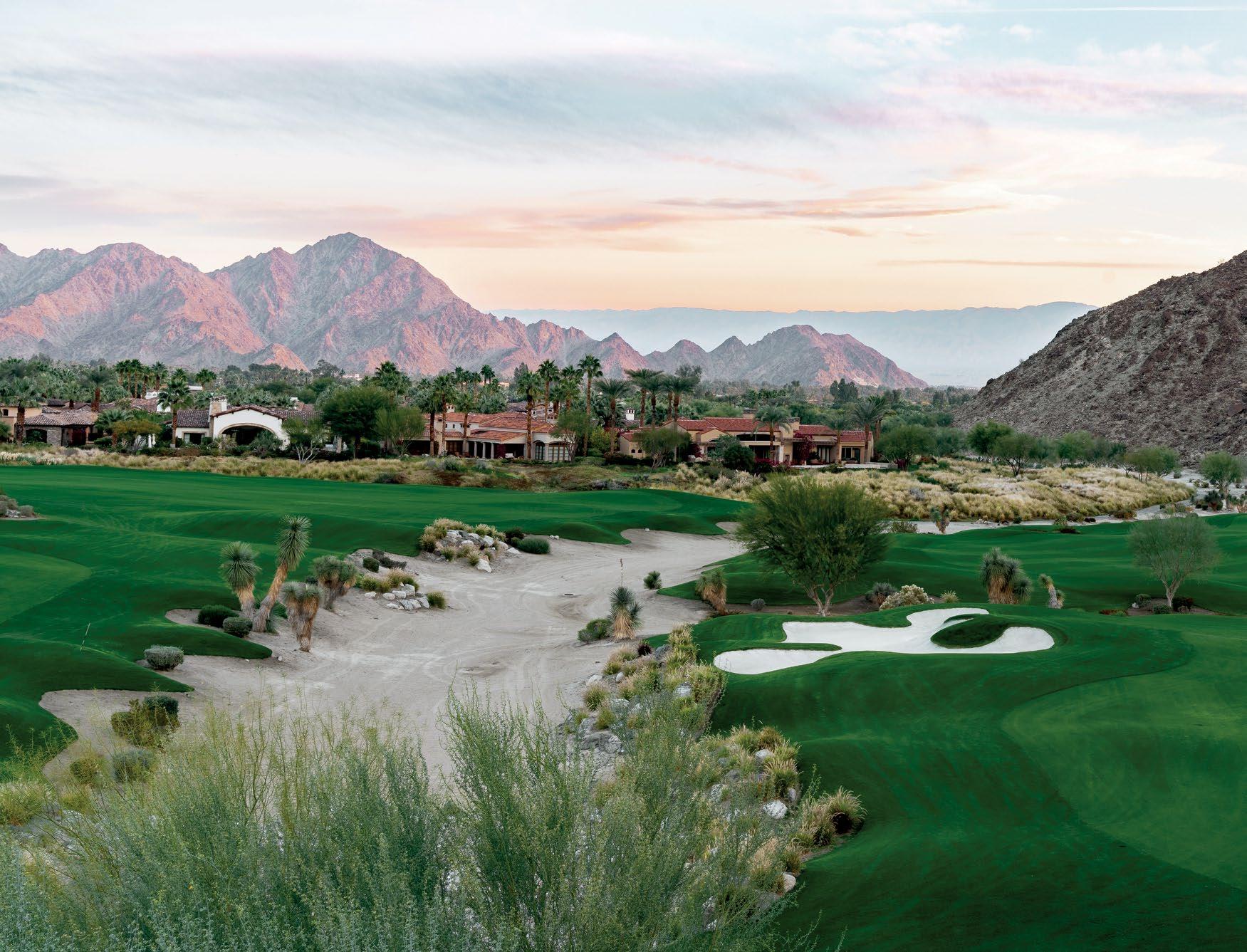

There’s never a bad time for a golf trip to the Golden State, where an unmatched variety of courses— from windswept coastal stunners to desert resort tracks—offer year-round play.
california is graced with more marquee golf courses than just about any other state. But what about the days when you can’t book (or don’t want to pay for) Pebble Beach or PGA West? Fortunately, the Golden State is also filled with under-the-radar alternatives to its world-famous courses, masterpiece municipal or otherwise open-to-the-public venues that are easier to get onto and just as easy to enjoy. Here, a few of our favorite “dupe” courses from the desert to the coast.
Everyone wants to play Torrey Pines South, the renowned municipal facility perched right above the Pacific Ocean. Instead, sail about 15 miles south to Coronado Golf Course, where many locals prefer to play at a fraction of the price (and with more available tee times). The flat, player friendly, walkable course wraps around charming Coronado Island and its harbor, with several holes directly on the water, offering perhaps the most enjoyable golf experience in town.
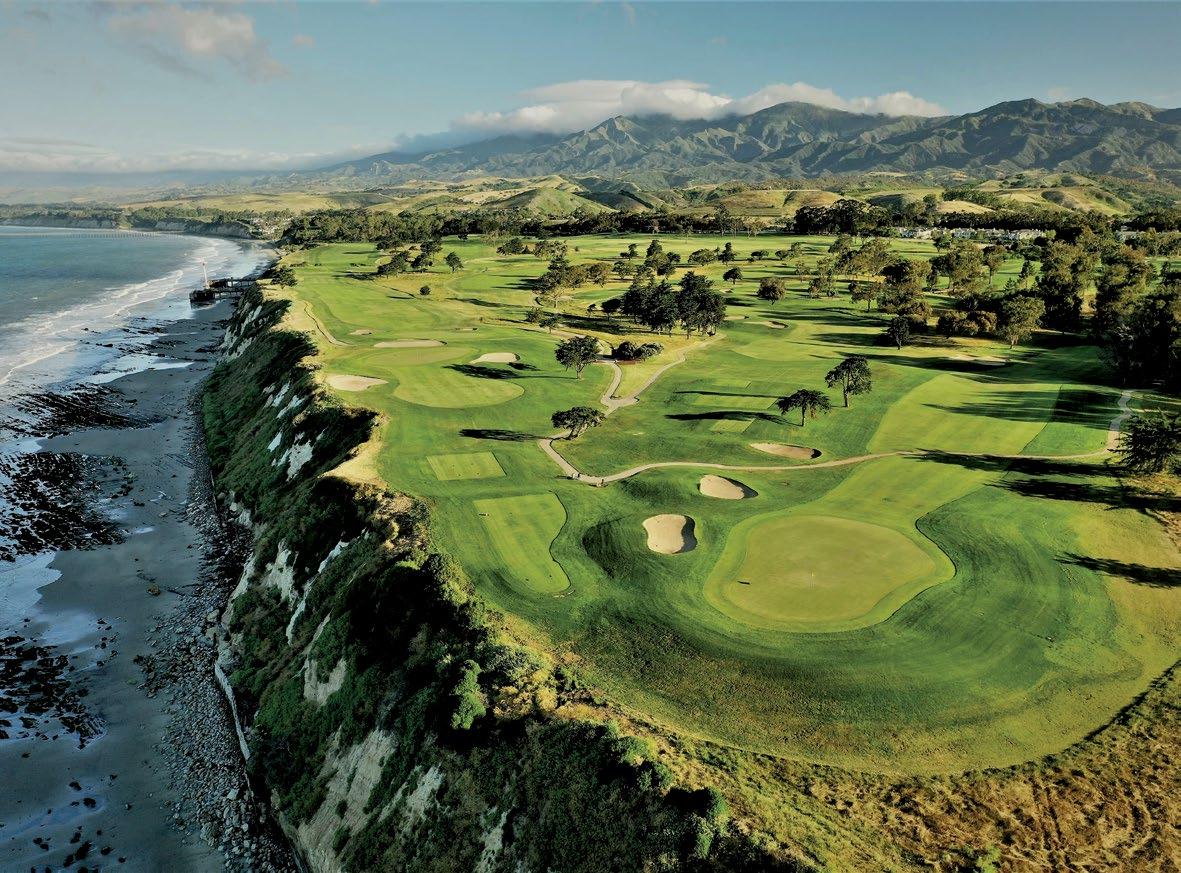

The 36 holes at the Resort at Pelican Hill in Newport Coast have rightfully garnered international acclaim. Greens fees are accordingly steep, and tee times can be hard to come by, but a great low-key alternative can be found by heading slightly down the coast and a half mile inland to San Clemente Municipal Golf Course. Each of the 18 holes at this classic from Billy Bell—whose resume includes many top-ranked Golden State courses—offers an ocean panorama. The course is rarely in outstanding condition, but it’s never in bad shape either.
L.A. is loaded with great golf courses, but almost all of them are private. One shining exception to that rule is Rancho Park Golf Course, a well-maintained municipal tract across from Fox Studios on Pico Boulevard. The course, also designed by Billy Bell, hosted 18 Los Angeles Opens in its heyday, and it still presents a solid challenge for elite golfers. But you’ll find players of every skill level at this L.A. landmark, especially at its double-decker driving range.
This gorgeous seaside town north of Los Angeles draws tourists mainly for its beaches,
historic mission, wine country, and other notable attractions. Golf is fairly low on the list of priorities, which might explain why Sandpiper Golf Club (see “Santa Barbara Soujorn”) isn’t more famous. Situated on cliffs at the edge of the Pacific Ocean, the 7,159-yard masterpiece is nothing short of spectacular, offering dramatic terrain and holes that recall those of Pebble Beach Golf Links.
If you’ve never played Pebble Beach Golf Links, you must. But you can also meander five miles up the famed 17 Mile Drive to Pacific Grove Golf Links, a walkable, scenic gem with ample ocean views and almost no photo-snapping tourists. It’s both affordable and awesome— often ranked among America’s top public courses—with gently rolling fairways on the front nine and links-style holes on the back.
The dozen or so top-notch resort courses along the Palm Springs–Indio corridor tend to cater to their hotel guests, who often play at a painfully slow pace. For a brisker round, head to Desert Willow Golf Resort. You’ll be hardpressed to find another nearby course this fun, upscale, and fantastically conditioned. Desert Willow is challenging but not unreasonably so; expect to score well and play fast. —Scott Kramer

With Sandpiper as your centerpiece, here’s where to stay, play, and savor.
Stay: The California dream is alive and well at the Ritz-Carlton Bacara, Santa Barbara, where whitewashed, red-tile-roofed villas line a coastal cliff above a sandy beach about 15 minutes north of the city. With its multiple pools, restaurants, walking trails, and outdoor adventures, Bacara is the kind of place that caters equally to couples, families with small kids, wedding parties, and just about everyone else. But it’s especially well-suited to golfers, given its location right next door to one of California’s hidden-gem courses.
Play: Sandpiper Golf Club is, like its immediate neighbor to the north, a California classic. With a Pebble Beach–esque clifftop setting, the Billy Bell design is high on drama, with several stunning oceanfront holes. Of course, this is laid-back Santa Barbara, so expect to see locals playing this first-class track in boardshorts and bare feet. You might also spot coyotes strolling the fairways, hawks and pelicans soaring overhead, and dolphins and humpback whales breaching offshore.
If rivers and rolling hills are more your thing, head out to one of the region’s top inland layouts, the River Course at Alisal in Solvang or the notoriously challenging La Purisima— nicknamed La Piranha—in Lompoc. And if you can find your way onto the Jack Nicklaus Signature Course at the private Montecito Club, don’t hesitate to take advantage of the opportunity.
Sip: After a round at Sandpiper, retire next door to the Bacara Wine Tasting Room, a cozy, library-like space, which opened in 2024 and offers an educational journey through the region’s astonishing breadth of varietals and styles. Pinot Noir from Babcock, Chardonnay from Brewer-Clifton, Cabernet Sauvignon from Crown Point—the curated selection of bottles, by-the-glass options, and tasting flights will have you planning your next trip to Santa Barbara.
Eat: Like the wine, the cuisine of Santa Barbara County has reached new heights in recent years. Bell’s—located across the street from Casa Dumetz in Los Alamos—is a shining example of that rise, having earned a Michelin star since being opened by husband-and-wife team Greg and Daisy Ryan in 2018. Also in Los Alamos, the bakery and café Bob’s Well Bread has a cult-like following (some of whom have been known to make the three-hour drive from L.A. just for the bread). In Los Olivos, the Ryans’
two-year-old Bar Le Côte serves up exceptional seafood dishes in a casual setting next door to the Brewer-Clifton tasting room. Back in Santa Barbara, find great local dishes and wines at Barbareño and Bouchon. —Bruce Wallin
cable cars, alcatraz, the golden gate bridge, and…golf ? Yes, the City by the Bay’s beauty extends to a handful of gorgeous golf courses scattered throughout the peninsula and surrounds. We spoke with Devin McDonald, concierge at the famed Fairmont San Francisco, to find out a few of his favorite urban golf experiences in the city. One initial tip: Don’t wait to call your concierge. “Guests will try on their own to make the reservations,” he says, “but it can be quite competitive.”
The host course of the 2020 PGA Championship is “absolutely my top choice for guests who want to play in San Francisco,” McDonald says. “It’s owned by the city but managed by the PGA Tour and was originally designed by William Watson and Sam Whiting—the same designers who did the Olympic Club.” Harding Park plays through cypress groves along Lake Merced, offering “a beautiful 18 holes and a great experience. The premier public course in San Francisco.”
McDonald can help guests get into this historic private club, which opened in 1922 and was

redesigned by Alister MacKenzie in 1928. Gil Hanse led the most recent update to the course, in 2022, which retains its air of exclusivity. “Just about any time I’ve reserved here, the guests come back and say, ‘We were the only ones there!’ It’s a private course, and they keep it very, very private.”
“Even more difficult” to get into than Lake Merced Golf Club, the legendary Olympic Club features two 18-hole courses and a ninehole executive track, all in a stunning setting between Lake Merced and the Pacific Ocean. “It’s gorgeous, but it can get windy in that part of the city.” No matter the weather, if you have an opportunity to play at the Olympic Club, you take it.
A “very historic” course in “one of the nicest parts of the city,” near the Golden Gate Bridge. “It dates back to 1895 and is one of the oldest courses on the West Coast.” Though it’s “on the shorter side,” at about 6,500 yards from the tips, the setting within a former Army base—now a national park—is “gorgeous, with great views, and the wind doesn’t whip you as much as it does at the Olympic Club or Lake Merced.”
“My ace in the hole” when Harding Park is booked up and guests want more of a championship course experience than the Presidio offers. “It’s about a 35-minute drive from the hotel, across the Bay Bridge into the East Bay. There’s a Greg Norman golf course and a beautiful winery there. Guests love the experience.”
The rapidly expanding experiential golf company opened in Burlingame, just south of the city, in late 2024. “I’ve been to Topgolf in Arizona and Las Vegas, and who would think Topgolf could compete with all the things there are to do in Vegas? It’s a great activity and a huge hit here with the view of the bay in Burlingame. Fun for all ages.”
Best known as the home of the San Francisco Giants, Oracle Park transforms once a year (typically for a few days in the fall) into a oneof-a-kind nine-hole golf course. “Oracle Park is one of the top baseball parks in the country, and to be able to turn it into a golfing event and to tee off facing the bay, it’s a really fun experience. I wish they did it more often!” —B.W.

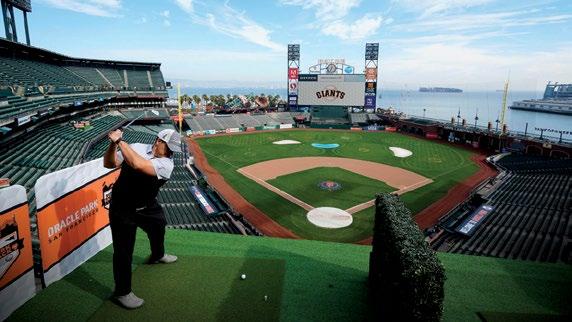

Half Moon Rising
Northern California’s coastal mountains and redwood forests inspired the recently completed renovation of the Ritz-Carlton, Half Moon Bay. But when you’re sipping a single malt on your balcony—while looking over the blufftop 18th hole of the resort’s Old Course and listening to the resident bagpiper serenading the setting sun—it’s easy to lose sight of the fact that you’re just one hour south of San Francisco.
The British Isles influences at the Bay Area’s only oceanfront golf resort have been evident ever since the debut of the Arnold Palmer– and Francis Duane–designed Old Course at Half Moon Bay Golf Links in 1973. The property added its Ocean Course, designed by Arthur Hills, in 1997. In 2024, the grand hotel that sits between the two courses emerged from a transformation by the hospitality experts at Hirsch Bedner Associates. The redesign touched all 261 rooms and suites at the Ritz-Carlton, as well as the spa and two restaurants, offering several fresh perspectives from which to enjoy the timeless views. —Robin Barwick
At this San Diego spa retreat, wellness and golf come together in true California fashion.
there won’t be any hot dog or beer for me at the turn today. Instead, my back nine at the Havens Country Club will be fueled by the contents of a small lunch bag: a gluten-free chicken Caesar wrap (with no Caesar dressing), an apple, and a flourless chocolate cookie, all of which will be counted toward my 2,500 calories for the day.
I am here, in San Diego’s North County, for a three-day wellness program at the revered Cal-a-Vie Health Spa. Set on 400 acres of chaparral hills, about seven miles inland from the Pacific Ocean, Cal-a-Vie is a European-inspired retreat where guests— many of them repeat visitors—come to get healthy. Depending on the person, that can mean anything from shedding a few pounds or recovering from an injury to the simple act of recalibrating in an undeniably stress-free environment.
Unlike some of its European counterparts, Cal-a-Vie is not a strict boot camp. A casual California attitude pervades the tranquil grounds, where you’re never too far from a

burbling fountain or a relaxing nook with views of lavender-covered hills. Within this sanctuary, a team of practitioners and planners helps guests create customized schedules that can be as hard-core or low-key as they choose. There’s no need to give up caffeine or flush out all your toxins; you pick the wellness path you want to follow—and then do your best to follow it.
The many offerings at Cal-a-Vie include a revolving roster of fitness sessions, morning hikes, massages, consultations, therapies, and cooking classes. Calories are also burned through competitive sport, most frequently on the resort’s pickleball and tennis courts. Not as commonly incorporated into routines is Cal-
Cal-a-Vie Health Spa isn’t the state’s only wellness retreat to pair well-being and golf. Set on a former private estate in Rancho Mirage, Sensei Porcupine Creek features a full slate of wellness programs, an 18-hole golf course in the foothills of the Santa Rosa Mountains, and a clubhouse menu designed by chefs at the resort’s Nobu restaurant.

a-Vie’s most unexpected amenity: an 18-hole private golf course reserved for members and resort guests.
The Havens Country Club, situated next door to Cal-a-Vie, is owned by the same Houston-based family, who are also building a winery and private community across the street. The golf course plays along both sides of a seasonal creek lined with old sycamores that bend, bow, and twist from one bank to the other. Rocky, brush-covered hills rise on either side of the canyon, where the lack of fellow golfers contributes to a Zen-like environment. It’s the kind of place where you might forget to mark your score, too pleasantly relaxed (or
perhaps too hungry) to notice or care.
Upon finishing my round at the Havens, I find a driver from Cal-a-Vie waiting for me by the pro shop. He casually suggests I go upstairs to the newly renovated clubhouse restaurant for a beer and a bite to eat. As tempting as the proposition sounds, I stay the course, heading back to the resort for an afternoon Pilates class and a precisely prepared dinner. —B.W.
carlsbad, in San Diego’s North County, is the under-heralded heart of golf in California. Not only is the city home to Callaway, Taylormade, and Cobra Golf, it’s also the setting for one of the state’s top golf resorts in the Park Hyatt Aviara.
Overlooking the Arnold Palmer–designed Aviara golf course, the Batiquitos Lagoon, and the Pacific Ocean, the resort completed a $60 million renovation only a couple of years ago, one that included the addition of a Miraval Life in Balance Spa and the golf club’s Ember & Rye steakhouse by chef Richard Blais. The property also features a world-class tennis and pickleball center, hiking trails, and even a Topgolf Swing Suite. After a day on the Palmer course, head to the suite to play virtual golf games—or “zombie dodgeball”—and order drinks and sushi from the adjacent lobby bar. —B.W.

Arnold Palmer is more often associated with Pennsylvania, where he grew up, or with Florida, where he owned the Bay Hill Club. But Southern California held a special place in his life and career.
By Robin Barwick
arnold palmer formed a lasting bond with Palm Springs in Southern California’s Coachella Valley. The winter climate in the resort town is made for golf, and Palmer played particularly well there, especially in the Bob Hope Desert Classic (now called the American Express).
“The ‘Hope’ was one of my favorite tournaments,” wrote Palmer in his autobiography, A Golfer’s Life. “I always seemed to find my game there and won the tournament a record five times.”
Palmer also had personal ties to Palm
Springs, including a close friendship with Bob Hope himself, but his success in the desert predated his friend’s namesake tournament. In 1959, Palmer won the precursor to the Bob Hope, the Thunderbird Invitational, on a golf course where he often scored low—and where he would become a member—the famous Thunderbird Country Club in Rancho Mirage. The golf course at Thunderbird was built in 1950 on land that had been a dude ranch. Among its founding investors were Hope and Bing Crosby, whom Ben Hogan called crazy for building a golf course out in the sticks of the Coachella Valley. Hogan turned out to be the one out of touch with reality. Today, there are more than 130 golf courses in the Coachella Valley, and it all started with Thunderbird. In its day, the club held so much cachet that Ford named its answer to the Chevrolet Corvette after it, and the first Thunderbird to roll off the production line was presented to the club.
Palmer’s connection to Palm Springs would continue for decades after his initial victory. In 1988, the Arnold Palmer Private Course—part of the nine-course PGA West community in La Quinta—joined the rotation for the Bob Hope Desert Classic. Most famously, it was on the Palmer Private Course in 1999 where David Duval shot a 59, 13 under par, to win. It was the third 59 in PGA Tour history, but the first in a final round. Duval
described it as “the easiest round of golf I ever played.”
More or less next door to PGA West, the stunning desert oasis of Tradition Golf Club in La Quinta, with a backdrop of the Santa Rosa Mountains, would become Palmer’s winter home. With its palm trees, shimmering lakes, and white-sand bunkers, the club’s manicured 18-hole Championship Course, completed in 1996, is widely regarded as one of Palmer’s finest designs. “This land is something really wonderful,” said Palmer, who was later named chairman emeritus at the members-owned club. “It bends and curves beautifully, set against the mountains, giving the golf course lots of drama.”
In the men’s locker room at Tradition— named “Deacon’s Den” in honor of Palmer’s father—Palmer’s locker remains there as he left it.
Pete Dye was already known for designing tough golf courses before he created the Stadium Course at PGA West in 1987. PGA Tour golfers had not forgiven him for his monster Players Stadium Course at TPC Sawgrass, in Florida, so they were filled with trepidation when Dye declared he was going to “build the hardest damn golf course in the world” in Southern California’s Coachella Valley. Turns out, the course was so difficult that it lasted only one year as a PGA Tour venue. It returned to the tour in 2016, albeit in a gentler form; but now, following a Tim Liddy–led renovation completed in late 2024, the beast is back.
Liddy returned the Stadium Course to Dye’s original design, with particular emphasis on its green complexes. Based on the results at the most recent American Express, the project was a success: The average score over four rounds was 71.3, up two shots from 2024, which is a notable difference at the tour level. —R.B.

Though it may have a more famous neighbor on the Monterey Peninsula, this Tom Watson design along Asilomar State Beach is a bucket-list destination in its own right.
just as the other great links courses of St Andrews live in the shadow of the Old Course, so a number of stunning layouts on the Monterey Peninsula enjoy a more tranquil existence behind figurehead Pebble Beach Golf Links. The Links at Spanish Bay is a perfect illustration.
Certainly one of the world’s greatest public courses, Spanish Bay ranks alongside Bandon Dunes and Whistling Straits for dune-scape drama. Weaving between the dunes and indigenous pines, the course marked Tom Watson’s heralded design debut, in collaboration with Sandy Tatum and Robert Trent Jones Jr.
From Pebble Beach, take the famous 17 Mile Drive northbound for less than four miles, past Cypress Point and Spyglass Hill, through the Del Monte Forest, and up to Spanish Bay, where the golf course is tucked between the rocky Asilomar State Beach and the elegant Inn at Spanish Bay. —R.B.
Five U.S. cities for a quick golf getaway.
the senior u.s. open at Newport Country Club in 2024 served as a reminder that the Ocean State—and the greater Newport area, specifically—is riddled with exceptional golf courses. Better still, many of them are public.
A 16-minute drive northeast of downtown Newport brings golfers to Newport National (top right), an Arthur Hills design that rambles across 200 acres and abuts protected wetlands and bird sanctuaries. The 7,244-yard layout is mostly buffeted by the wind, but its undulating greens and lush, native grasses lining the edges of playing corridors keep golfers in check. Peakseason greens fees ($175) may seem high given the lack of a driving range and the fact that the clubhouse is a modestly outfitted double-wide; however, Newport National’s immaculate course conditions justify the cost of entry.
Green Valley Country Club, located six miles north of downtown Newport, is the epitome of parkland golf in New England. In the mid-1990s, the club became the state’s first public course to host both the Rhode Island Amateur and the Rhode Island Open. Another six miles to the north, Montaup Country Club offers a challenging test with its narrow, treelined fairways and small, raised greens—two features that reflect the 6,538-yard layout’s 1920s origins.
Once the mansion of Alfred Gwynne Vanderbilt, the Vanderbilt (bottom) from Auberge Resorts sparkles for its sense of history and its location a short walk from the shops and restaurants that line Thames Street. The rooftop deck and whiskey room make for an ideal retreat following a day spent out on the links.
Castle Hill Inn is spread out across more acres (40) than there are guest rooms (33). The Relais & Châteaux property is positioned on a point about four miles from downtown and boasts half a mile of private shoreline. Its gently sloped lawn, outfitted with Adirondack chairs, is the best place in town to relax by the water.
Local and uber-seasonal ingredients dictate the ever-changing menu at TSK (Thames Street Kitchen), where mission-cut rib eyes are the can’t-miss attraction. As cocktails go, TSK takes a refreshingly simple approach, grouping its libations into three categories: martinis, Negroni drinks, and fancy drinks. Order the mezcal drink. Better yet, order two.
Adventurous diners will get their fill at Cara, the fine-dining restaurant at the Chanler, a boutique hotel at the end of the cliff walk. Chef Jacob Jasinski produces five- and eight-course blind-tasting menus comprising avant-garde dishes that change daily. The kitchen team presents the fare tableside to explain each dish.


valhalla was the great hall of Norse mythology, where the souls of brave Viking warriors banqueted with the gods. Valhalla Golf Club (right), located 20 miles east of Louisville, has a mythical status all its own. The Jack Nicklaus design opened in 1986 over 487 acres of rolling terrain, and it has hosted three major championships and the Ryder Cup in the years since.
Getting onto Valhalla and the private Lake Forest Country Club—Kentucky’s only Arnold Palmer design—should be a priority for golfers heading to Louisville. Also on the playlist is Quail Chase, perennially ranked as the city’s best public facility. With 27 holes, the club can be played as two 18s, West and South.
Two other favorites of local golfers are the sibling Fuzzy Zoeller designs, Covered Bridge and Champions Pointe, just 15 minutes across the Indiana border in “Kentuckiana.” For a trip back in time, head to Shawnee, on the banks of the Ohio River in Downtown Louisville, which hosted the 1932 U.S. Amateur Public Links, or to the nine-hole Cherokee, which dates to 1895 and is one of the oldest munis in the nation.

Louisville doesn’t have a golf resort per se, but the original 21c Museum Hotel (bottom) is convenient to several courses—and far cooler than your average golf resort. Combined from five 19th-century warehouses, the art-centric hotel includes nearly 10,000 square feet of exhibition space, along with Proof on Main, one of the city’s best restaurants.
Hotel Distil is a recent addition to Downtown’s revived Whiskey Row, once the epicenter of the bourbon industry and now the city’s touristic heart. Behind its original bourbon-barreling warehouse façade, the Marriott Autograph Collection hotel is modern and swank. Sample its huge whiskey list at the open-air, second-floor bar and the standout Repeal Oak Fired Steakhouse, where meat is cooked over a live fire of bourbon barrel staves.

Grab a table at the historic Brown Hotel, where Louisville’s signature dish, the “Hot Brown,” was created as a hangover remedy in 1926. An open-face sandwich broiled brown in a sauté pan, it layers hand-carved turkey, Mornay sauce, cheese, bacon, and tomatoes.
For a contemporary spin on Southern fare, 610 Magnolia from three-time James Beard nominee Edward Lee is the city’s most acclaimed eatery. Enjoy dishes such as local duck breast with Carolina dirty rice or charred okra and hoisin sauce.
with over 1,200 golf holes spread across more than 50 courses, Scottsdale is a golfing utopia—especially during the desert city’s always agreeable spring season. The many choices in the 184-square-mile enclave outside of Phoenix can be overwhelming, but the ideal golf getaway begins with a check-in at the Arizona Biltmore.
Staying at the Biltmore opens up playing opportunities at both of the Arizona Biltmore Golf Club’s courses, including its newest offering, the 6,669-yard Estates Course. Designed by Tom Lehman, the course will recalibrate your assumptions about desert golf. The vast majority of its almost 100 acres are grassed, presenting plenty of opportunities for creative shotmaking. “You only have a forced carry when you choose to have one,” Lehman says.
Elsewhere, the Jay Morrish–designed South Course at the Boulders Club (top) takes players through the cacti and alongside imposing rock formations, yet its quick-rolling greens demand utmost attention. Less than 20 minutes to the south, Troon North Golf Club offers two championship-caliber courses (both designed by Morrish and the late Tom Weiskopf), which feature bentgrass greens and include a forecaddie service in the high season. “We’re so fortunate to have two spectacular courses, but they’re not the easiest to play,” says general manager Brian Thorne. “Our forecaddies add to the experience.”

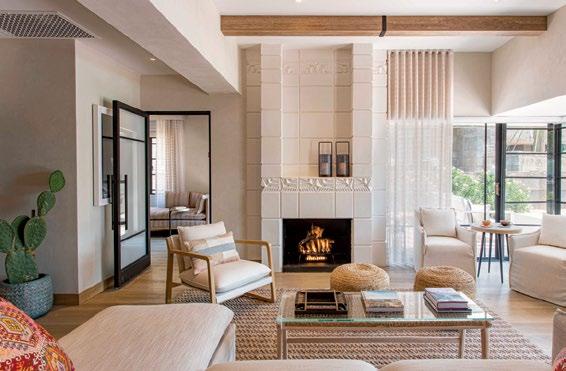
Christened the Jewel of the Desert, the Arizona Biltmore (bottom) was once a by-invitationonly oasis that attracted Hollywood stars such as Marilyn Monroe and Clark Gable. Today, the 705-room resort boasts block-style architecture inspired by Frank Lloyd Wright and a clublike ambience that recalls the Rat Pack. (Frank Sinatra and Dean Martin reportedly staged impromptu performances at the lobby bar.)
Set just a half mile from Pinnacle Peak and the nature area’s hiking trails, Four Seasons Resort Scottsdale serves as an ideal basecamp for those looking to combine rounds at Troon North with a bit of outdoor adventure. The property’s luxuriously appointed casitas, suites, spa, and poolside cabanas make it an equally attractive abode for those just looking for some R & R.
Helmed by the James Beard Award winner Chris Bianco, Pizzeria Bianco: Town & Country specializes in artisan, wood-fired pizzas, but don’t sleep on Francesca’s meatball sandwich during lunchtime hours or the Two Wash Ranch chicken cacciatore at dinner.
Offering a five-course seasonal tasting menu, Scottsdale’s Atlas Bistro hangs its proverbial chef’s toque on ingredients that are local, organic, free-range, wild-caught, and hand-foraged. The restaurant is BYOB, but you can purchase your beverage of choice at the adjacent Atlas Wine Shop.
Virginia
as the second capital of the Virginia Colony, Williamsburg has long been a pilgrimage site for American history buffs. In-tune golfers know that the independent city also serves as an ideal home base for golf getaways to Virginia’s historic triangle.
Those who stay at Williamsburg Lodge or Williamsburg Inn are positioned on the perimeter of the world’s largest living history museum, as well as a short walk from the Golden Horseshoe Golf Club, home to two championship-caliber courses and a new short course called the Shoe. While the latter is an appealing blend of 40- and 50-yard holes that can be challenged with a putter and longer holes that require more precise attacks with a wedge, it’s the golf club’s original Gold Course (top)—with its captivating layout, wellmaintained grounds, and Augusta National–like vibes—that shines brightest.
Twenty minutes to the west, the semiprivate Williamsburg National offers two exemplary courses of its own. The property’s flagship routing, the Jamestown Course, was conceived by Nicklaus Design 30 years ago, while its younger sibling, the Yorktown Course, is the handiwork of architect Tom Clark. The 7,018-yard routing features a memorable back nine, comprising three par 3s, three par 4s, and three par 5s.
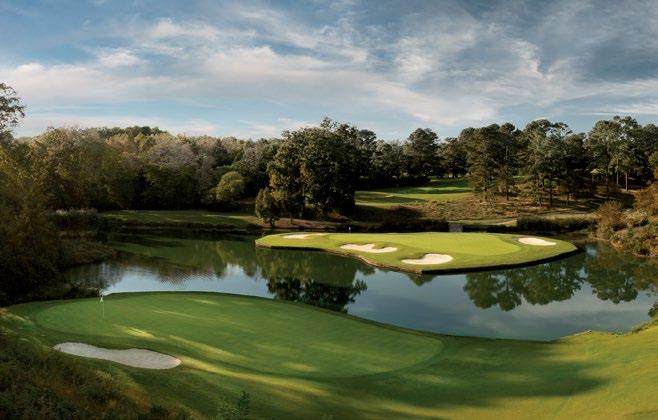
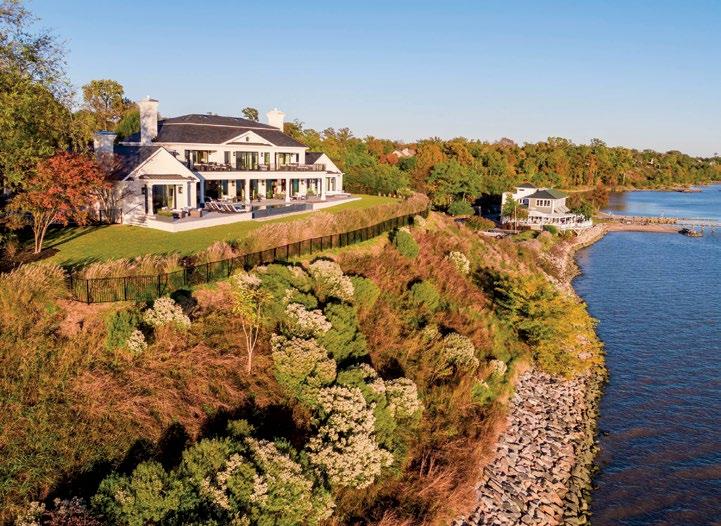
Staying at Kingsmill Resort (bottom), set along the James River, is akin to reading a chooseyour-own-adventure book. The 2,900-acre property is home to 330 guest rooms and suites, five vacation cottages, and three private residences, the newest of which offers a private chef and other exclusive amenities. Booking a stay here is also the only way to gain entry onto the resort’s two semiprivate courses, the Plantation Course and the River Course, the latter of which hosted a PGA Tour event for more than 20 years.
The Williamsburg Inn is home to two standout restaurants. At the Terrace & Goodwin Rooms, dishes might include a honeydew gazpacho accented with crispy prosciutto, cantaloupe salsa, lime gel, and chili oil. Rockefellers, by contrast, is known for its steaks and other cuts of meat, as well as a brioche-crusted Alaskan halibut that’s a consistent crowd-pleaser.
if your vegas adventure is more about green grass than green felt, base yourself at an MGM Resorts property. Guests of the various resorts, which include Bellagio and Aria, are eligible for rounds at the uber-exclusive Shadow Creek (right).
The Tom Fazio masterpiece opened in 1990 at a reported cost of $47 million—a price that the designer once attributed to “total site manipulation.” In other words, all the rolling hills, the contours, and the mounding that you’ll see are man-made. “The course is unbelievable— it’s an amazing facility and in great shape,” says PGA Tour pro Ryan Moore, who lives in Las Vegas. “If you get the chance to play Shadow Creek, you have to go. It will be one of the best golfing experiences you’ll ever have.”
Fazio designed another Vegas classic that holds pride of place in an unlikely setting—just off the Strip. Tucked behind the Wynn and Encore towers, the Wynn Golf Club bounds over and through ridges and valleys, offering an implausibly serene experience in the heart of the city.
Farther from the Strip, Moore recommends a trip to Paiute Golf Resort, which is home to three Pete Dye–designed layouts. “They’re some of the best public-access golf courses anywhere,” he says.


Shadow Creek access is one of the many perks available to guests of Bellagio Las Vegas (bottom), where the elegant Spa Tower rooms and suites recently benefited from a $110 million renovation.
A detour to the city’s Arts District brings you to Esther’s Kitchen. Equipped with an open-fire grill and an $85,000 bread oven, the restaurant serves inventive seasonal fare with a strong Italian influence. Make sure to order at least one of the nine house-made pasta dishes.
Shared plates and Mediterranean flavors define the culinary journey at HaSalon at the Venetian Las Vegas. Carnivores will delight in beef carpaccio pounded thin tableside, bone-in rib eyes, and lamb kebabs, but the restaurant’s “vegetable creatures” are equally exciting and wildly inventive—think charred beetroot carpaccio and desert peach and ricotta bruschetta.
CONTRIBUTORS: Larry Olmsted & Shaun Tolson

From arts and culture to the great outdoors:
Local experts share five ways to explore Hilton Head Island.




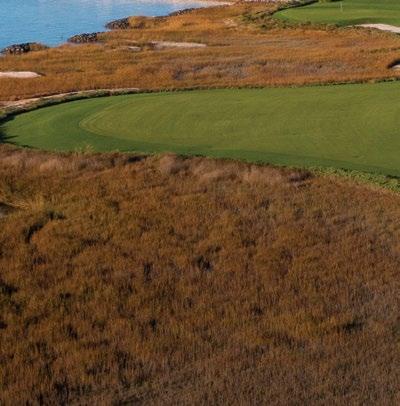
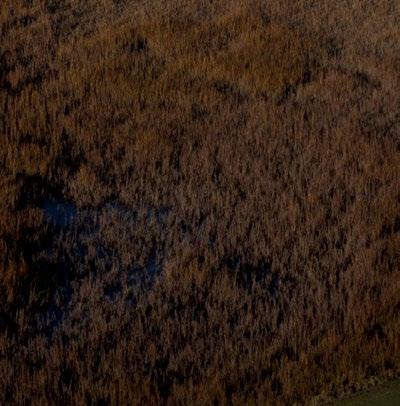


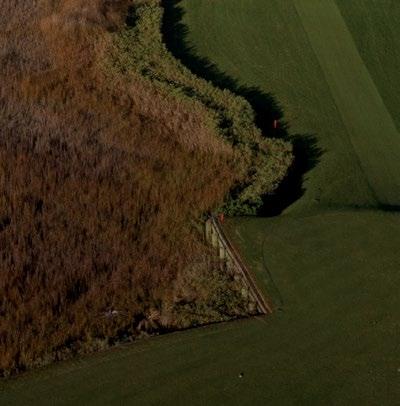
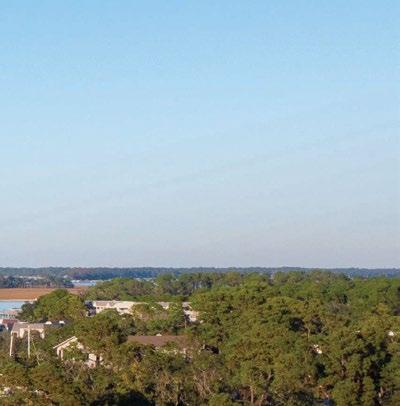
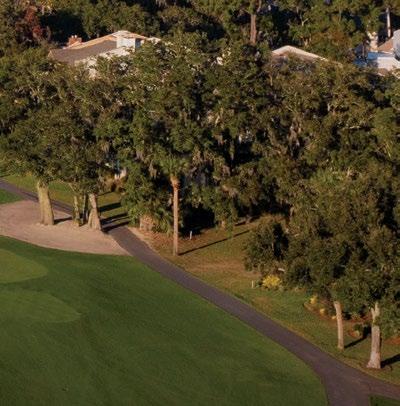
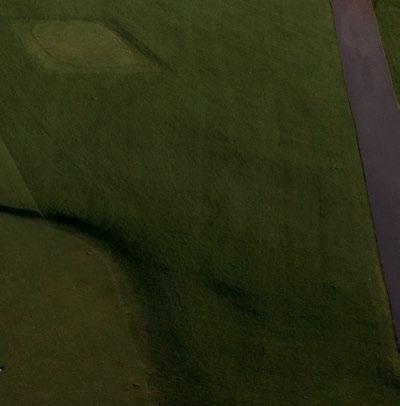
Sourcing locally is key to Hilton Head Island’s sustainability— and to the fresh flavors of its famed Lowcountry cuisine.
Andrew Carmines wants people to know where their food comes from. Growing up, Carmines worked around the shrimp boats that supplied his parents’ restaurant, Hudson Seafood House on the Docks, the oldest on the island. “We had 25 or 30 boats that would come and go, and we’d chip ice into the holds and head the shrimp,” Carmines recalls. “Even way back then, I thought it was really cool that we were bringing shrimp off the boats and serving it to customers in the restaurant.”
When Carmines took the helm of Hudson’s in 2006, things had changed. “Imports had flooded the market and driven the price of shrimp way down,” he says. “My parents were buying some shrimp from the shrimp boats, but only if it was really convenient.” The first order of business, says Carmines, was to mend fences with the different boats and start sourcing locally as much as possible. After that, he and his team built a
seawater hold at their dock and began shedding out softshell crabs on site. “People saw the softshell crabs, and they just sort of flipped,” Carmines says. “We were watching those crabs 24 hours a day. People got to see what that kind of dedication looks like.”
Oysters came next. Carmines learned everything he could about oyster farming and secured permits to put grow cages in nutrient-rich Port Royal Sound, a 12-minute boat ride from Hudson’s. Today, Shell Ring Oyster Company harvests upwards of 850,000 oysters each season. Soon, visitors will be able to get out onto the water to tour the farm and slurp Carmines’ briny bivalves, freshly shucked.
“People want a relationship with their food,” Carmines says. “Plucking an oyster out of the water and eating it? If I can give people that opportunity, that’s an experience they’re going to cherish for a very long time.”

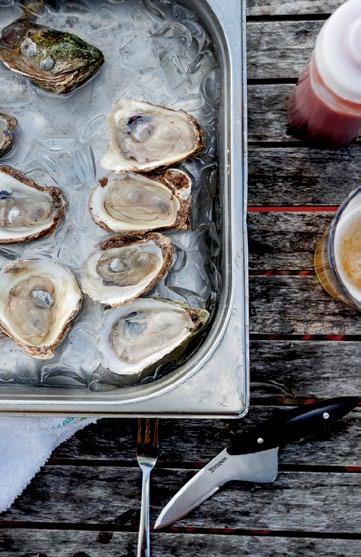
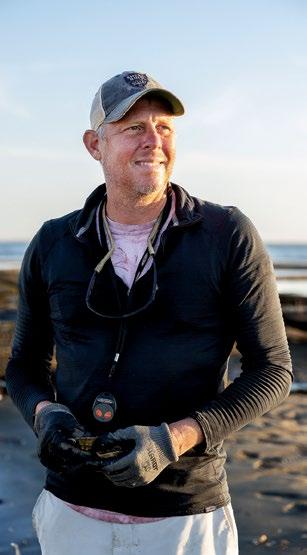

PRO TIP
“Definitely go out throwing the cast net for shrimp. My cousin has a company called May River Excursions, and he takes people out to do that. Then come to Hudson’s for the sunset.”
—Andrew Carmines
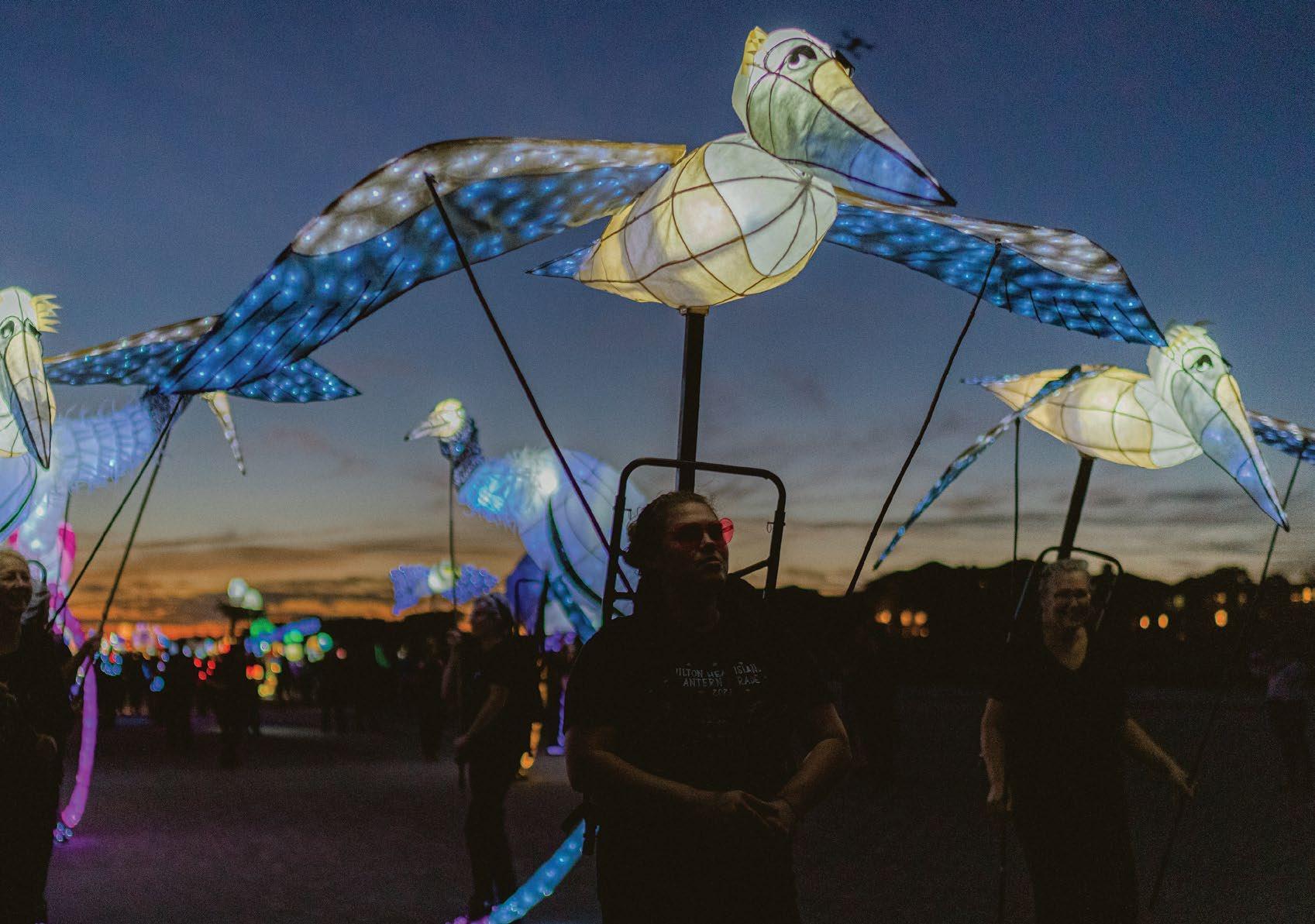



“Get some friends together and take a golf clinic before grabbing bikes and heading to Quarterdeck, right next to the iconic Harbour Town lighthouse, for lunch.” —John Farrell

Biking, boating, beachcombing, tennis, golf— the options are endless on Hilton Head Island.
As director of sports operations at The Sea Pines Resort, John Farrell knows a thing or two about being active on Hilton Head Island.
“I always say that when you get here, take the batteries out of your remote control,” Farrell says.
“There’s so much to do outdoors on this island, and it’s all right at your fingertips.”
Whether that means going for an early morning run on the beach, biking the island’s 60-plus miles of paved trails, kayaking its serene Lowcountry waterways, or improving your doubles game at The Sea Pines Racquet Club, the outdoor opportunities are endless on Hilton Head Island. “There’s really nothing missing,” Farrell continues.
“If you do it right, you’re going to go home tired. But it’s a great tired,
because it’s all really healthy.”
Hilton Head Island is probably best known for having more than 20 championship golf courses, many of which open to the public, including Oyster Reef, Palmetto Dunes, and Sea Pines’ iconic Harbour Town Golf Links and Heron Point by Pete Dye. “We have a very comprehensive, very fullcircle golf experience here,” Farrell says. “We have play for beginners who don’t even know which end of the club to hold, and we host the signature RBC Heritage event on the PGA Tour for the best players in the world. We’ve gone to great lengths to make sure we have a place to play for all ability levels, from families to collegiate players to new players that want to learn and develop skills for a lifetime.”

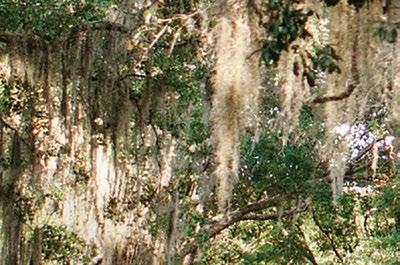
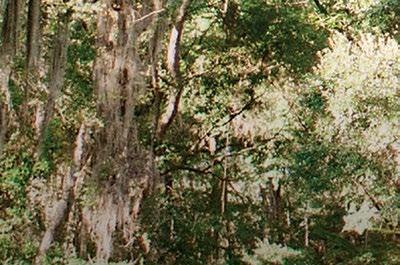
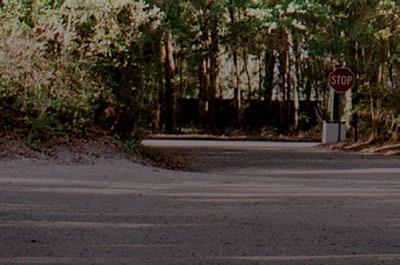
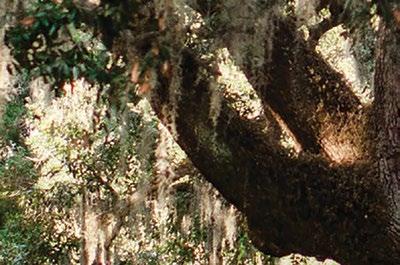
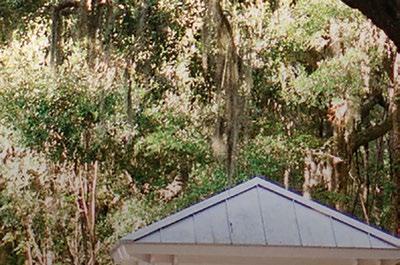
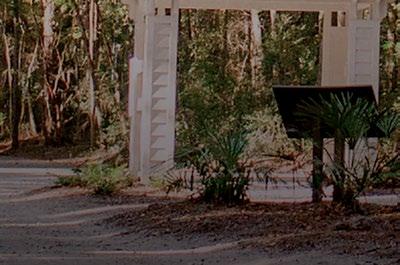
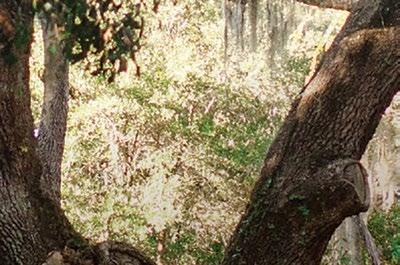

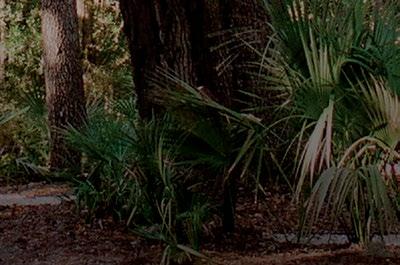



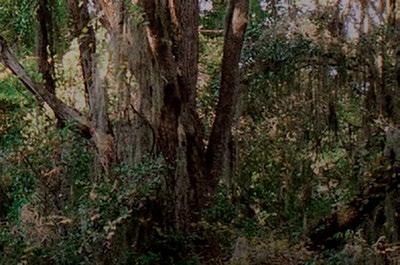







A rich heritage and Gullah Geechee traditions infuse the Hilton Head Island experience.
Despite its pivotal role in American history, Hilton Head Island’s Historic Mitchelville Freedom Park remains largely unknown outside of the region. Ahmad Ward, the park’s executive director, is leading an effort to change that.
When the Union Army captured Hilton Head Island in 1861, plantation owners fled, leaving behind hundreds of enslaved people who were considered “contraband” of the Civil War. A year later, Union general Ormsby Mitchel established what became the first town of self-governing, formerly enslaved people in the United States. Mitchelville, as it was called, soon became a thriving community of Gullah Geechee people—most with roots in West Africa—complete with rows of wooden homes, churches, and South Carolina’s first mandatory school system.
“Mitchelville residents went from being property to owning property,” Ward says, “It was the first time that Africans in America
could feel like citizens without fear of reprisal.” The lush, 36-acre landmark features building replicas, walking trails, and a pier overlooking Port Royal Sound. A visitor center, interpretive exhibits, and classroom space are in the works. “Even though this story is steeped in African American culture, its major themes are freedom, democracy, citizenship, and opportunity,” says Ward. “And those are themes we can all relate to.”
Lola Campbell, an attorney who can trace her Gullah heritage back six generations, is on her own mission to promote island history. In 2022 she opened Binya, a chic little boutique where she sells jewelry, art, and homewares made in the Lowcountry, as well as offering workshops, tours, and celebrations of traditional foodways. “Being isolated on these Sea Islands is really what allowed us to keep a lot of our culture close,” Campbell says, “Binya is a store, but it’s a cultural experience


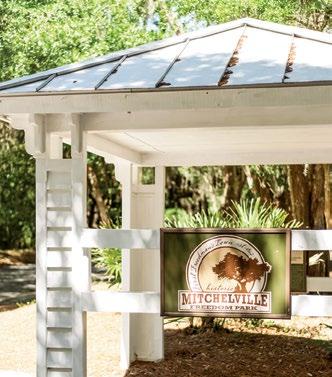
“Take a walk through Historic Mitchelville Freedom Park and then stop by Binya—everyone who comes in here ends up having a conversation with me, my mom, or my sister about Gullah culture. Afterwards, have lunch at Mama Joy’s Kitchen, where you can get some good, Gullah soul food.” —Lola Campbell

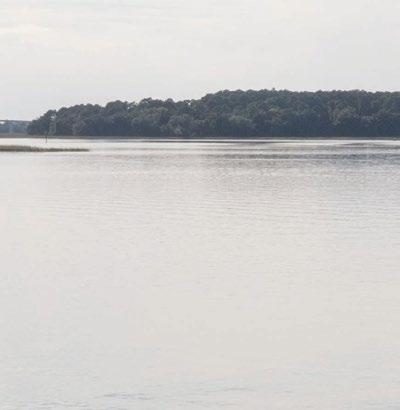





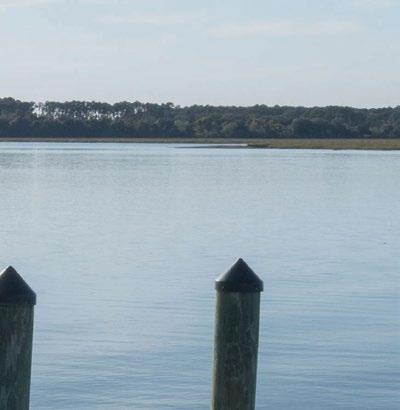


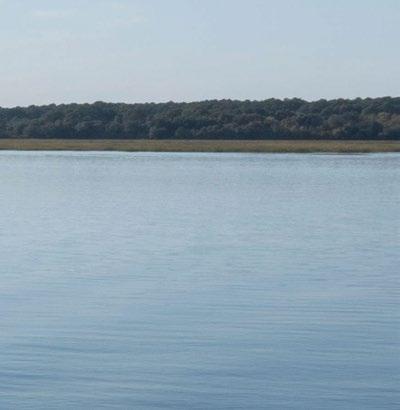
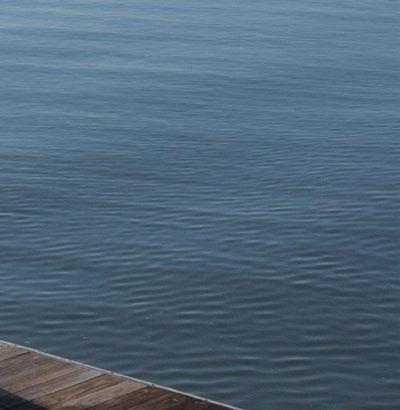



“I love seeing shows at the Tiki Hut. It’s right on the beach, and it just has that fun, vacation feeling. I’d also recommend Kind of Blue and Ruby Lee’s. Both are great venues that put their own spins on the island’s live music scene.”
—Dave Masteller

From live jazz to culinary festivals, Hilton Head Island has become a Lowcountry capital of arts and culture.
When Dave Masteller’s father, Bob, opened a jazz supper club on Hilton Head Island in 1999, people thought he was crazy to take that kind of a risk. “The island had more of a Jimmy Buffet-onthe-beach kind of music scene back then,” Masteller says. But the elder Masteller and his wife, Lois, cultivated a following among Hilton Head Island locals and visitors alike, showcasing jazz legends like Freddy Cole, Ellis Marsalis, Bucky Pizzarelli, and the late, great George Shearling.
“He put Hilton Head Island on the map for jazz,” Dave Masteller says. “It’s cool to see people who were never really familiar with jazz come in and love it.”
Today, the Jazz Corner features live jazz seven nights a week, all year long. Sundays are for Deas Guys, a popular Motown and R&B band, while the club’s
signature, New Orleans–style ensemble plays every Tuesday, with Masteller on bass. “We also like to bring in Grammy nominees and young, hip musicians who are starting to make their mark,” says Masteller. “We give people the chance to hear a variety of musicians in a small room with great acoustics while they’re on vacation on Hilton Head Island.”
In the 25 years since the Jazz Corner opened, Hilton Head Island’s cultural scene has blossomed.
“There are outdoor concerts in the parks, and you can always hear live music somewhere,” says Masteller. “We’ve got the Wine and Food Festival and the Burgers and Brews Fest, and there are art galleries and art walks and performances,” he continues. “I’ve been to a lot of great places, but I’ve never seen Hilton Head Island with so many things to do at any given time.”




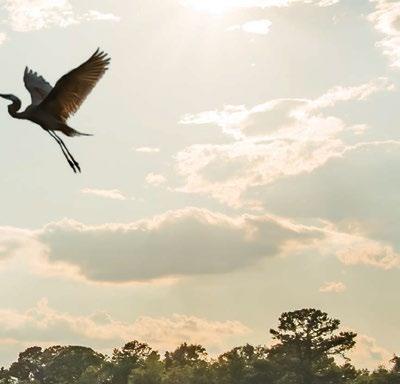
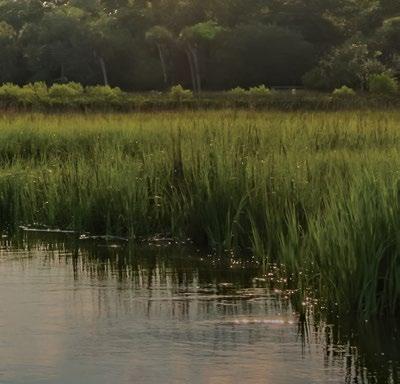


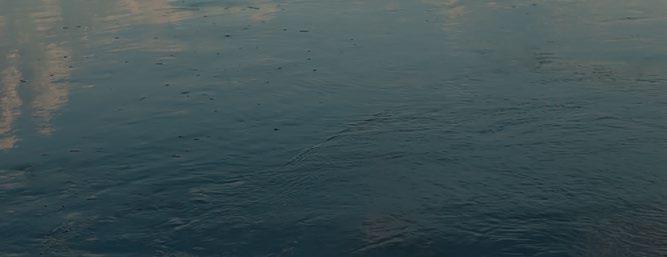






On Hilton Head Island, nature and wellness go hand in hand.
Hilton Head Island native Charlotte Hardwick lived in cities all over the world before the nature and beauty of the Lowcountry lured her back three years ago. “I wanted to get back to living around all of the things I love most,” Hardwick recalls.
“The ocean, the marshes, being outside—just getting back to that feeling of connection with the land.”
A certified yoga teacher and nutritionist, Hardwick took her passion for holistic health and launched Flow and Nourish, a wellness company that blends movement and breath work with inspired, seasonal eating. “My cooking and yoga classes tune into what the season does to our bodies” Hardwick says, “and the ways we can use movement and food to support the change of season.”
One of the ways she does
this is to encourage people to pay attention to their surroundings.
“This island invites people to notice and to be curious,” Hardwick says.
“People come here ready to slow down, and this practice that I’m doing really supports that.”
Hardwick crafts personalized wellness experiences for her clients based on their interests and needs, whether that’s learning to transform fresh tomatoes from Spanish Wells Seafood & Produce into a delicious tomato pie or practicing yoga on the beach at sunset. “I think people are looking to have experiences that are different from what they do at home,” says Hardwick. “They’re traveling with a lot more curiosity, and when I think of Hilton Head Island, I think there’s just a natural curiosity here, and that encourages me so much.”
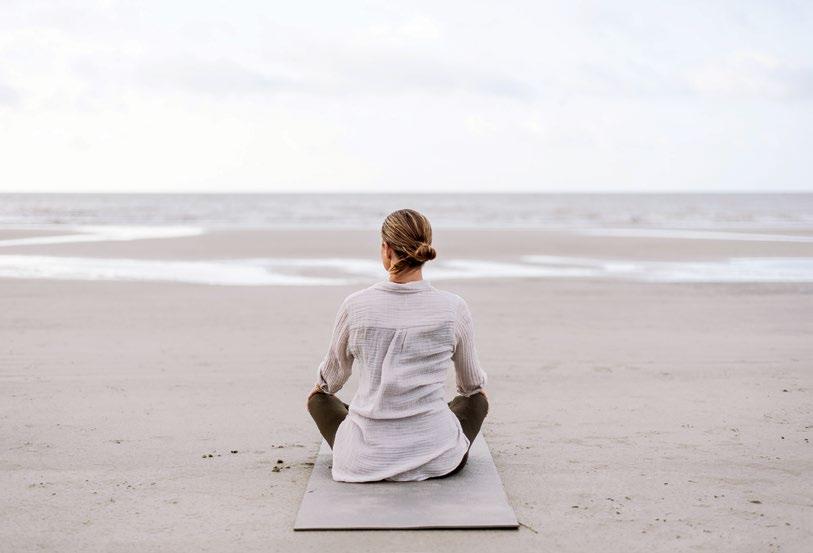

“Start with a sunrise beach walk and then take a class at Jiva Yoga Center or do a private session with me. For lunch I’d go to Delisheeyo—they have the best juices and wraps and salads. End the day with a kayak in the tidal creeks, where you can see dolphins. To me, that’s just the definition of wellness.” —Charlotte Hardwick
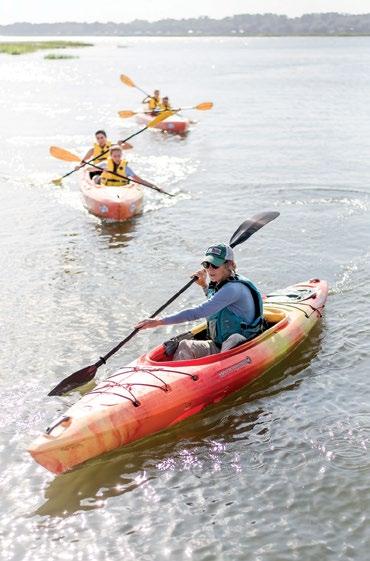

From Tuscany to the Arctic Circle, these 10 golf courses and resorts showcase the diversity of options for golfers in Europe.
Portugal
Portugal’s Silver Coast, which faces the Atlantic, has emerged as the country’s second coming in golf, following the long-term success of the Algarve in the far south. Setting the benchmark here is Praia D’El Rey, home to a stunning championship course designed by Cabell B. Robinson, who was the unsung hero of the European operations of Robert Trent Jones Sr. for two decades.
Here, golf is defined by the shoreline to the west (with views of the nearby Berlengas Islands) and the beautifully preserved pine forests to the east, with Praia D’El Rey perfectly merging the sandy dunes and woodlands into a golf adventure. To extend their adventure, visitors can visit the nearby whitewashed town of Óbidos and sample the legendary Ginjinha de Óbidos, a sour cherry brandy traditionally served in a small chocolate cup.
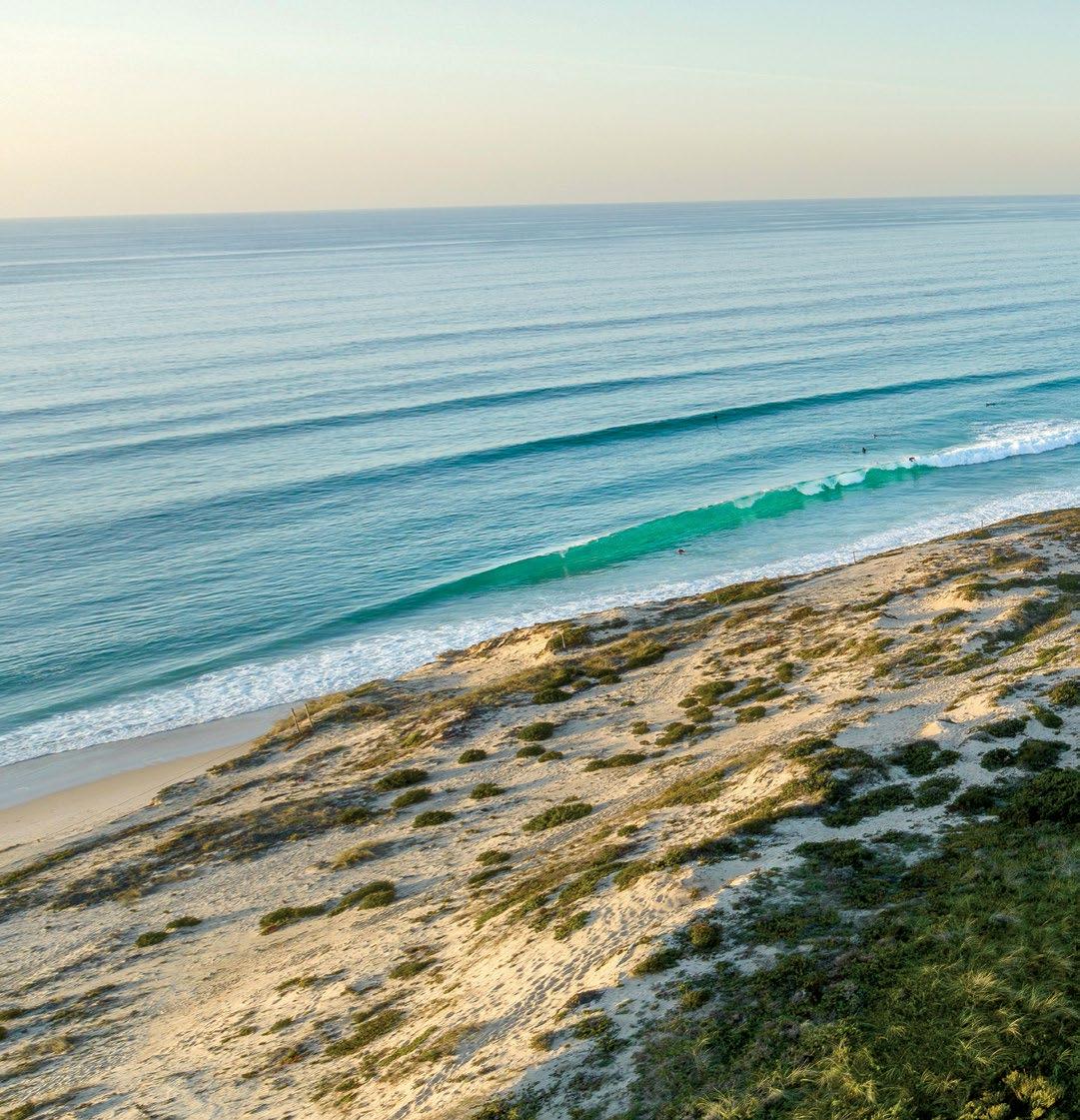


England
It is often the case around the British shoreline that where you find one classic links golf course, you’ll find one or two more just over the next sand dune. This is especially so along Sandwich Bay in Kent, in England’s southeastern reaches, where Prince’s sits at the top of a links golf chain. The legendary Royal St. George’s is just over the southern boundary, and Royal Cinque Ports is over the next wire fence. All three have hosted the Open, with Prince’s turn coming back in 1932. American tourist Gene Sarazen
won the Claret Jug that year, with his recently invented sand wedge coming into good use amid Prince’s formidable bunkering.
Prince’s today has three nines—Himalayas (above), Shore, and Dunes. Overall, they offer a gentler links test than their Royal neighbors, but extensive renovations and improvements in recent years, under the guidance of links specialists Tom Mackenzie and Martin Ebert, have left all 27 holes looking and playing better than ever.
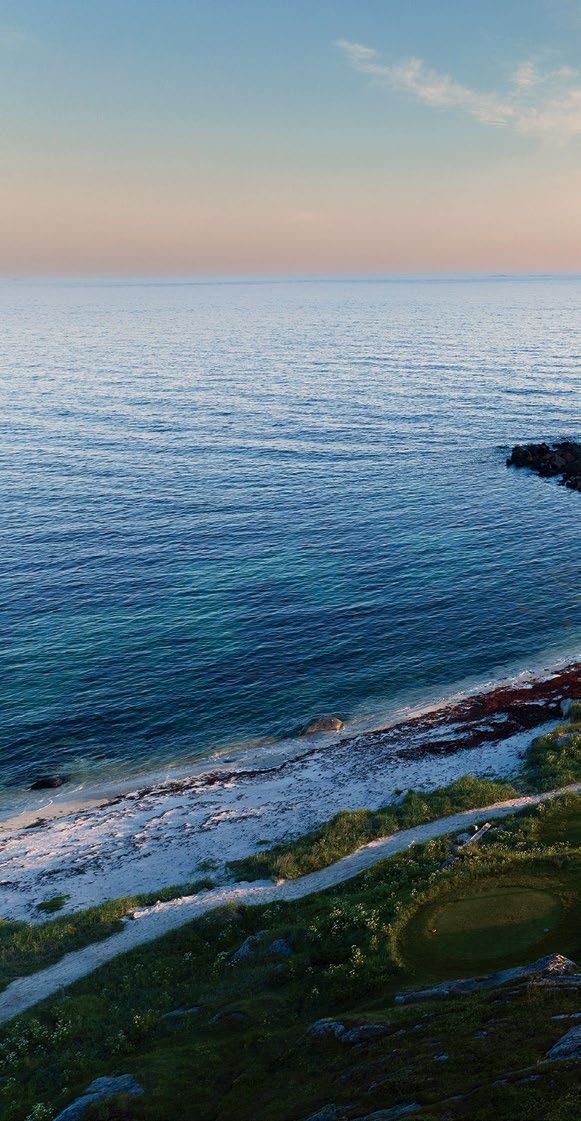
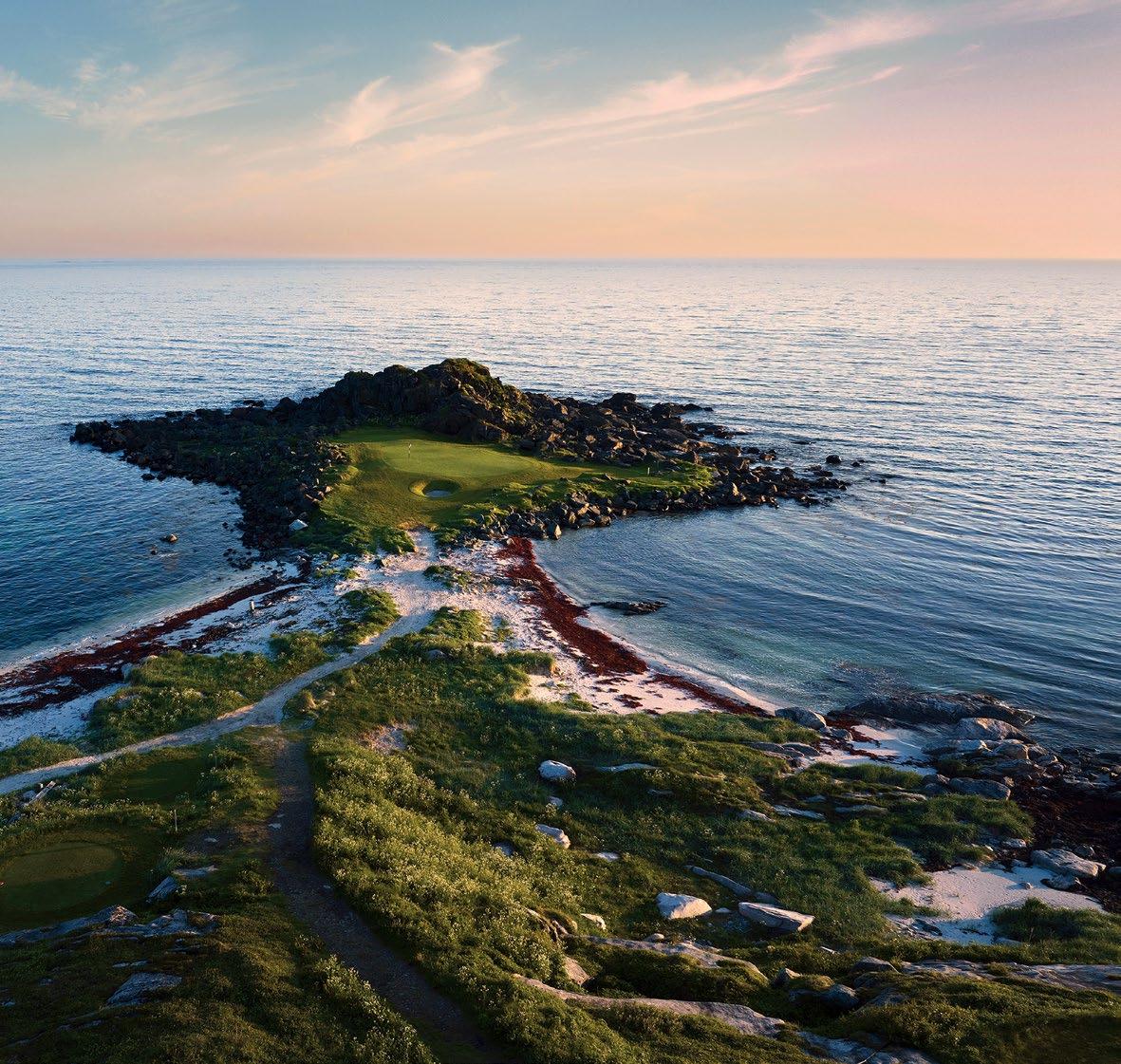
“Golf courses do not have to fit into what is normally expected” is how photographer Jacob Sjöman describes this club and resort in Norway’s far north. In the Lofoten Islands— located above the Arctic Circle—the sky never darkens in summer, allowing for midnight tee times. In fall, the northern lights regularly illuminate the night sky with neon tones.
The world’s northernmost links-style course is open from May until mid-October, with the Norwegian Sea coming into play on many holes. Even when the sea is out of range, rugged rocks and sandy beaches invariably enter the golfer’s line of sight. At 6,662 yards from the tips, the course is not very long, but success depends on keeping shots on the fairways and greens. The landscape is incredible—but not necessarily kind.
Accommodation comes in a cluster of traditional Nordic lodges accompanied by a cozy restaurant set in a converted barn.
England
The 154th Open will be played at Royal Birkdale in July 2026, and since the Open was first staged there, in 1954, only St Andrews has hosted the championship more often during the ensuing 71 years. Located on England’s northwestern Lancashire coast, and with every hole framed by rolling dunes, Birkdale is arguably the most picturesque of the Open
golf courses. Arnold Palmer famously won the Claret Jug here for the first time, amid a gale in 1961, and the 10th and last champ at Birkdale was another American, Jordan Spieth, in 2017.
An updated Birkdale golf course, masterminded by links specialist Tom Mackenzie, will reopen to visitors in March 2026, complete with a brand-new, par-3 15th hole.
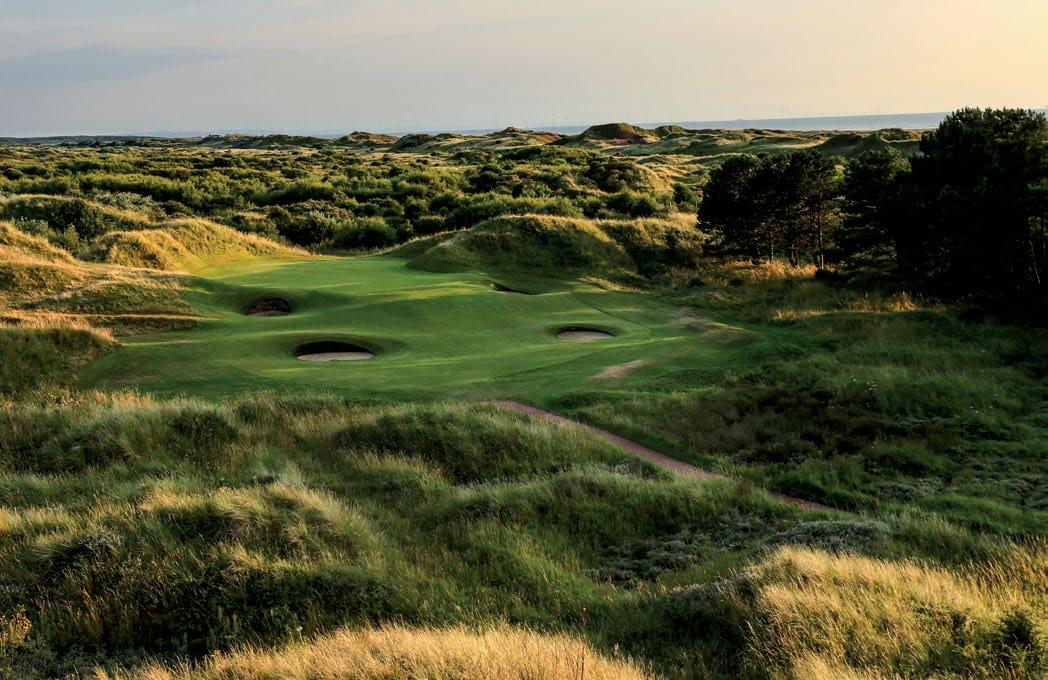
Italy
With its hilltop hotel, historic farmhouse villas, Michelin two-star restaurant, and Brunello winery, this 5,000-acre country estate outside of Montalcino is the embodiment of the Tuscan fantasy, albeit with a twist: a first-class golf course. The Club at Castiglion del Bosco— billed as the only private golf course in Italy—is the work of Tom Weiskopf, who embraced the Tuscan topography with a light-touch layout that flows naturally through sweeping valleys, hillside vineyards, and cypress-studded ridges. Only open to members and hotel guests, the golf course hosts just 4,000 rounds per year.
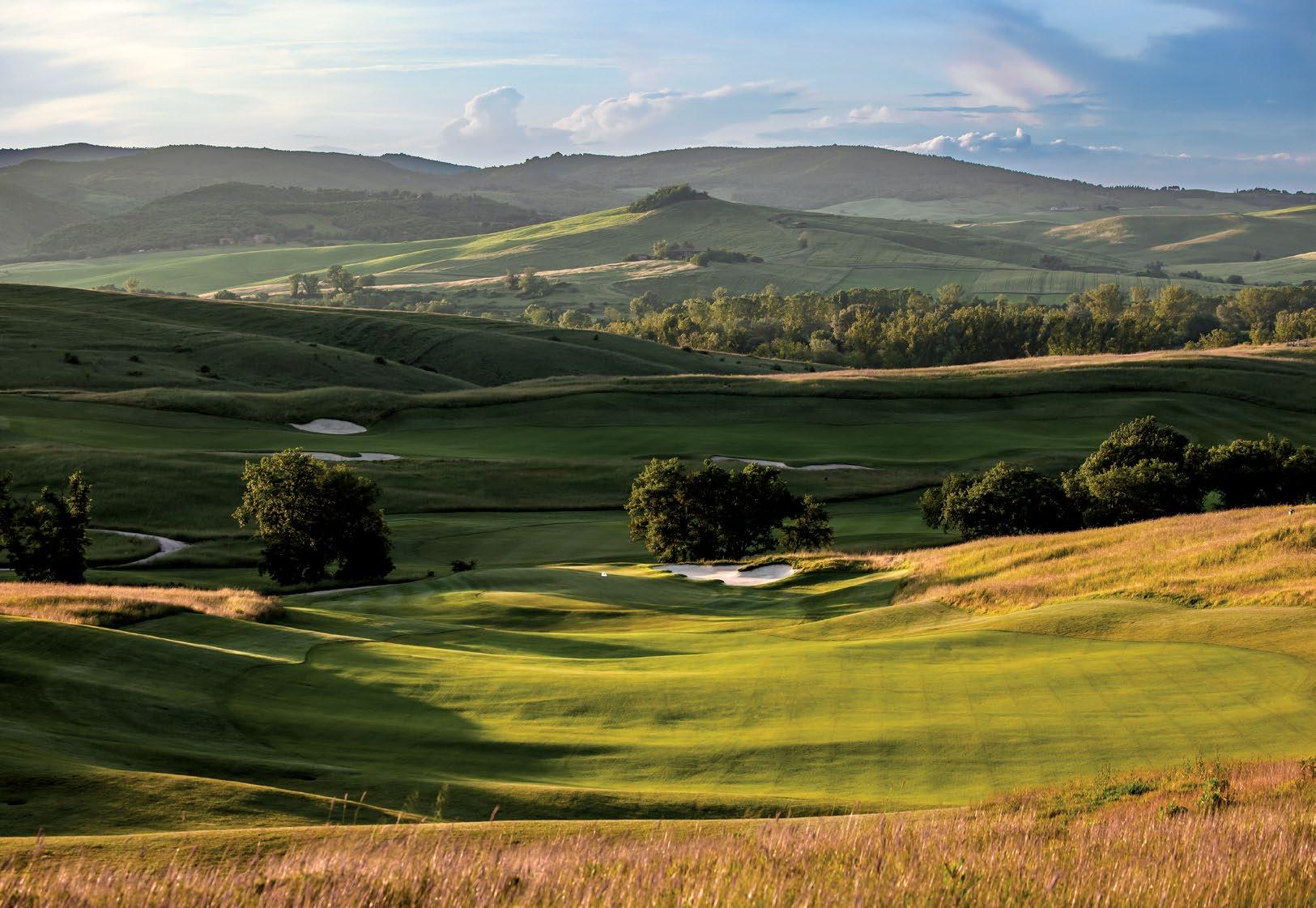
Greece
Greece is home to just nine 18-hole golf courses, and one could make the case that the four best belong to Costa Navarino.
Set on the southwestern tip of the mainland, the luxury development includes four resorts—the Westin, the Romanos, the W, and the Mandarin Oriental—spread over 2,471 acres. Its inaugural golf course, the Dunes, debuted 15 years ago as a collaboration between European Golf Design and two-time Masters champion Bernhard Langer. The seaside routing brings a links feel to the Grecian coast with large undulating greens and steep-faced pot bunkers.
Set higher on the bluff and sweeping across the ridgeline, two newer courses—Navarino Hills (right) and the International Olympic Academy Golf Course—are the handiwork of José María Olazábal. It’s Robert Trent Jones II’s Bay Course, however, that tugs strongest at our heartstrings, with wide fairways, modest length, and scenic beauty to create a truly memorable round.
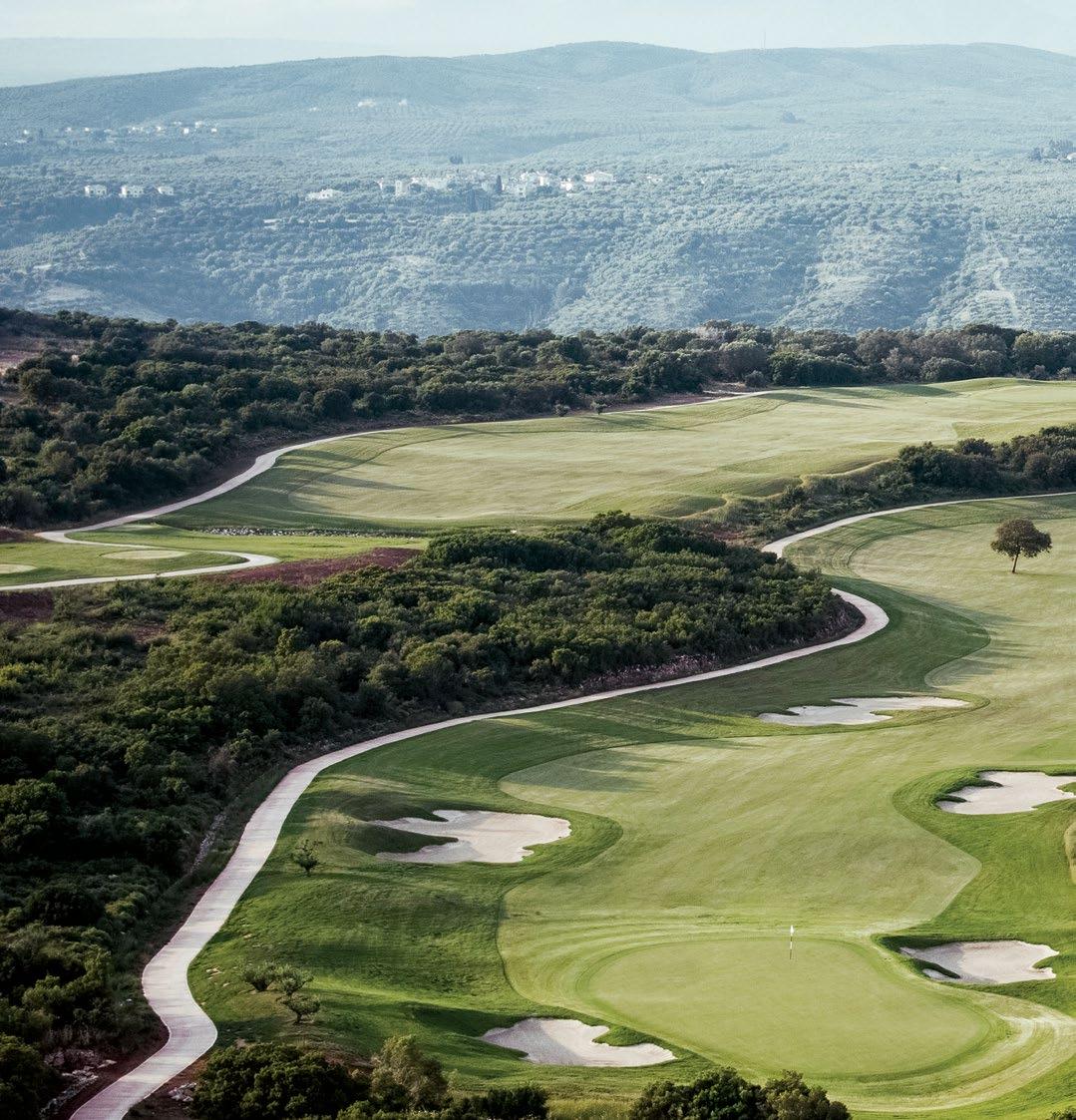
Jacob Sjöman
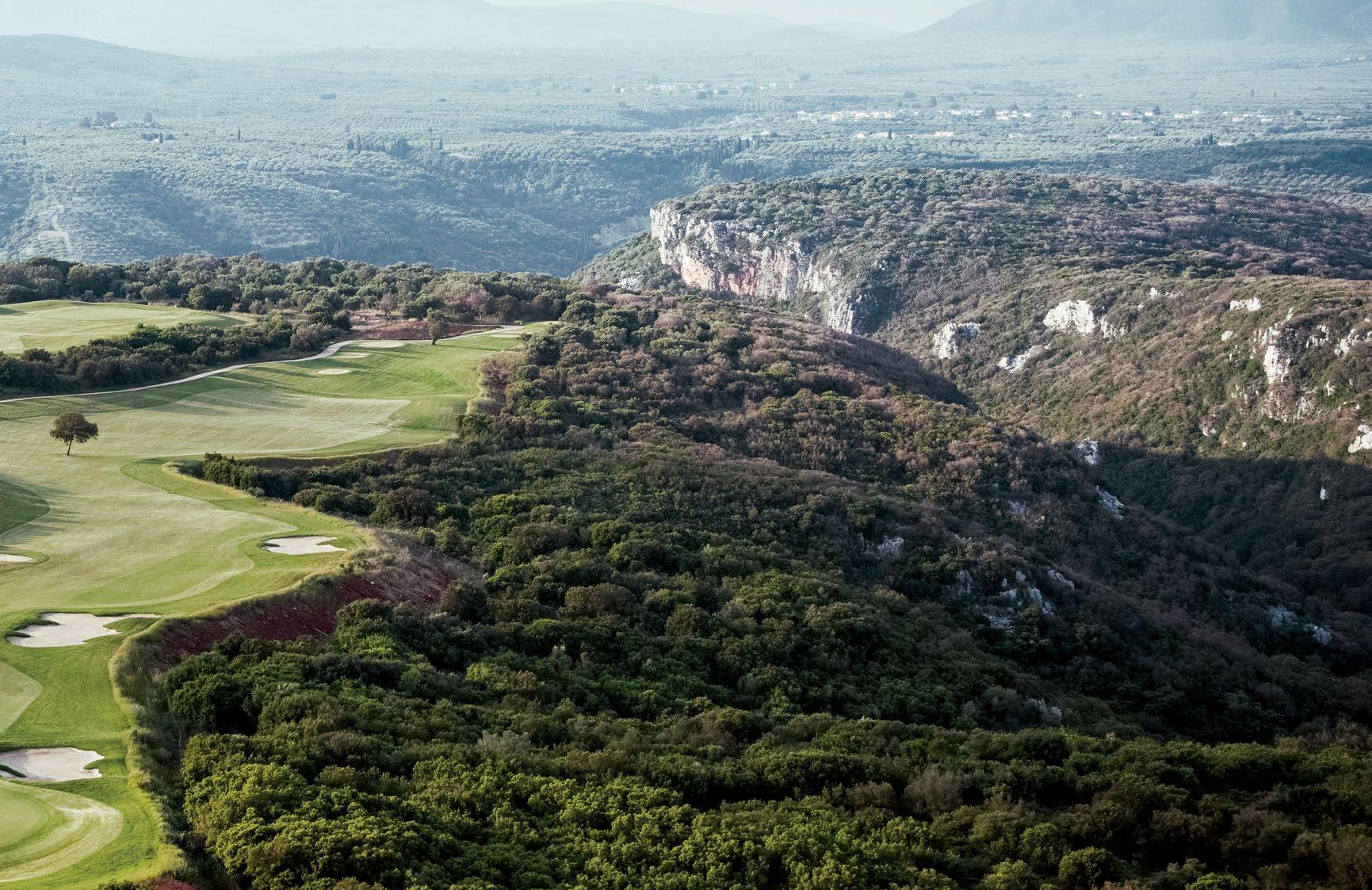

The coastline of unspoiled Cornwall is embellished with rocky cliffs and interspersed with golden beaches. One such stretch surrounds Constantine Bay, on Cornwall’s north-facing Atlantic shoreline. Lying amid the sandy dunes of Constantine is Trevose, which celebrates its centenary in 2025.
If ever a golf club justifies the label of “hidden treasure,” it is Trevose, whose centerpiece, the Championship Course (left), is a Harry Colt links of true quality. Trevose also boasts the nine-hole Headland Course and nine-hole Short Course (measuring 1,360 yards), the latter of which is perfect for families.
The variety of golf points to what Trevose does better than perhaps any other in England: it combines a classic, high-caliber links tradition and excellent self-catering accommodation with a relaxed and inclusive atmosphere.
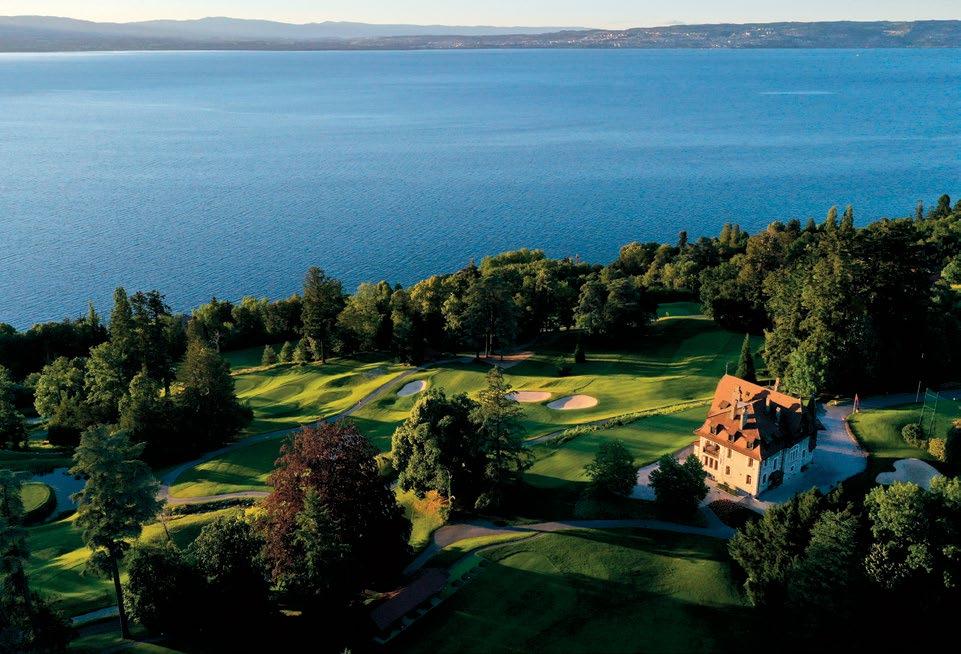
Set on the French shores of Lake Geneva, this Alpine retreat has hosted the Amundi Evian Championship, a women’s major, for more than 30 years. The Evian Resort Golf Club, which began with nine holes created by Willie Park Jr. in 1904, has been modernized over the years, first by Cabell B. Robinson and then, more recently, by Dave Sampson. Stairstepping its way along a
hillside that tumbles toward the shoreline, the idyllic track retains its 1900s charm, and every hole offers a picturesque view of the lake.
Striking lake views can also be enjoyed at the chic Hôtel Royal at Evian, which was constructed to honor King Edward VII and today includes 118 rooms, 32 suites, and the Michelin-starred Les Fresques restaurant.


From County Clare to the Causeway Coast, we explore the Emerald Isle’s links, drinks, castles, and hidden corners. Come ready for the craic.
Two of Ireland’s storied traditions are linked together at three historic hotels.
By Robin Barwick
medieval times were volatile. Power was fragile, allies were fickle. For kings, earls, and landowners of the era, a good castle communicated strength and inspired awe. It was also very hard to destroy.
All of which might explain why Ireland is home to more than 3,000 castles today, many remaining in remarkable condition. A few of the finest examples even uphold at least part of their original purpose: to house people in luxury and treat them as royalty. Each of the three converted-castle hotels outlined here offers an elegant taste of ancient Irish history— and an ideal home base for playing some of the country’s top golf courses.

County Clare
Dromoland Castle was the ancestral home of the O’Briens, and castles in different forms have existed here for more than 1,000 years. The O’Brien family pedigree—which is recorded on paper that is 36 feet long and stored in a vault at Lloyd’s of London—dates to the beginning of the second millennium and to Brian Boru, one of the last High Kings of Ireland.
Set within what is now a 500-acre estate, the existing castle was built by the Lord of Dromoland, Sir Edward O’Brien, in the early 1800s and converted into a hotel in 1962. It remains a destination of rare sophistication, where guests can row on the lake, enjoy the 18-hole championship golf course, play tennis or pickleball, or simply take in the stunning and expansive walled garden, which is modeled on the gardens of the Palace of Versailles.
Last year, the resort debuted Dromoland Lodge, an exclusive five-bedroom retreat set along the golf course’s 14th hole. In addition to Dromoland’s parkland course, guests can also play nearby clubs including Lahinch and Ballybunion.
County Donegal
Lough Eske Castle, as it stands, dates to 1861, although the estate spent previous centuries as the seat of the powerful O’Donnell clan. Lough Eske lies to the northeast of Donegal
Town in western Ireland, affording views of the Blue Stack Mountains—and a true sense of retreat. The Elizabethan-style castle is equipped with a spa, and guests can explore the estate on bicycles or via horse-drawn carriage. Links golf is available at nearby Donegal Golf Club, which flanks the ocean along Ireland’s Wild Atlantic Way, where a coastal breeze is guaranteed.
County Mayo
The oldest parts of Ashford Castle will reach their 800th birthday in 2028. The castle was once the primary stronghold of the AngloNorman de Burgo family. In 1852, it came under ownership of the Guinness family from Dublin, and it first became a country hotel after World War II.
Beginning in 2013, Red Carnation Hotels spent five years renovating Ashford Castle, including repairs to more than 40 battlements and the fitting of 130 chandeliers. The Connaught Room is exquisite for afternoon tea, and tunnels under the castle have been converted into wine cellars. Whether for snooker, chess, or a game of cards, the Billiards Room will beckon as day turns into night.
Ashford Castle boasts nine golf holes on rolling parkland that was once the deer park, and classic links golf is available nearby at Connemara, Carne, Enniscrone, and Sligo.

Given its many American guests with Irish roots, Dromoland Castle employs an in-house genealogist, Lorna Moloney. A weeks-long consultation, which begins before a guest’s arrival, enables Moloney to prepare a detailed genealogy report, accompanied by suggestions for next steps if guests want to dig deeper. The report is typically presented to Dromoland guests over tea and scones, when Moloney might recommend specific Irish towns, castles, or graveyards where familial connections can be confirmed and explored.
dublin is a city that defies definition: It is old yet embraces everything new. It is maritime yet tied on three flanks to rich agricultural land. It is traditional up one street, Bohemian down the next. You find tranquility in its parks while rock and roll pulses in its pubs and bars. Ultimately, Dublin is a city loved by its own, and one that treasures its visitors in turn. To borrow words from local band U2, every day in Dublin is a “beautiful day,” although it might come in “mysterious ways.” Here, a few recommendations for a beautiful day or night in Dublin.



The famous “Black Stuff”—the slow-settling stout called Guinness—originated in St. James’s Gate, old Dublin. In 1759, enterprising brewer Arthur Guinness gambled £45 a year on a 9,000-year lease on the brewery. The Guinness Storehouse was built here in 1904, and today it houses a colorful and interactive exhibition. Ensure your interactions end with a pint at the rooftop Gravity Bar.
Bram Stoker, Oscar Wilde, and Jonathan Swift are among the literary legends who studied at Trinity, which is Ireland’s oldest university. The idyllic campus dates to 1592 and leaves all visitors wondering if they can still enroll. Don’t miss the awe-inspiring Long Room Library and its 200,000 books. The Book of Kells, dating to 800 A.D., is displayed in Trinity’s Treasury, so brush up on your Latin. While you are there, try the digital, immersive Book of Kells Experience.
Take a stroll through tranquil St. Stephen’s Green before ducking into the eccentric Little Museum of Dublin. This is a homey place, displaying a collection of items that are donated by Dubliners to show what this dynamic city means to them. Be immersed in the paintings, furniture, photographs, and memorabilia that encapsulate the Irish capital over the past century. The second floor is dedicated to a permanent U2 exhibition.
The city pubs epitomize Dublin’s age-old welcoming nature. For flowing pints and live Irish music, try the Stag’s Head on Dame Court or O’Donoghue’s on Merrion Row. For a flavor of historic Dublin, head to the Long Hall on South Great George’s Street, which was established in 1766. Bruce Springsteen has been known to enjoy a pint there.
Catch a boat from the city at Sir John Rogerson’s Quay on the River Liffey, and enjoy a tour of Dublin Bay, flirting with the Irish Sea. Take in Poolbeg Lighthouse, Dalkey Island, Dun Laoghaire Harbour, and the spectacular Howth Cliffs.
The newly renovated Westbury, on Balfe Street, is within easy walking distance of all our recommendations above. (Admittedly, it’s 1.5 miles from the Guinness Storehouse, but the walk back might be beneficial.) We recommend dinner in the hotel’s elegant Wilde restaurant, which is a luxurious oasis away from the bustle on nearby Grafton Street. We also suggest a nightcap in the Sidecar, with art deco decor and bartenders who prepare martinis from a tableside cart. —R.B.
Luck doesn’t explain Ireland’s long and legendary tradition at golf’s incomparable transatlantic competition.
it was the late Christy O’Connor Jnr, from Galway, who broke the seal. He was 41 years old at the 1989 Ryder Cup at the Belfry. His career until that point had skirted around the fringe of the Ryder Cup, and his selection for the team that year was widely and harshly ridiculed by the British press.
Ultimately, retaining the Ryder Cup came down to O’Connor’s final shot on the 18th hole, in singles against American talisman Fred Couples. O’Connor played a 2-iron to the green, from 229 yards and with a lake to clear, and he delivered his ball to within four feet of the hole. Couples then sprayed his approach wide, couldn’t get up and down, and without even the need to putt, O’Connor prevented the U.S. from reclaiming the cherished cup. The newspapers printed their apologies.
The Irish magic at the Ryder Cup continued with Dubliner Philip Walton, who secured Europe’s winning point in 1995 at
Oak Hill. In 2002, back at the Belfry, fellow Dubliner Paul McGinley (see opposite page) holed the clinching putt on the 18th green. At the K Club outside Dublin in 2006—Ireland’s debut as Ryder Cup host—Northern Irishman Darren Clarke was the hero on Arnold Palmer’s golf course.
In 2010, it was the turn of Portrush-born Graeme McDowell at Celtic Manor in Wales. Most recently, another Northern Irishman, Rory McIlroy (right), made the difference. McIlroy did not hole the winning putt in 2023, but he led Europe to success in Rome, finishing the week as the only player from either team to secure four points.
Ireland’s rich Ryder Cup heritage will reach a new level in 2027, when the biannual matches arrive at Adare Manor in County Limerick. We can’t know who, how, or when, but we expect an Irishman to once again raise his game at the Ryder Cup. —R.B.

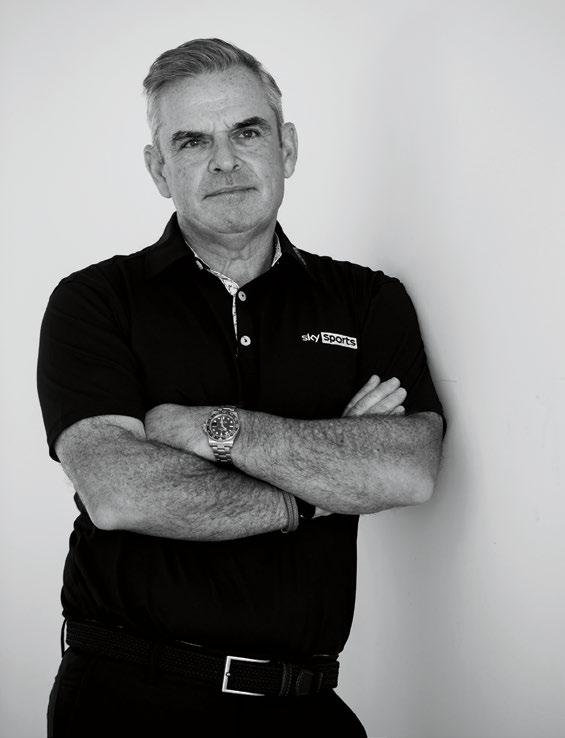
The former Ryder Cup star player and captain—and Dublin native— grew up playing the great links courses of the Emerald Isle. robin barwick picked his brain.
“Growing up, we played all of Ireland’s best courses in amateur tournaments. The ‘North of Ireland’ was played at Royal Portrush, the ‘West of Ireland’ was played at Rosses Point in County Sligo, the ‘South of Ireland’ was played at Lahinch, and the ‘East of Ireland’ was played at Baltray in County Louth. My favorite golf course in Ireland has always been Royal Portrush, and County Louth would be the other. Royal County Down is also fantastic. Trying to pick your favorite golf course in Ireland is like trying to pick a favorite from your children! They are all great. County Down is an elite golf course, and there are seven or eight in Ireland of that standard.”
“In terms of hosting professional events, our best two courses are probably Waterville and Portmarnock. There has been a lot of media speculation that the Open might go to Portmarnock one day, and I really hope it does. There are some fantastic holes at Portmarnock and a lot of variety. The Irish people would embrace the Open, and Portmarnock is the perfect location, being just outside Dublin and near the airport. It has everything the R&A looks for in a host venue. My fingers are crossed that in my lifetime we will see the Open there.”
“In Ireland we have four brilliant inland clubs in particular: Adare Manor, the K Club, Mount Juliet, and Killeen Castle, which held the Solheim Cup. I go down to Adare Manor regularly. The hotel and the facilities are just amazing, and it stands toe to toe with any of the best hotels in the world. A lot of investment has gone into the golf course, and it has become the Augusta National of Europe. The spa and the fitness center are great, the walks around the
property, the ambience in the hotel, the service, the food, the quality of everything is out of this world. It is absolutely six-star.”
“Irish pubs always have a lot of character. Kenny’s in Lahinch is very popular, and they have live traditional music there on most evenings, particularly during the summer. O’Donoghue’s in Dublin is one of our most famous pubs, but every town in Ireland has great pubs.”
“Tee times in southwest Ireland are getting extremely hard to find, and sometimes you can’t even get a tee time for next year, and so golfers are beginning to migrate north, to Donegal. On the Atlantic coast, this is the next frontier of Irish golf. My design company has a big renovation project ongoing at Donegal GC, which is an excellent golf course, and we are working at a hidden gem called Portsalon, which is enjoying increasing popularity. Then there is Dunfanaghy, and that is the golf course my dad grew up on. My dad was a 1-handicap for most of his life, and he is the reason I got into golf. If the regions of Ireland were stock, I would be buying Donegal. There is a place in Donegal called Rosapenna, and up there is a golf course designed by Old Tom Morris, which really is a hidden gem. Rosapenna is becoming more popular, and demand is only going to grow.”
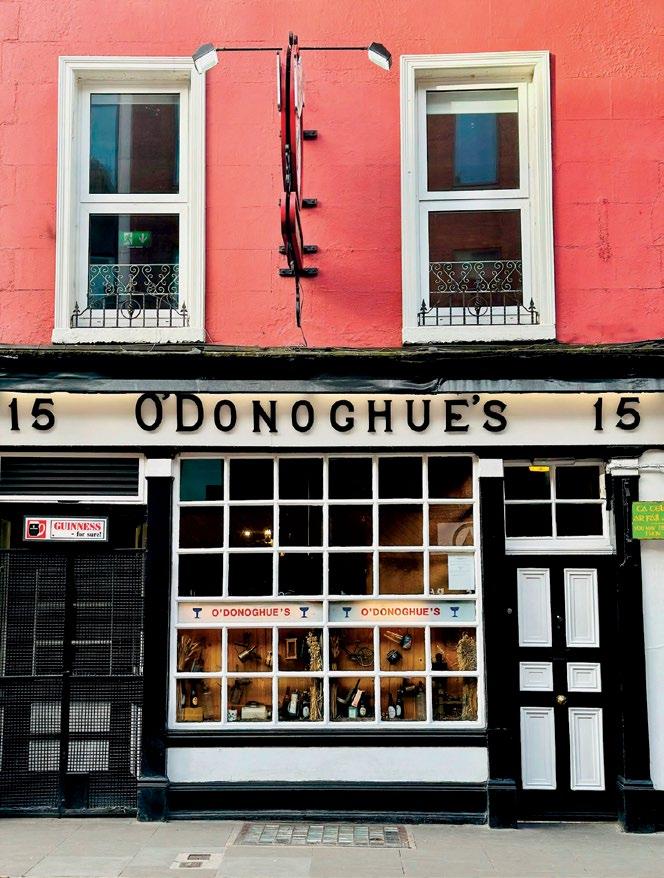
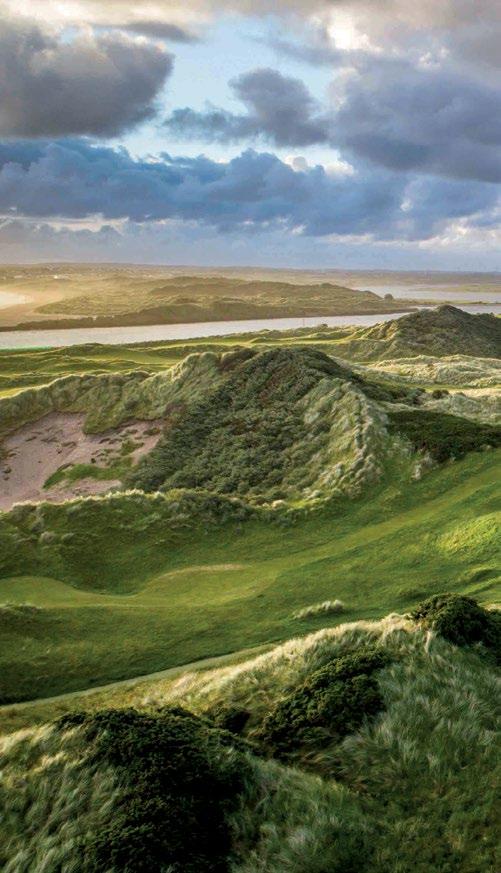
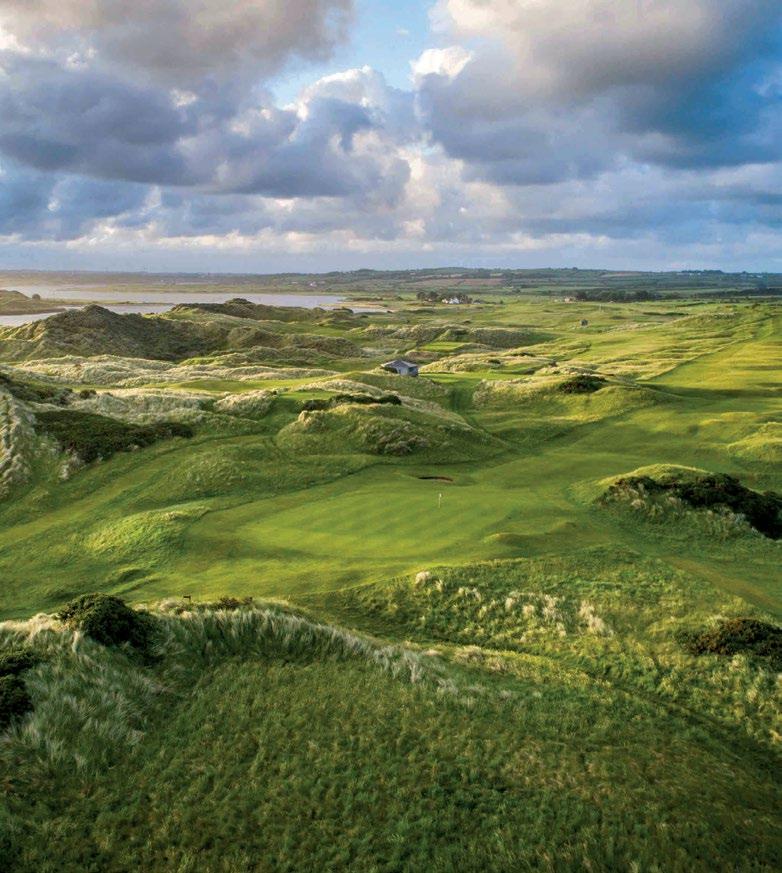
The Causeway Coast is the crown of Northern Ireland. It is craggy, weather-beaten, and bejeweled with a rare array of nature, great golf courses, and drops of golden Irish whiskey. Centering on the old fishing town of Portrush, we have compiled a fourday itinerary featuring three golf courses that might be as good as any links trio anywhere. This one is for the links connoisseur.
From Belfast International Airport, it is a 50mile, northwesterly drive through green and rolling countryside to the Causeway Coast at Castlerock. Forgoing a gentle warm-up on this tour, we head straight into the thick of vintage Irish links on the classic Mussenden Course at Castlerock Golf Club, alongside the River Bann estuary. This 18-hole layout, defined by peaking dunes and forbidding pot bunkers, opened in 1901, before being shaped by clubmaker Ben Sayer and, later, by Harry Colt.
From Castlerock it is a 12-mile drive to Portrush, which is the ideal hub for this Causeway tour. For traditional Irish hospitality, stay at the Antrim House Bed & Breakfast, right in the heart of town. The many pubs and restaurants of Portrush are an easy walk from here.
At breakfast in Antrim House, try the hot porridge before your day on the links. Note the bottle of Bushmills by the porridge pot, for extra warmth (optional).
O’Donoghue’s (opposite page) and the Mussenden Course at Castlerock Golf Club.
From the center of Portrush, it is a five-mile drive back west to Portstewart Golf Club, home to 54 holes amid one of the most dramatic dune systems anywhere in the British Isles. The championship Strand course can be

tight and twisting, but it is not to be missed, and hardy golfers will enjoy the two shorter 18-hole courses: the par-65 Old Course, which dates back to 1894, and the par-68 Riverside.
A break from golf gives the chance to travel eight miles up the coastline to the Giant’s Causeway, which is Northern Ireland’s only UNESCO World Heritage Site. The enigmatic, hexagonal, basalt columns took their defiant stance against the North Atlantic almost 60 million years ago, at a time when the Emerald
Isle literally split from North America. Or you might prefer the legend of Finn McCool, a giant who is said to have built the Causeway in order to cross the Irish Sea to face his Scottish rival, Benandonner.
A compulsory diversion on the journey back to Portrush comes at the Bushmills Distillery, founded in 1608 and now the oldest licensed whiskey distillery in the world. See how malted barley is triple distilled in copper pot stills, before tasting the golden produce and enjoying a traditional, hearty County Antrim dinner at the Bushmills Inn.
Is Royal Portrush on day four saving the best for last? You can decide in the bar afterward. The mighty Portrush offers a pair of 18-hole courses, the Dunluce and the Valley, with the Dunluce being the only golf course outside England and Scotland to have staged the Open. The course, renovated by Harry Colt in 1929, hosted the event in 1951, 2019, and again in 2025. To get the most of this legendary links—as with all the great links courses—hire a caddie. The breaks on the greens can be surprising, and these people know them all, as well as more than a few tall tales.
Top off your day with a pint at the Rathmore Club, at the town end of the Portrush links. Rathmore is the locals’ club that enjoys access to the Royal Portrush courses, and this is where the U.S. Open champ of 2010, Graeme McDowell, grew up. He donated a replica of the U.S. Open trophy to the club, which takes pride of place in the modest clubhouse. —R.B.

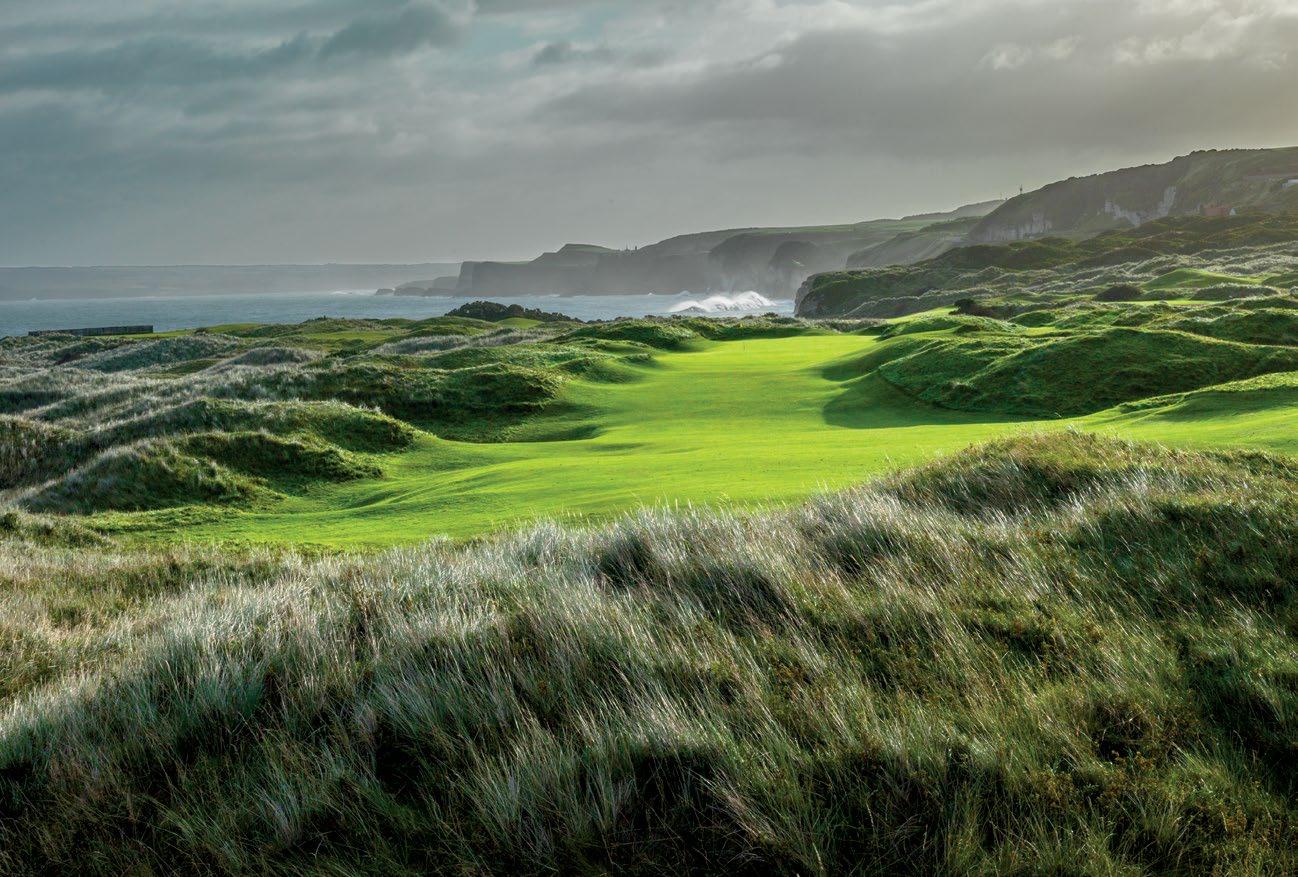
Dress Appropriately: Wind supplies the strongest defense for any links course, and the Causeway Coast receives its share, usually the prevailing southwesterlies off the Atlantic. Wind speeds of 20 miles per hour are normal. Anything less is a gift to golfers from somewhere above. The winds can chill to the bones, so bring layers and a woolly hat, even in summer.
Ireland’s Trailblazer: The first Irishman to win a major was Fred Daly, born and bred of Portrush, who won the Open at Royal Liverpool in 1947. By the age of 10, Daly worked among the caddie ranks at Royal Portrush, and as a young man, he was part of the workforce that applied Harry Colt’s renovations. Daly was born in Lower Causeway Street in the heart of Portrush in 1911, and on his death, in 1990, he was buried in the town’s Ballywillan Church graveyard.
Half Measures: At Portrush, the halfway house on the Dunluce Course is called the Tavern, and when the flag is flying above the Tavern, golfers know it is open for business. If the winds are up, a local favorite is hot Bushmills. A pint of Guinness is also popular, although the bestseller in the Tavern is the hot soup of the day.
In Newcastle, Northern Ireland, Royal County Down and the Slieve Donard hotel form a timeless bond.
By Shaun Tolson
with the mourn mountains behind me and the rhythmic sound of the Irish Sea in my ears, I look down the first fairway—a gently rumpled corridor of short-mowed fescue nestled between two angular dunes. I pause, taking a couple of deep breaths to settle my quickening pulse. It’s true that you only get one chance to make a first impression, and Royal County Down immediately turns on the charm.
My arrival the night before at the Slieve Donard hotel, in Newcastle, Northern Ireland, solicited a similar response. The reception desk, which resembles an old-fashioned railway ticket window, rises from a chestnut-brown parquet floor in the high-ceilinged lobby, opposite a woodburning fireplace framed with lush greenery. Busts of antlered deer share wall space with paintings of idyllic landscapes, all part of a faithful re-creation of the lobby as it existed at the turn of the 20th century. The hotel’s design team referenced an antique oil painting of the space when undertaking a recent $20 million renovation.

“There’s just so much to take in; your eye is drawn to so many different things. It’s almost sensory overload,” opines Michael Weston, the hotel’s former general manager. “When you walk through those doors, you can almost picture yourself being in a period drama. It is almost as if you’re transported back in time but with a modern twist.”
The Slieve Donard hotel and Royal County Down, frequently in tandem, have enraptured visitors for 135 years—in ways that go far beyond first impressions.
Across the 7,186-yard masterpiece designed by Old Tom Morris and, later, Harry Colt, the aforementioned dunes—blanketed by heather, Marram grasses, and gorse—inject an inherent drama from one shot to the next.
On the fourth hole, I watch with bated breath from the elevated tee box as my high-arcing shot hangs in the air for several seconds before landing on the putting surface. The very next hole delivers an even more prolonged sense of anticipation, as I have to crest a steep dune to discover if my flared drive has avoided an untimely—and prickly—demise inside a patch of gorse bushes.
Even Royal County Down’s routing enhances the variance of play, as the course’s pair of distinctive nine-hole loops require golfers to continuously readjust to the wind’s direction.
“That’s the great part of this golf course; it’s the beauty and the beast,” says Kevan Whitson, who retired as the club’s head professional and director of golf last year. “The place is some of the most beautiful scenery around, and yet it’s a very difficult golf course. When it’s hard and running in the summertime, the undulations gather the ball and move it into all sorts of places. Most of our greens are like slightly upturned saucers, so even just hitting some of the greens requires an extremely good shot.
“But that’s what the great courses tend to do,” he continues. “They make you play a bit defensively. If you hit really good golf shots, you’re rewarded. But if you hit really poor golf shots, you go into some horrific places, which are very difficult to recover from.”
Fortunately, recovery is offered in a variety of forms inside the Slieve Donard, located a mere five-minute walk from Royal County Down’s clubhouse. From therapeutic treatments inside the destination spa to nourishment at any of four restaurants and bars, the hotel specializes in rejuvenation. More than just an elegant place to retire, however, the historic property stands as a proud symbol for this part of the Emerald Isle. “It’s not a hotel,” Weston says. “It’s an institution that has touched probably every family in Northern Ireland in some way, shape, or form.”

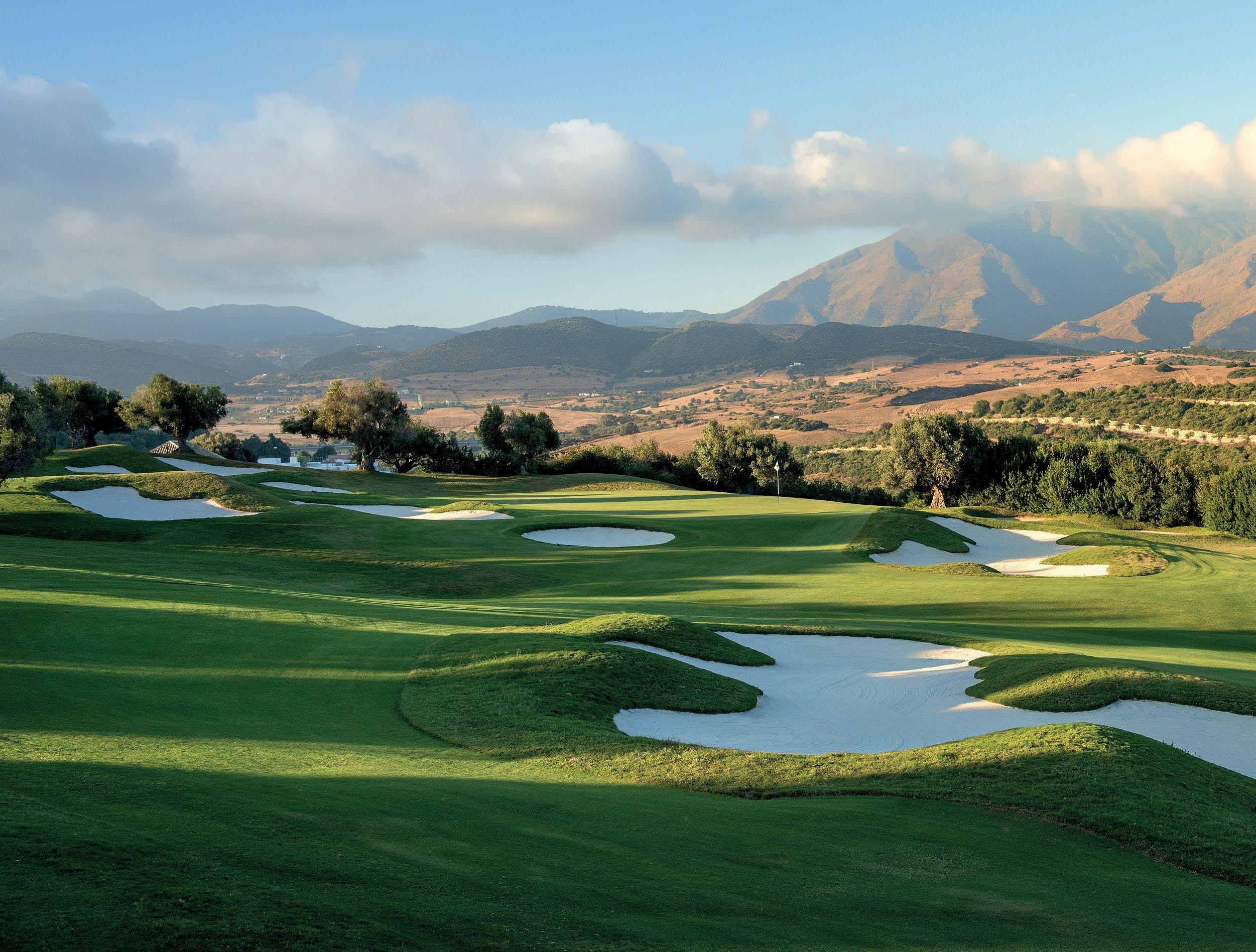
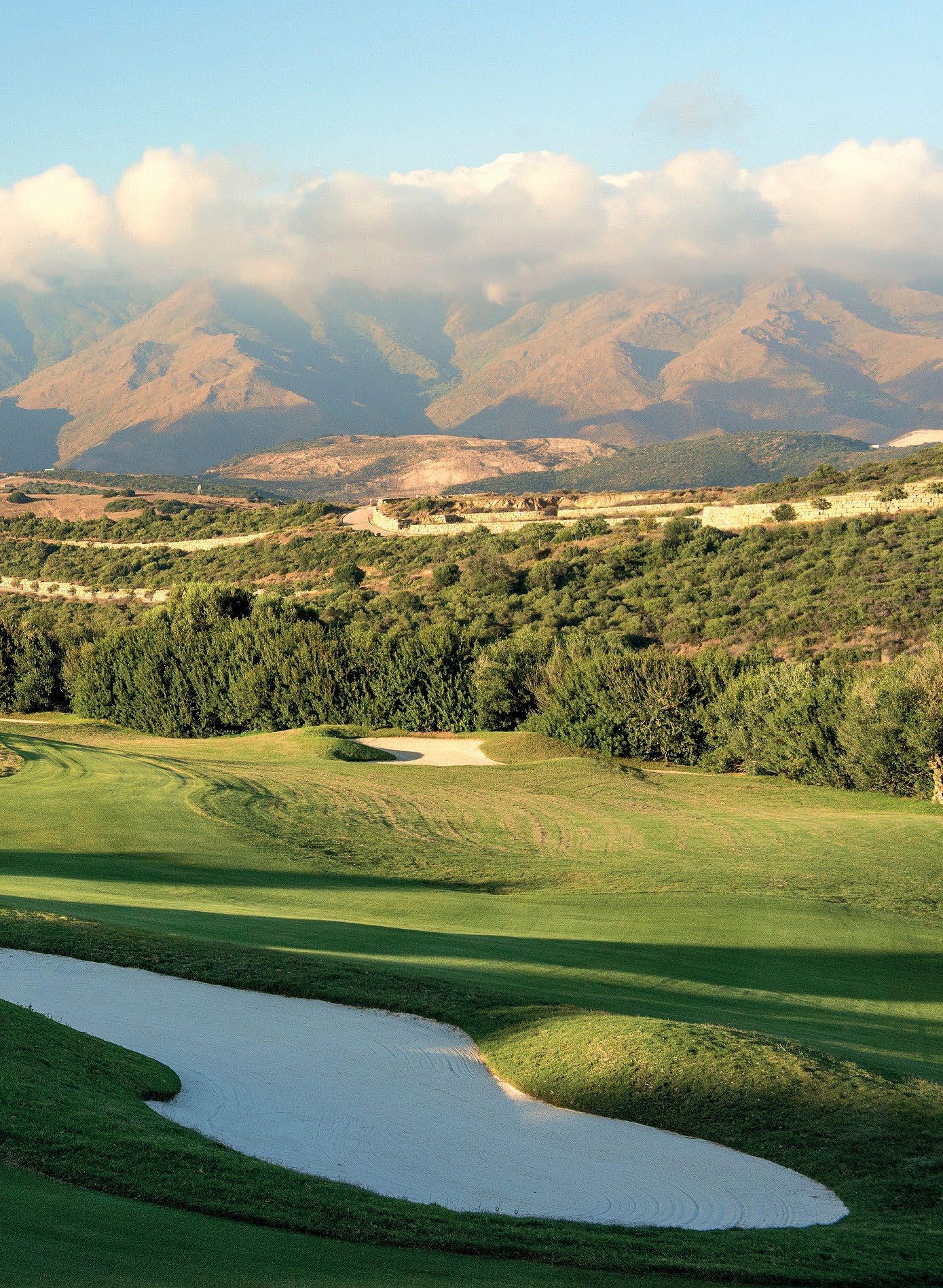
From the Basque Country to the Costa del Sol, a golf trip to the homeland of Ballesteros, Olazábal, Ciganda, and Rahm is about much more than just golf
Mallorca has managed to remain off the radar of most golfers. Here’s why it’s on ours.
By Larry Olmsted
For many Europeans, Mallorca is a cycling and hiking mecca. Others come to the Mediterranean island for its beaches and bars. Palma, the capital, is flush with historic sites—including Spain’s “other” huge Gaudí cathedral—and the island’s culinary scene is legendary, with Michelin stars, hidden gems, and local farms producing top-quality ingredients year-round.
Mallorca is also home to 20 public and semiprivate golf courses, which, even at the height of tourist season—when thousands of travelers descend on the island—remain blissfully uncrowded. But even so, somehow, golfers have yet to claim Mallorca as their own.
The largest of Spain’s Balearic Islands, Mallorca is nearly identical in size to New
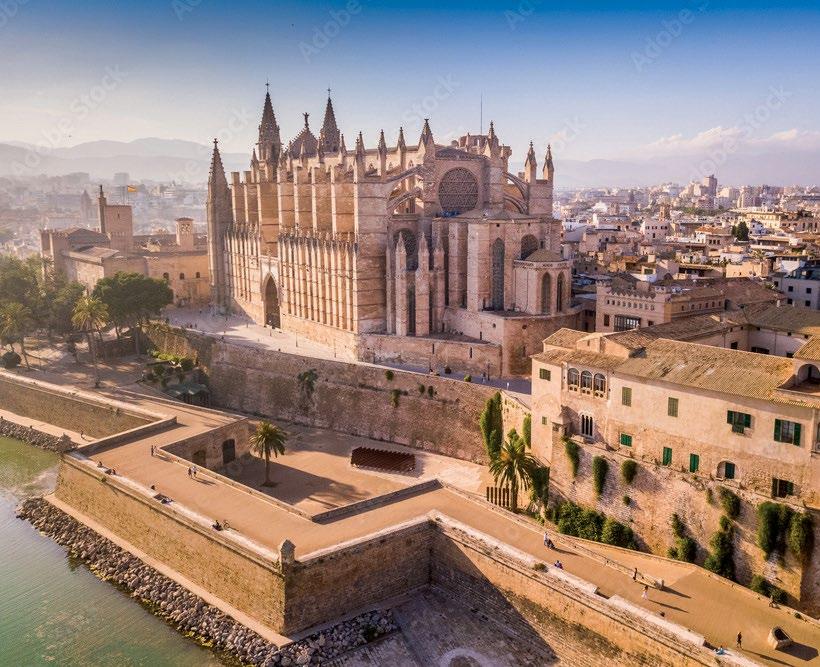
York’s Long Island, only rounder. The island’s courses—all of which are within an hour’s drive of Palma—include enough standouts to support a fabulous weeklong golf trip.
Topping the list is Alcanada, a modern, semiprivate course developed by the Porsche family, of sports car fame, and designed by Robert Trent Jones Jr. Opened in 2003 on a peninsula jutting from Mallorca’s northeastern coast, it is the island’s only true seaside layout. The stunning views include several vantages of the course’s namesake 19th-century lighthouse on a small offshore island. Like many of Mallorca’s resorts and other developments, Alcanada was once a farm, and its charming, centuries-old stone buildings now house a wonderful restaurant, a halfway house, and a clubhouse.
Son Gual is another semiprivate gem, set on a generous 365-acre site on the periphery of Palma. Considered the island’s most exclusive course, the “Augusta of Mallorca” features several lakes, intricate bunkering, 800 mature olive trees, and even a waterfall—and it’s all extremely well maintained. Like Alcanada, Son Gual was a passion project of a German magnate, the golf-obsessed Adam Pamer, who bought a vacation home on Mallorca and hired German amateur champion Thomas Himmel to build a course. The clubhouse and restaurant are palatial, catering to members spoiled by Mallorca’s high culinary standards. So, if you play the course, be sure to stay for a meal.
Most of Mallorca’s golf courses are standalone clubs that are not attached to a
larger resort, which is all the better given the incredible array of luxury lodging on the island. Many traditional farm estates, or fincas, have been converted into boutique lodges, including the acclaimed Finca Serena and Sir Richard Branson’s Son Bunyola, which has just 27 rooms on a 1,300-acre vineyard and olive farm.
Cap Rocat occupies a one-of-a-kind 19thcentury sandstone fortress built into a cliffside, with some rooms carved from caves. Carrossa is a five-star resort with an extensive spa and multiple restaurants that sits near Alcanada and offers seven-day stay-and-play packages incorporating several other golf courses.
For those who prefer a true golf resort, the top choice is Hacienda Son Antem, part of Marriott’s Autograph Collection. The 151-room hotel anchors two eighteens: East, a laidback resort course, and the more coveted and challenging West. The resort also includes a golf academy, a tennis center, a spa, and vast gardens that contribute to the property’s excellent cuisine.
Pula Golf Resort is a boutique hotel set in a 16th-century manor house near the first tee of the property’s 18-hole layout. One of the best courses in Mallorca, it was completely redesigned by José María Olazábal in 2006 and has hosted several tournaments, including European Tour events.
Other clubs on the island range from T Golf Calvia and Son Servera to Son Vida and T Golf Palma. With so many options—many of which are relatively unknown—Mallorca is ripe for exploration by golfers.


it is amazing what you can do with a cluster of five fincas. The American developer Joseph McMicking demonstrated what’s possible in the early 1960s, acquiring adjacent farms on Spain’s southeastern coast, just up from Gibraltar, and turning them into Sotogrande. Today, the 10-square-mile community is the ultimate Spanish playground for the European elite, a refuge of superyacht marinas, polo fields, mega villas—all with views over the Med—and, of course, some of the most celebrated golf courses in Spain.
Real Sotogrande represents the old school of golf in southern Spain. Designed by Robert Trent Jones and opened in 1964, Real Sotogrande and its original residences first established the resort community as an exclusive retreat at the western end of the Costa del Sol. Jackie Kennedy Onassis would vacation here, rubbing shoulders with royalty from different parts of Europe. The members-owned club remains a bastion of tradition, a throwback to late-20thcentury glamor, and the golf course still vies with neighboring Valderrama as the finest in Spain.
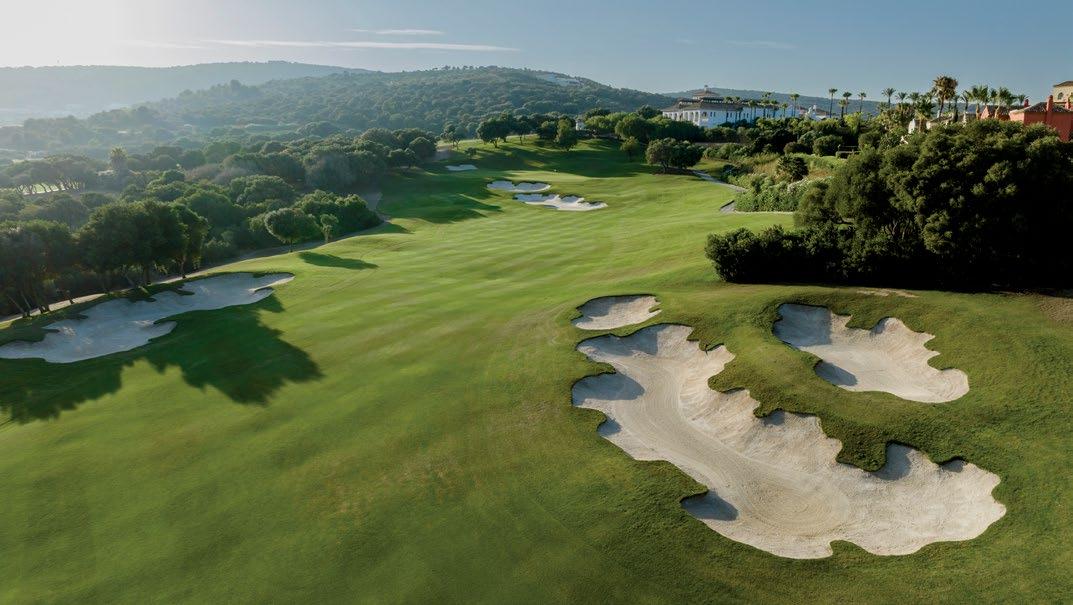
Valderrama—another Robert Trent Jones creation—began life as the second course at Real Sotogrande, called Las Aves. That was before the Bolivian mining tycoon and Sotogrande resident Jaime Ortiz-Patiño bought the course in 1985 and brought Trent Jones back to remodel it. A qualified greenkeeper, Ortiz-Patiño relentlessly pursued perfection for the course, which became one of the most sought-after tee times in Europe by the midnineties. It was written in the World Atlas of Golf that “You almost feel inclined to remove
your golf shoes while walking the fairways.”
Ortiz-Patiño’s drive and ambition saw his beloved club become the first European Ryder Cup venue outside the British Isles, in 1997. And though Ortiz-Patiño has passed on, his legacy survives, and the manicured Valderrama remains a must-play for Sotogrande visitors. Indigenous cork trees line many holes and demand accuracy from the golfer more than they demand power. Valderrama is also known for unpredictable winds, sometimes arriving from the west, sometimes from the east.


Completing Sotogrande’s close-knit quartet of championship golf courses are La Reserva and Almenara. The tight and challenging Almenara, which opened in 1997, features three ninehole loops designed by Dave Thomas, with a hilly landscape that brings frequent elevation changes to test golfers’ course management.
La Reserva, designed by the American architect Cabell Robinson, opened in 2003 to widespread acclaim. Afforded more acreage than Almenara, the 7,400-yard course emanates tour quality, and it has staged events on both the DP World Tour and the Ladies European Tour. Wide, sweeping fairways, large and rolling greens, and Mediterranean panoramas define the layout. If Valderrama and Real Sotogrande are the top priorities for a Sotogrande golf trip, La Reserva comes in a close third.
Sotogrande revolves around its marina, which lies just north of the Guadiaro River estuary. Complete with 1,400 berths, the marina extends southeasterly, out to the Alborán Sea, which is the westernmost part of the Mediterranean. Lit by warm sunshine virtually every day, yet tempered by a cool sea breeze, Sotogrande Marina is the perfect place for a long alfresco lunch, with the option of cocktails as the sun begins to set. The Fresco bar and restaurant is unequivocally the first call
for waterfront dining, featuring tapas, fresh seafood, paella, and drinks. Fresco is open all day, every day, but its reputation precedes it, so book a table in advance.
The first and only five-star hotel in Sotogrande opened in its current iteration in 2021. It is hidden amid cork forests and the foothills of the Sierra Almenara, an elegant, white-walled hotel that is ideal both as a golf hub and as a wellness retreat. The 150 rooms and 24 suites look out over landscaped gardens, forests, Sotogrande’s famous golf courses, and down to the sea. The spa at SO/ Sotogrande is state-of-the-art, featuring a hydrothermal circuit, eight tranquil treatment rooms, a 65foot pool, and special cabins for cryotherapy and flotation.
Sotogrande is home to no fewer than five polo clubs, including the famous Santa María club, and it hosts the Torneo Internacional de Polo each summer. Horse-riding lessons and guided treks through the Almenara foothills and wild olive groves are popular, particularly as Sotogrande borders a 4,000-acre nature reserve. Sotogrande’s Club Hipica is home to more than 100 horses, and it is equipped for dressage, jumping, and hacking. Beach rides can be arranged, as can longer horseback tours of the white towns of Andalusia. —Robin Barwick
half a century ago, Robert Trent Jones sent his right-hand man, Cabell Robinson, to southern Spain. Bewitched by the charms of Andalusia, Robinson never came back.
Golfers might feel the same way after a trip to Finca Cortesin, a world-class resort that is home to Robinson’s most renowned design. The course at Finca Cortesin has hosted several Volvo World Match Play Championships, as well as the 2023 Solheim Cup. Rare for a resort layout, it stretches 7,357 yards from the tips— and plays longer. After a disarming, wide-open, six-hole parkland start through a lush valley, the course morphs into isolated individual holes that climb and drop dramatically through a more rugged landscape to the finish. Amid this shifting environment, the Finca Cortesin course remains pristine. Sergio Garcia has suggested that the greens at Augusta National are nothing for those at Finca Cortesin to envy.
This sense of precision and care extends throughout the 530-acre resort, which is anchored by a 67-suite, Andalusian-Moorishstyle hotel with white-walled buildings and red-tiled roofs. A Mediterranean beach club includes a restaurant serving southern Spain’s beloved rice and seafood dishes, and a huge infinity pool overlooking the sea. Sporting facilities range from tennis and padel courts

to a Nicklaus Academy of Golf, while food throughout the estate is top-shelf, bolstered by a large organic chef’s garden that provides produce to half a dozen restaurants.
Under an hour from Málaga’s airport, Finca Cortesin is the best lodging in the country’s best golf region—but you need not hit a single ball to fall in love with this slice of Spain. —L.O.
The wine country of Priorat has stayed a relative secret to most travelers—and is all the better for it.
By Bruce Wallin
Few things come easy in Priorat. Narrow roads snake through the region’s rugged, sunbaked terrain, linking isolated clifftop villages and the ruined remnants of civilizations past. The rocky landscape presents a hostile environment for both people and their produce, with sporadic rainfall and a slate soil that challenges even the hardiest of crops. Fortunately, when the crop in question is grapes, a stiff challenge is most welcome. Struggling vines often yield great wines—and in the case of Priorat, they produce some of the world’s best. One of only two regions to receive Spain’s highest designated appellation status (Rioja being the other), Priorat wine country is a patchwork of vineyards in the foothills of the Montsant mountains, about an hour west of the Mediterranean city of Tarragona. The area’s viticultural heritage goes back centuries, but, as elsewhere in Europe, phylloxera decimated the vineyards in the late 1800s. It also decimated Priorat.
“Unlike Bordeaux or Burgundy or Rioja— where they had other things going and could

sustain themselves— Priorat was completely dependent on wine, and so people left,” says David Stein, owner and operator of the Gran Hotel Mas d’en Bruno outside the village of Torroja. “But about 35 years ago, a few families started coming back, and there was a renaissance of great wines.”
Today, the region of about 9,000 residents is home to more than 100 small-production wineries and is known worldwide for its powerhouse, Grenache-based reds. The industry accounts for nearly 90 percent of the local economy, according to Carles Pastrana, who founded Clos de l’Obac in the late 1970s with his wife, the oenologist Mariona Jarque. Their son, Guillem, now runs the family business, which operates from a pink-stuccoed, redtile-roofed, gravity-fed winery in the village of Gratallops, population 100.
The long gap between Priorat’s viticultural heydays has in some ways preserved the heritage and beauty of places like Gratallops.
“The onslaught of development that came in the 1960s and destroyed a lot of the beautiful villages in Europe, that didn’t hit Priorat,” Stein says. “Today, from a development standpoint, it’s probably the most restrictive wine area in Spain, if not in Europe.”
Priorat has also avoided the onslaught of tourists that has plagued other parts of Europe, including nearby Barcelona. Aside from oenophiles and rock climbers—the crags outside the village of Siurana are considered meccas of the sport—travelers have traditionally passed over the region. But for those with a taste for Catalan history, cuisine, and culture without the crowds, Priorat is poised for discovery.
Taste: Start your viticultural journey at Clos de l’Obac, one of the original wineries that helped revive the local industry starting in the late 1970s. Request a private tasting with cofounder Carles Pastrana, who will offer a regional history lesson while walking you through library selections of the signature Clos de l’Obac blend and other silky Priorats. If Clos de l’Obac’s traditional atmosphere recalls The Godfather, your next stop, the contemporary Perinet Winery, will feel more 007. Head winemaker Antoni Sánchez-Ortiz frequently leads tastings and tours himself, guiding guests through the high-tech winemaking process before a barrel sampling in a Gaudí-esque cellar and a bottle tasting in a contemporary lounge with vineyard and mountain views. Among the many other worthy wineries in Priorat, the famed Álvaro Palacios and the historic Clos Mogador are highly recommended.
Dine: “Priorat is a strong wine, so you want to eat something with it,” says Gran Hotel Mas d’en Bruno’s Stein. “It’s not like having a glass of Pinot Grigio and a slice of cheese—you want to have a meal if you’re going to have a red Priorat.” Slate wine bar in Gratallops is the perfect place to pair tapas—pan con tomate, croquettes, fried goat ribs—with excellent vintages from the immediate area. Refugi, in the hilltop town of Siurana, is a casual spot in a spectacular setting. “[It] hangs over a cliff, and you have to walk through a rock to get to it,” Stein says. “You sit on what are like school benches, but it’s got a sophisticated tapas menu,
the people are great, and the view is amazing.” Fine-dining options are highlighted by Brichs in Falset and the restaurant at Mas d’en Bruno.
Explore: If the ancient monastery of Escaladei were in Tuscany, it would host thousands of visitors every day. But even in the height of tourist season, you might find fewer than 10 people perusing the site’s cloisters and church, portions of which date to the 12th century. Majestic Montsant peaks serve as a backdrop for the ruins, which, this being Priorat, are flanked by vineyards.
Stay: Opened in 2023, Gran Hotel Mas d’en Bruno is a Napa Valley–level luxury resort in a region that is nearly devoid of hotels. Its spacious suites, vineyard-view swimming pool, spa structured around ancient ruins, high-design wine cellar, and gourmet restaurant make for an especially soothing base for a few days of tastings and local excursions. The nearby village of Torroja is home to Ora, a Design Hotels property set within an 18th-century abbey, and Terra Dominicata is an adults-only hotel and winery near Escaladei.
Play: You’re not here for the golf, but you could do far worse than an afternoon at Gaudí Reus Golf Club, an 18-hole course in the coastal hills just outside of Priorat. A bit farther afield, along the Mediterranean in Tarragona, the Infinitum resort features 36 holes designed by Greg Norman plus a nine-hole course that plays through ancient Roman ruins.
carlota ciganda has written her name into the book of Spanish sports heroes. When the Solheim Cup took place in her home country for the first time, in 2023, at Finca Cortesin, Ciganda won four points from four matches. She finished by holing the putt that beat American Nelly Korda in singles, thereby clinching a team draw—and retaining the Solheim Cup for Europe. Ciganda plays most of her golf in the States and on the LPGA Tour, yet her devotion to her home country is vivid. She spoke to Robin Barwick.
I am from Pamplona in northern Spain. Lots of people think that all of Spain has great weather all year round, but in Pamplona we have four seasons, with cold and wet winters for sure.
I grew up in a very small village called Larraintzar. It is one of 14 small villages in the Ulzama Valley, and the total population of all the villages together is only around 2,500. My village only has a population of around 100 people. I love it, and we have a very big family there. I have a brother, and my dad has four brothers and two sisters, and so I have a lot of cousins who are a similar age. We grew up together, and we were always outside and playing sports, like golf, soccer, tennis, and swimming. I loved sports.

Ciganda clutching the Solheim Cup after helping to secure a draw—and title—for the Europeans at Finca Cortesin in 2023.
I have never run the bulls myself, but I have watched it many times. It is part of the Sanfermines religious festival, which lasts for a whole week in July. There is a great atmosphere, with lots of music and concerts, and people visiting from all over the world. When I think about Pamplona during the festival, I don’t really think about the bulls, even though it is the most famous part. My brother ran with the bulls once or twice, but it is very dangerous. You see how big those bulls are—you could get killed—so I don’t do it.
There is a golf course near Larraintzar called Club de Golf Ulzama. I started playing golf there with my dad and his friends when I was five years old. Ulzama is a great golf course—18 holes—it is beautiful. It is in the middle of a forest, so every hole is surrounded by lots of trees. I think it is one of the narrowest golf courses I have ever played, and it has small greens, so you have to be very straight off the tee. I love that place; it is spectacular in the summer.
I always enjoy visiting Marbella and that part of southern Spain, and Cádiz, and Sotogrande. There is usually nice, warm weather down there, and you can practice outdoors at all times of year. The people in southern Spain are very nice, and quite funny and open, whereas in the north
the people are a bit more serious. When you see the sun every day, I think it helps you to be happier. That is what I think, anyway!
I love the golf courses of southern Spain. Valderrama is so beautiful but also very tough, very tricky to play. I also love Real Sotogrande, which has a lot of history.
Less well-known internationally is Real Sociedad de Golf de Neguri, near Bilbao, in the north. They have nine holes by the ocean and another nine holes that are tree-lined. It is a beautiful place. Then, farther along the northern coast, there is a golf course near to San Sebastián called [Real] Zarauz. It is a nine-hole course by the Bay of Biscay, which is a bit like links golf. It is beautiful, and I used to play there a lot on holidays when I was growing up. I have very happy memories of being there when I was young.
I love a Spanish omelette, or a tomato salad with some tuna is beautiful. My mum is a great cook, and that is what she might prepare when I am at home. I love Spanish seafood, and also a good steak, but obviously paella has to be experienced by people visiting Spain. I also love tapas, which we have when we eat out.
We need tourism in Spain because it brings a lot of money into the country, but at the same time it is sad that it has meant the cost of living has gone up for locals. I hope they can find a balance, to keep both sides happy, because Spain needs tourism, but it also needs

the ryder cup is heading to Spain in 2031, to Camiral Golf & Wellness, a premier resort located just outside Girona on the country’s stunning Costa Brava. Opened in 1999, Camiral’s Stadium Course—previously known as PGA Catalunya—has regularly hosted the Open d’España and the European Tour’s Qualifying School. The resort’s Tour Course is maintained to the same world-class conditions yet offers a slightly gentler and more forgiving proposition. This is arguably Spain’s finest 36-hole destination, with tour-level practice facilities and a golf academy to match. Following a $1 million golf course refurbishment in 2022,
water usage on the Stadium Course was cut by 35 percent, setting a sustainability benchmark to which many resorts in Spain and across Southern Europe should aspire.
The Camiral property rolls along the pine-forested foothills of the Pyrenees, and its hub is the beautifully appointed five-star Hotel Camiral, which is a model of understated, Catalan sophistication, created by local designer Lázaro Rosa-Violán. Though the resort is built near the ancient Roman road of Via Augusta (Camiral is Catalan for “Royal Road”), Camiral is a masterpiece of contemporary planning, modernist architecture, and timeless course design. —R.B

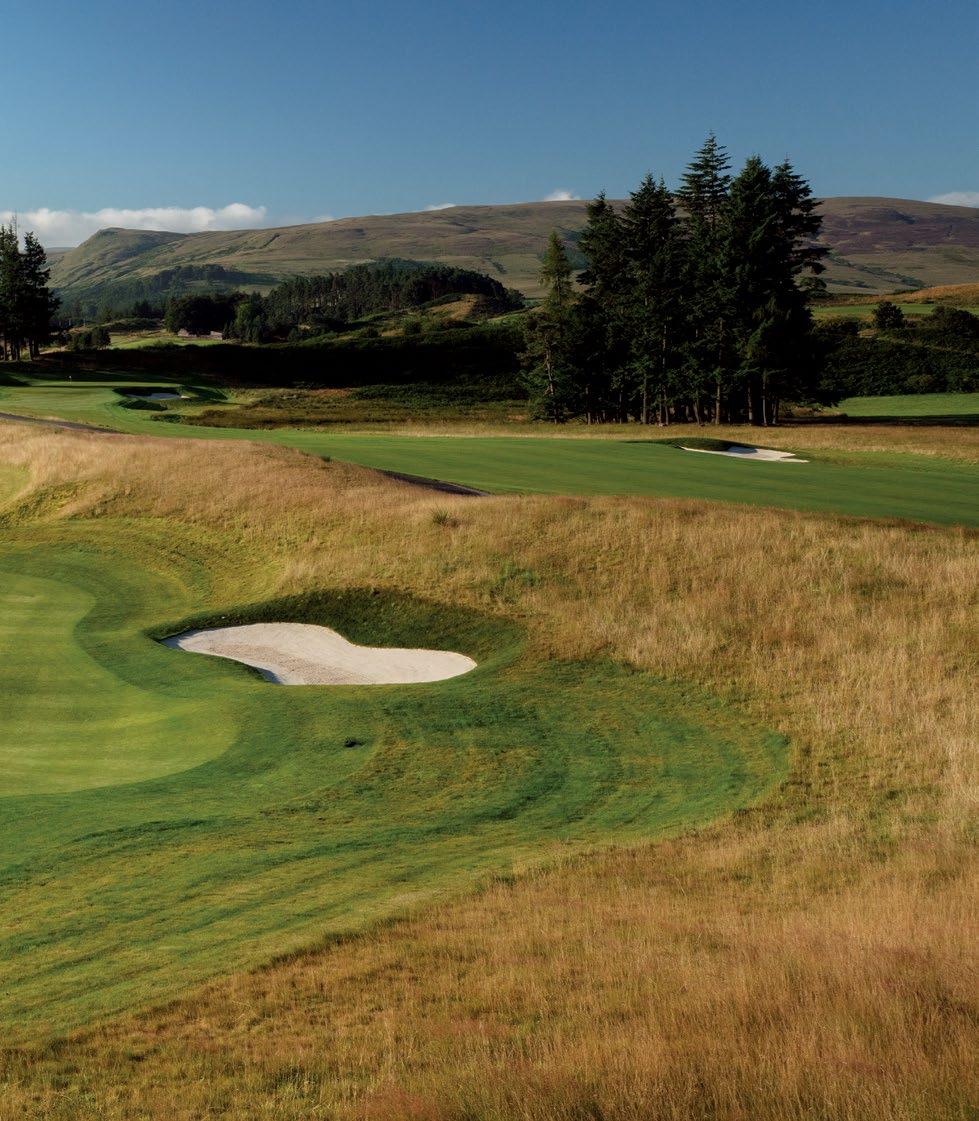
It’s the unequivocal Home of Golf. It’s the setting for some of the world’s oldest castles and finest distilleries. It’s a mythical land of cragged coastlines, heather-filled Highlands, and legendary lochs. It’s on every golfer’s—and just about every other traveler’s—wish list. Your unforgettable Scottish sojourn starts here.
“ if heaven is anything like this,” Lee Trevino once said of Gleneagles, “I hope they save me a tee time.”
Since opening in the rolling Ochil Hills of Perthshire, in central Scotland, in 1924, the Gleneagles Hotel has seduced several other notables from the golf world and beyond. Among them was Bob Hope, who, when asked why he loved Scotland so much, said, “Because the people are so warm, and they have got Gleneagles.”
Having celebrated its centennial last year, Gleneagles remains the ultimate Scottish country estate. Many know it for its three golf courses, but the resort also stands out for its myriad outdoor pursuits—from falconry to four-wheeling—natural setting, and grand hotel, with its Michelin two-star restaurant and art deco American Bar.
On the golf front, Gleneagles is the only European venue to have hosted both the Ryder Cup and the Solheim Cup. Before the hotel was even built, the estate hosted the first golf matches played between Great Britain and the United States, in 1921—in a precursor to the Ryder Cup. Golfers in the tournament had to stay in old railway carriages and fetch their own water—a scene that could not be further from the luxury on offer at Gleneagles today. —Robin
Barwick
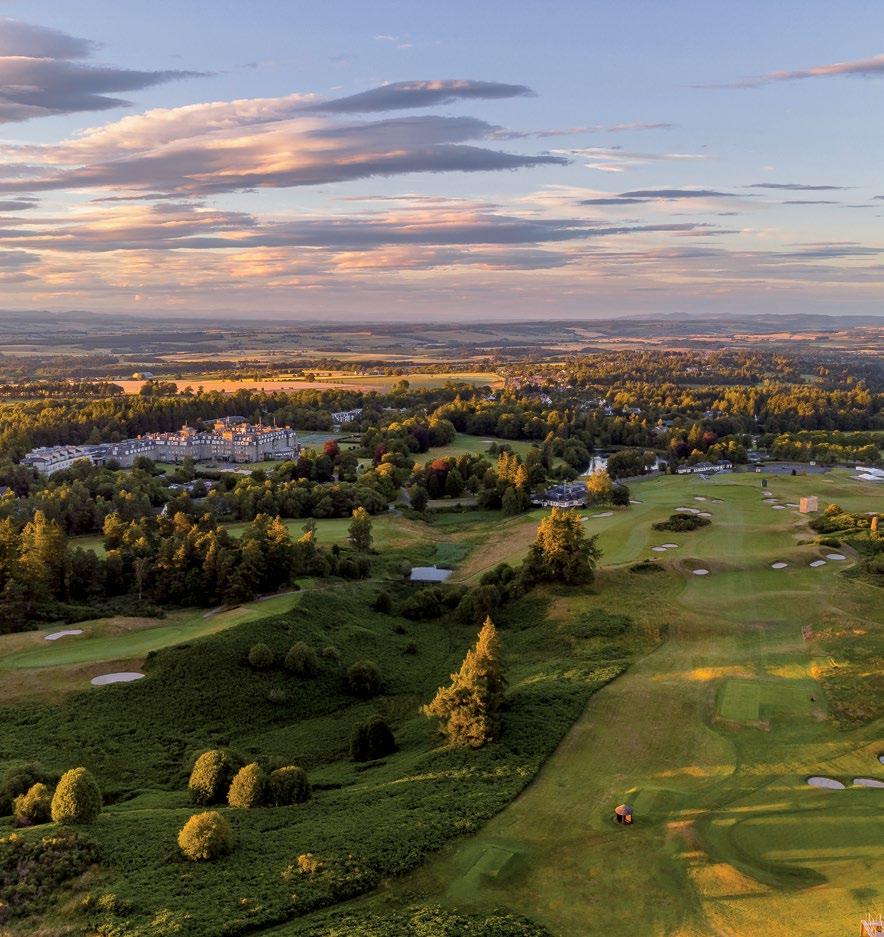
Been a while since your last golf trip to Scotland? Here are a few recent happenings to consider as you shape your next itinerary.
Old Petty, the second 18-hole links course at Cabot Highlands, near Inverness, opened for walking-only preview play from August 1 to September 30, 2025. Designed by Tom Doak, Old Petty is the sister course to Castle Stuart Golf Links, a modern classic that was acquired by Cabot in 2022. Old Petty’s grand opening is due at the end of March 2026.
History aficionados might be interested to know that 2025 marked 100 years since the Open Championship was last played at its original golf course, Prestwick Golf Club, on Scotland’s Ayrshire coast. Prestwick staged the Open 24 times—starting with the first one in 1860—but after hosting the 1925 tournament, it became one of the first classic golf courses to be deemed too short to host a world-class field.
Built by Old Tom Morris by hand, bucket, and spade, Prestwick is a traditional, friendly
club that offers one of Scotland’s great golfand-lunch double acts. After lunch, try a glass of Kümmel—a caraway seed–based digestif sometimes referred to as “putting mixture” for its ability to dull nerves on the green.
The Eden Mill distillery in St Andrews launched a new Golf Gin this summer, featuring botanicals foraged from the Old Course itself. Never has a bottled spirit been so intrinsically attached to the world’s oldest golf course.
Eden Mill is an independent distillery located across the Eden Estuary from the Old Course. Its Golf Gin is distilled using the traditional London dry gin method—with Old Course botanicals such as gorse, heather, and lavender—and includes an underlying salty tang that is reminiscent of the nearby sea.
Eden Mill’s new visitor center opened in August, complete with a rooftop cocktail bar overlooking the estuary.
A new study conducted by the Sport Industry Research Center at Sheffield Hallam University in England shows that the seven golf courses operated by the St Andrews



Links Trust attract 2,000 golfers each week, with 40 percent coming from the United States and 28 percent from the UK. In 2023, 283,000 rounds of golf were played on the seven courses. The annual economic impact of visitors to the St Andrews Links is estimated to be $430 million.
The Road Hole Restaurant and the Road Hole Bar, on the fourth floor of the Old Course Hotel in St Andrews, have both been renovated.
The Kohler-owned Old Course Hotel occupies perhaps the most privileged address in the world of golf—immediately adjacent to the legendary Road Hole on the Old Course.
Panoramic views from the restaurant and bar bring in much of the course, the West Sands, the North Sea, the Royal and Ancient Golf Club, and the northern limits of this ancient Scottish town.
Featuring a vibrant open kitchen, the Road Hole Restaurant is an elegant fine-dining venue where guests might enjoy St Andrews
Bay lobster ravioli, Fife lamb, and desserts made with strawberries from a local farm. The famous Road Hole Bar, meanwhile, boasts a collection of more than 300 whiskies.
“This renovation embodies our ethos of always evolving while remaining true to our roots,” says Old Course Hotel general manager Phyllis Wilkie. “Our guests can savor both the landscape and cuisine that make Scotland truly special and revel in the elevated, comfortable spaces that nod to our home in St Andrews.” —R.B.

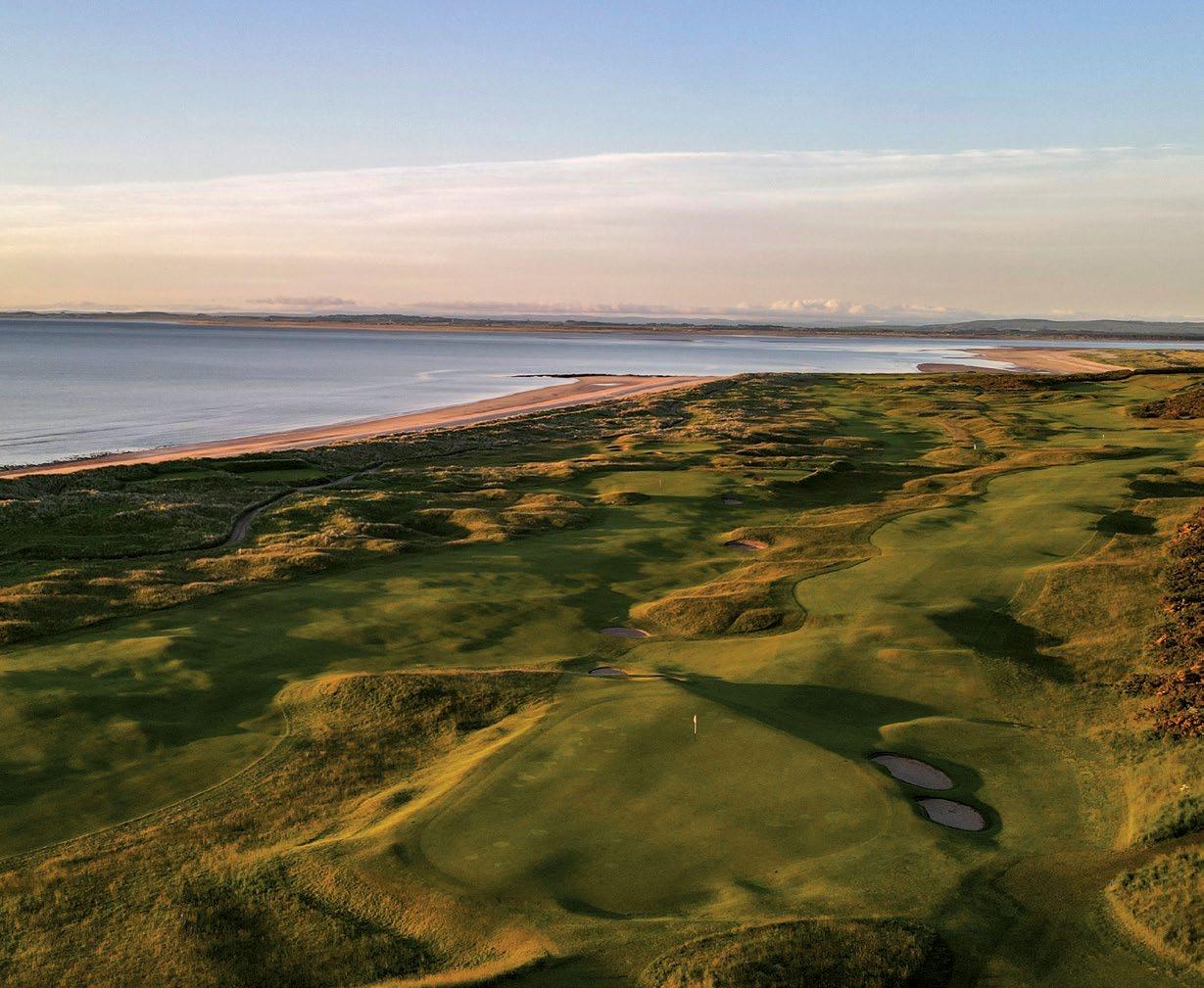
From links golf to historic castles—with just the right measure of Scotch—the northern region around the Dornoch Firth is always at the top of our list. Here’s why.
By Shaun Tolson
golf travelers have long recognized the significance of Scotland’s Fife, East Lothian, and Ayrshire counties, where decades of Open Championships have been contested on proper links venues like Royal Troon, Muirfield, and the Old Course. The Highlands, meanwhile, was historically overlooked by visiting golfers, despite being home to several first-rate courses. That’s changed in recent years, as increasing numbers of discerning golfers have rightfully turned their attention to Caledonia’s northernmost region.
It is here, in the rustic landscape that borders the Dornoch Firth, where one of Scotland’s— and thus one of the world’s—most revered courses has stood ready to test and inspire enthusiasts of the game for nearly 150 years. Set along the shores of its namesake firth, Royal Dornoch’s championship routing opened in
1886 and received its royal status from King Edward VII 20 years later.
Playing across rumpled linksland, blanketed in some areas with heather and punctuated in others with thick patches of gorse, the 6,754-yard course was conceived by Old Tom Morris and served as Donald Ross’s master class in both learning the game and understanding the nuances of course design. This is where, in 1981, five-time Open champion Tom Watson declared his experience “the most fun I’ve ever had on a golf course” and where, since then, countless golfers have been dazzled by one of the purest links experiences. In the words of Herbert Warren Wind, a respected authority on golf course architecture, “No golfer has completed his education until he has played and studied Royal Dornoch.”
Less than half an hour’s drive to the north, an equally scintillating, though far different, experience awaits golfers at Brora Golf Club. Laid out by multiple Open champion James Braid five years after Old Tom Morris completed his masterpiece in Dornoch, the course’s rugged fairways and modestly sloped greens serve as a time capsule for the look and feel of a classic, turn-of-the-20th-century Scottish course.
Brora’s 6,211 yards also offer the unusual opportunity to play alongside—and occasionally over—free-roaming herds of sheep. Those familiar with the history of the game know that early golf courses were laid out across stretches of grazing land, where livestock assisted in keeping grasses trimmed. Brora was born in such a manner—and
is still somewhat maintained that way. While the club’s grounds crew employs modern mowers and machinery, golfers are still unlikely to encounter any deep, penal rough, thanks to the sheep. That said, golfers must also navigate the thin, knee-high electric fences that encircle each green to block the sheep from roaming across the putting surfaces.
The region around Dornoch Firth is home to more than two dozen hotels, each in a distinct setting. Some are converted private estates, while others are modernized castles that date back to the 15th century. For those looking to stay as close to the action as possible—and by “action” we mean Royal Dornoch—there are two properties that outshine all the rest.
Originally known as the Station Hotel when it opened in 1902, Dornoch Station, a Marine & Lawn Hotel, sparkles as a hidden gem tucked almost out of view, less than 200 yards from the first fairway. The property reemerged in 2023 after a nearly year-long renovation that completely transformed the 79 guest rooms, eight suites, and common areas, including a lobby inspired by Highlands hunting cabins and lodges. The hotel’s saloon, Bar Ross, is a striking tribute to Donald Ross. It also serves as an evolving tribute to all the golfers who pass through its doors: A shelving unit that wraps around the game room allows guests to leave a golf ball to commemorate their visit.
The other top choice near Royal Dornoch is Links House. The stunning yet understated

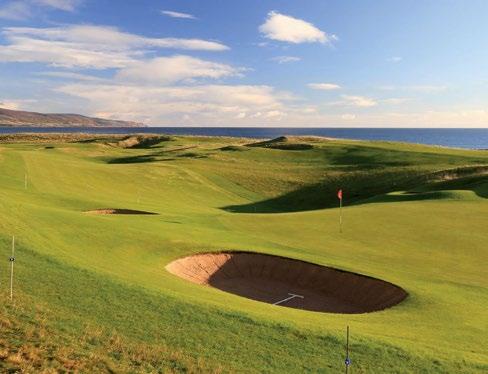
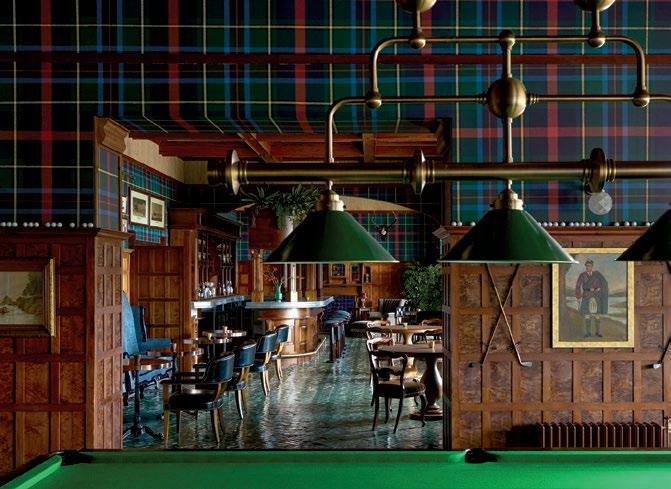
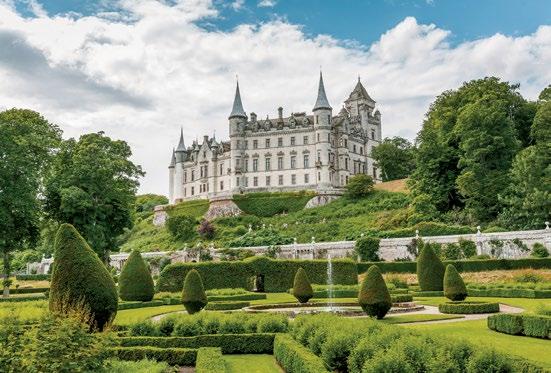
property delivers impeccable hospitality within a Georgian manor home with 15 rooms (including eight suites), each named after one of Scotland’s salmon rivers. The hotel’s main building was preserved and renovated by a Highlands-based firm known for its expertise in refurbishing local castles, shooting lodges, and country estates. Links House is the vision of American Todd Warnock, who first visited Dornoch in 2005 and promptly declared that there was “magic in Dornoch, an enchanted feeling one gets when visiting.” He later added, “It’s the only place I have ever been where time seems to slow.”
Golf goes hand in hand with great whisky in these parts, and adventurous imbibers will want to book one of three tours at Glenmorangie, a distillery that has produced fine single malts since 1843. Master distiller Bill Lumsden takes a bit of a mad-scientist approach to whisky creation, but visitors will find that even his boldest experiments are delicious. “I’m a whisky lover first and foremost,” he says, “and that’s what got me into the industry. I’m not driven by age, or price point, or brand positioning. I just make whiskies that people will love. That’s always my starting point.”
Cultural immersions in the Highlands don’t necessarily require whisky. A 20-minute drive north of Dornoch’s village center brings travelers to Dunrobin Castle, one of Scotland’s “great houses,” as they’re called. Comprising 189 rooms, the castle was designed by Sir Robert Lorimer and Sir Charles Barry, the latter of whom also designed London’s Houses of Parliament. The castle is notable for being one of Britain’s oldest continuously inhabited houses, dating back to the early 1300s, and it is open to selfguided tours.
Born and raised in central Scotland, including summers on the Kintyre Peninsula, David McLay Kidd has exceptional golf, incredible landscapes, and centuries of history in his blood. The renowned golf course designer spoke to shaun tolson about his homeland. tell us about your upbringing in golf. When I was a teenager, my father went to Gleneagles and spent 25 years as the golf courses’ superintendent and built the Nicklaus course that the Ryder Cup was held on. He and Jack became good friends, and my dad was instrumental in negotiating the 2014 Ryder Cup bid that Scotland won. That relationship with Jack was a big part of my entrée into golf course design and construction.
what was it like growing up with a golf-loving father?
My dad is a passionate golf historian, so my childhood was spent in a house full of old golf books and clubs and balls and paraphernalia. We would visit his colleagues at Carnoustie, St Andrews, Turnberry, and Muirfield. The greenkeepers were his closest friends.
did you enjoy that, or did it feel like you were being dragged along?
I loved it. I absolutely idolized the superintendents and what they did—that they were the behind-the-scenes puppet masters for hosting the greatest tournament on Earth. I loved hearing about how these old masterpieces were finely tuned for the best players in the world to come and play, and how they planned for a British Open five years out.
is there a scottish course that served as your muse when you began your career?
James Braid’s work at Gleneagles was the cornerstone of my golf vernacular. What he did with the beautiful, rolling countryside there—he created amazing golf holes that, in many cases, break what would be considered American convention in course design. Lots of blind shots and wild greens and aggressive bunkering. But it’s highly playable, with very wide fairways and giant greens, and it’s not overly long. It’s a real roller coaster. I constantly refer back to that; that golf is supposed to be an adventure in the great outdoors.
what courses do you like to play when you return to scotland?
Kingsbarns, as a new course, I absolutely love. Kyle Phillips and Mark Parsinen created a landscape that one could believe was found rather than created. That golf course, more than any other, taught me that if you could learn the

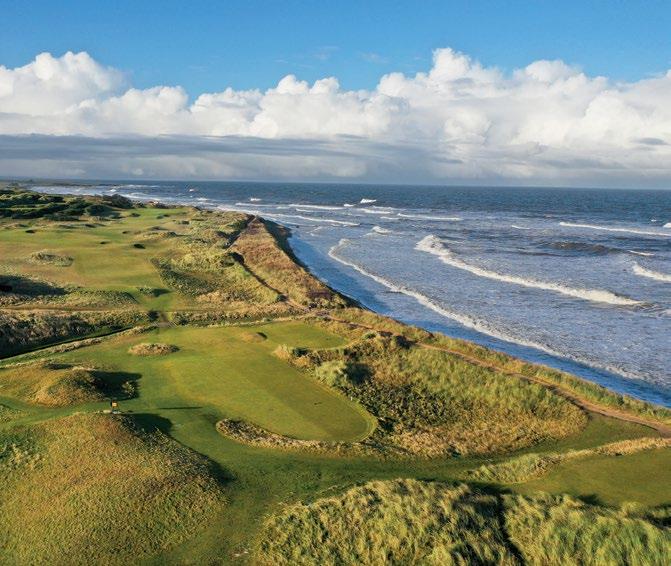
geology of a place, learn the history, you could fabricate a landscape that’s better suited to golf, but do it in a way that is also natural.
are there others?
The Queen’s Course at Gleneagles is the finest short golf course in the world. It’s very similar to the King’s Course but a little bit more intimate, a little narrow, significantly shorter. As a young kid, the King’s Course was too long for me, so the Queen’s Course was perfect. It’s only 5,900 yards from the absolute tips, and yet, I dare you to say it’s easy. It’s just a phenomenal experience for such a short course.
if you’re not playing golf in scotland, what are you doing?
Some of the best salmon fishing in the world is in Scotland. Gleneagles has some beats along the Strathearn River, which is a very good salmon river, and if you stay at Gleneagles at the right time of year, you can go with a guide and fish the Strathearn for some big salmon.
is there a particular region of scotland that you recommend?
The Highlands are spectacular. The biggest mountain in Scotland is Ben Nevis, and you can walk up it. Going through the Highlands and seeing [the village of] Glencoe, understanding the history of the clans, and learning about the Jacobite rebellion and the castles and how William Wallace fought the English—Scotland is probably more famous for that than for its golf.


Kensington Tours’ ancestral journeys bring new meaning to personalized travel.
An exploration of one’s family ancestry can be a profoundly rewarding travel experience. For many Americans, such journeys often lead to the UK— and Scotland in particular. Because each family history is unique, a true exploration into ancestry requires bespoke guidance. Catering to this are Kensington Tours’ Personal Heritage Journeys. Launched in 2021 in partnership with Ancestry .com, the program pairs luxury travel and family heritage specialists to create a comprehensive experience that can never be replicated.
Travelers begin a Personal Heritage Journey by sharing as much of their history as they know, so that a genealogist can collaborate with a destination specialist to craft an itinerary. Family sites and events are linked with local history and culture, all enhanced by private guides who are local to each destination. Genealogists are also available for in-person guidance, and each client dictates the pace of the trip, accommodation choices, and other preferences.
In Scotland, a Personal Heritage Journey might lead family members through the side streets of Edinburgh, the castles of the Highlands, or the shipyards of Glasgow. Discoveries— perhaps a relation to Robert the Bruce?—are guaranteed throughout the journey. —R.B.

Before golf, there was whisky in Scotland. Here, we present five of our favorite distilleries to visit, each dripping in history, tradition, and golden nectar—and close to great golf courses.
The Aberfeldy Distillery, hidden deep in the Highlands on the southern banks of the River Tay, is the spiritual home of Dewar’s whiskies. In 1787, the bard Robert Burns wrote of wanting to “spend the lightsome days” in Aberfeldy with a particular “bonie lassie.” It has been said that Aberfeldy’s Pitilie Burn—the water source for the distillery—is laced with gold, and Burns wrote of how “the crystal streamlet plays.” The Aberfeldy single malt is called the “Golden Dram” because of its tantalizing, honeyed color.
Aberfeldy was the only distillery built by the Dewar family, in 1898; today, visitors can take in the Pitilie Burn, the distilling process, an interactive heritage exhibition, and a bar and shop stocked with every single bottle in Dewar’s range. For those so inclined, there is also the

opportunity to don a lab coat and create a signature blend in a beautifully antiquated blending room.
The finest accommodation in Aberfeldy awaits at the five-star, nine-bedroom Dun Aluinn, which takes group reservations and sits on five acres of land overlooking the town and the river. Golfers will enjoy Blairgowrie Golf Club, one of the finest inland golf venues in Scotland, where the famed Rosemount Course was designed by Alister MacKenzie. —R.B.
On the island of Islay, there’s no shortage of distillery experiences to be had. Ten single malt producers are scattered around 130 miles of shoreline, and the majority specialize in peated whisky, a style that has become synonymous with the 239-square-mile island. You can’t go wrong at any of them—so long as you’re a fan of that smoky, maritime flavor—but if you have an appreciation for the history of Scotch whisky and are intrigued by the restoration of a longshuttered brand, head to Port Ellen Distillery.
There, a tour offers visitors a glimpse behind the scenes and could include tastes from a 1979 vintage cask and other exclusive sips.
Conversely, golfers visiting the island won’t be met with much choice. Islay’s only golf course, the Machrie, dates back to the late Victorian era. Recently redesigned by David J. Russell, the classic links features all the architectural details that you would expect— quick-rolling runoff areas, boldly contoured greens, and the occasional blind shot. —S.T.

In terms of Scottish whisky regions, the Kingdom of Fife makes up the northernmost part of the Scottish Lowlands. The area is associated with grain whiskies made from wheat—like a high-strength bourbon—but the Lowlands region also distills an array of excellent whiskies made with malted barley.
Lindores Abbey in Newburgh, Fife, produces both a single-malt whisky and bourbon. The Lindores Abbey Distillery was established in 2017, and whisky sales began in 2021, but the abbey ruins date back to the late 12th century. The abbey was the site of the first recorded Scotch distillation, in 1494, when King James IV commissioned the monks to produce a supply of “aqua vitae.”
In addition to producing whisky, the distillery has reinstated orchards and gardens first introduced by the founding Tironensian monks more than 1,000 years ago. The region’s historical monuments extend to golf: Newburgh rests upon the southern banks of the River Tay, with St Andrews just 20 miles away. —R.B.
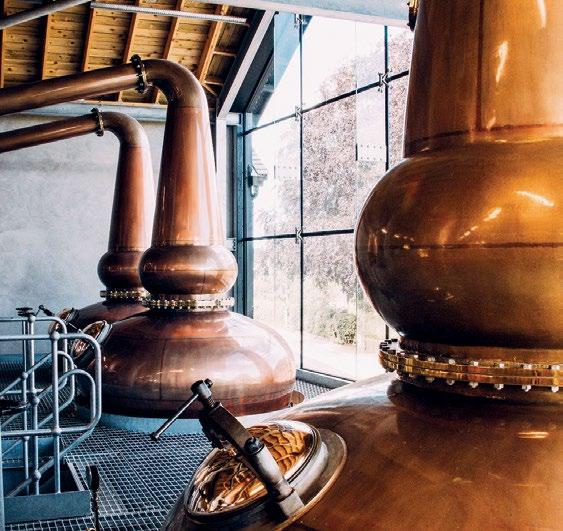
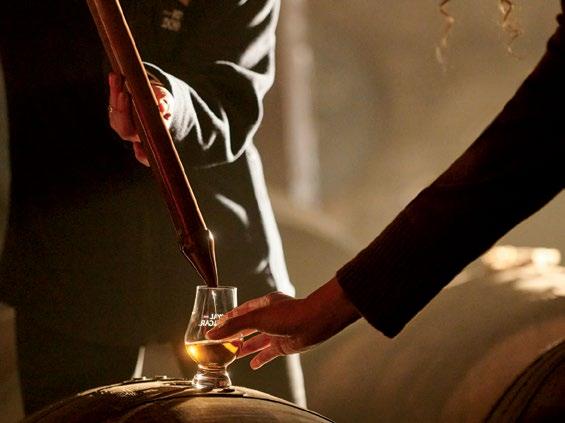

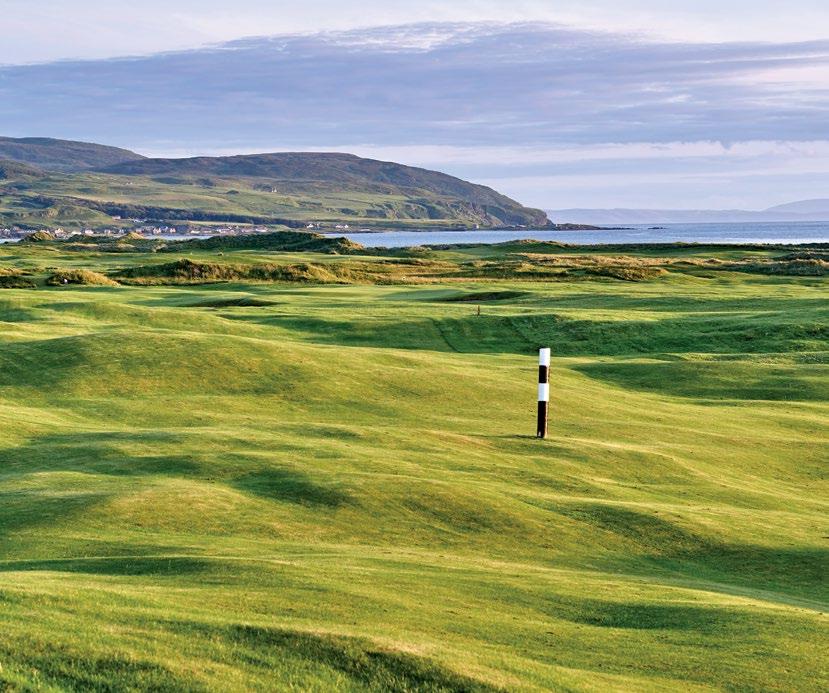
Located far south on Scotland’s Kintyre Peninsula, Campbeltown is three indisputable things: charming, peaceful, and difficult to get to. Those who choose to make the trek (about a three-hour drive from Glasgow) will be rewarded with nuanced whisky and alluring, old-school golf.
Once considered the whisky capital of the world—back when the town was home to almost three dozen distilleries—Campbeltown today features only three production facilities. At Springbank, every step of the whiskymaking process is done on-site, including malting the barley, which most other distilleries now outsource. In addition to Springbank, the distillery also produces Hazelburn and Longrow, offering a whisky to suit all tastes. Options also exist for those who come to Campbeltown chasing par. Machrihanish Golf Club, home to an Old Tom Morris–designed championship layout almost 6,500 yards long, sits along the coast about a 10-minute drive west of town. Spilling over dramatically rumpled terrain, the course stands as one of the purest examples of Scottish links and features an introductory par 4 that Jack Nicklaus once declared the world’s “best opening hole” for its tee shot, which forces players to hit over Machrihanish Bay Beach. Just to the north, Machrihanish Dunes stands as a more modern links design that benefits from the same topography. The handiwork of
David McLay Kidd, the 7,000 yards of golf were routed around the land’s natural features with the intent of building a modern course with vintage appeal. “No longer is it a gentle walk in a garden,” McLay Kidd said when the course opened. “It will be a full-fledged mountaineering expedition at this course.” —S.T.
The most hidden of our recommended distillery visits, Royal Lochnagar sits in idyllic isolation in the Scottish Highlands—just south of the River Dee and a mile from Balmoral Castle, the royal family’s Scottish retreat to which Queen Elizabeth II was particularly devoted.
The Royal Lochnagar Distillery was established in 1845 and received royal approval from Queen Victoria in 1848, after she and Prince Albert enjoyed a visit of their own. It was Victoria and Albert who brought the Balmoral estate into royal ownership in 1852, and they built Balmoral Castle.
A visit to this small haven of Highlands whisky tradition is the perfect complement to a stay at the exquisite Fife Arms Hotel in the nearby village of Braemar. The Fife Arms once welcomed Queen Victoria, and today it combines its Highlands heritage with 21st-century hospitality. The Fife Arms can arrange golf for hotel guests on the beautifully basic nine-hole course at the Balmoral Estate. Originally reserved for the royal family and household, the course recently started offering limited tee times to the public. —R.B.
It was Sean Connery—Scotsman, golfer, 007—who once said, “A man in a kilt is a man and a half.”
The plaided pedigree of this Scottish sartorial fixture is on full display each spring at a one-of-akind golf tournament hosted by a singular Highlands hotel. robin barwick reports.
the kilt is a garment of true versatility. Traditionally woven from the wool sheared from a sheep that has been reared in the Scottish Highlands, a tartan kilt is as appropriate for a wedding, funeral, or graduation as it is for tossing the caber, putting (throwing) a stone, or—dare we suggest—playing a round of golf. A breezy option, perhaps, but playing golf in a kilt does bring together two of Scotland’s age-old icons. And if you throw in a nip of Scotch on the first tee, for courage, well, then you have the full triumvirate.
The Fife Arms in Aberdeenshire—once a 19th-century hunting lodge, now a hotel of extraordinary artistry and elan—has hosted the annual Kilted Open since 2023, an event that blends all of these fine Scottish traditions into a one-of-a-kind golf tournament. The Fife Arms
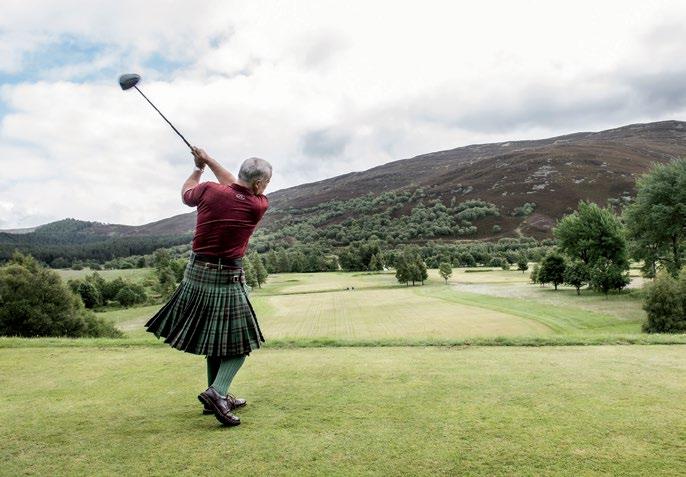
is the centerpiece of the remote Highlands village of Braemar, which is best known in Britain for two reasons: firstly, as one of the most likely habitations to welcome a white Christmas (the winters here are cold, even by Scottish standards); and secondly, as home to the Braemar Gathering for more than 900 years. Gatherings—or Highland Games—are held at a variety of Highlands locations, with Braemar’s being particularly renowned, as it has been attended by members of the royal family every year since 1848.
The Kilted Open is a Texas scramble played by teams of four in May, taking place over two local courses: Braemar Golf Course and the Royal Golf Course at nearby Balmoral Castle, the Scottish retreat of the Royal family, just 10 miles up the road. The wearing of a kilt
A tartan is more than fabric—it is fabric woven with family history and pride, and it gets emotional. John McLeish, chair of the Scottish Tartans Authority, says, “Tartan is a story of feelings. In a kilt, tartan is the design applied to woven wool, but it is the feelings that make it special. They may be based on myths or facts, but they are real feelings all the same, and people wear their tartan with pride. I am charged with emotion when I walk onto the games ground for the Braemar Gathering, thinking of our forefathers and carrying on this tradition.”
It is a misconception that only Scots are entitled to have their own tartan. Anyone can create one, although as weaving a tartan is complex, expert guidance is highly recommended. Every new tartan needs to be registered with the Scottish Register of Tartans, which conducts searches to confirm that each tartan is unique. The site tartanregister.gov.uk lists approved tartan designers and weavers. The list includes Lochcarron of Scotland, which produced a King Charles III tartan in 2023, and which His Majesty the King has worn to the Braemar Gathering.
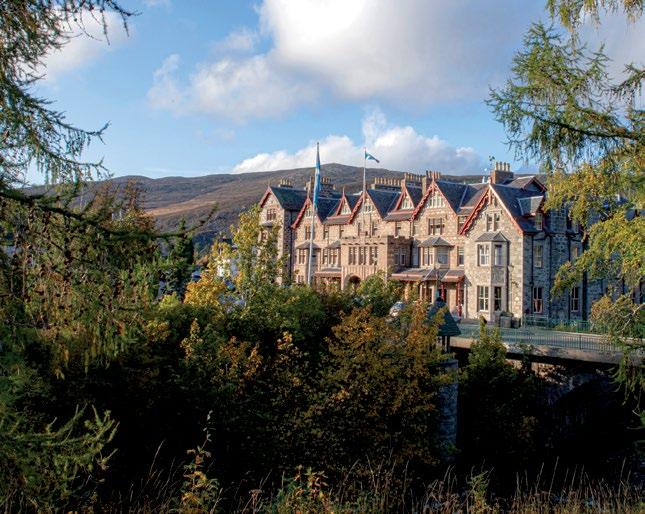

is not compulsory at the Kilted Open, although encouraged, and the hotel can arrange rentals.
Braemar GC occupies a serene tract of Glen Clunie, with the river-basin golf course shaped on one side by the bends of Clunie Water, a tributary of the River Dee and a good stretch for fly-fishing brown trout. The valley is hemmed by vast hillsides covered in pine, birch, purple heather, and juniper. During rutting season in October, the bellowing of stags from the most prominent hill, Morrone, can be heard daily, at dawn and dusk in particular, as the animals descend from the high ground to patrol the lower slopes. If you are lucky, a golden eagle might soar overhead.
They keep things simple at Braemar GC, ensuring that this course—which expanded from nine holes to its current 18 in 1911— keeps in step with its wondrous surroundings. With a membership of 100, Braemar’s modest clubhouse is only open from April until October, and during the remaining months of reduced daylight, golfers are expected to pay their greens fee into an honesty box by the first tee.
Braemar GC was drawn up by Balgownie professional Bob Mearns, who had also created the idyllic nine-hole layout at the 50,000-acre Balmoral Estate, a course originally reserved for the royals and staff. Like all visitors to the Highlands, Queen Victoria was captivated by the natural splendor of this region. She and Prince Albert bought the Balmoral Estate in 1852 and built Balmoral Castle. No sooner had construction of the castle been completed,
in 1856, than the Fife Arms hotel opened, originally as a hunting lodge for the Duke of Fife, who had married into the royal family.
The Fife Arms was acquired by Swiss art collectors and gallery owners Iwan and Manuela Wirth in 2014 and brought into their Artfarm hospitality group. After five years of redevelopment, the hotel reopened in 2019.
The bold ambition was to rekindle the hotel’s Victorian splendor—an age when the Fife Arms would welcome Queen Victoria and host lavish balls for the royal family—while introducing impeccable 21st-century luxury. The result is an unqualified triumph.
Each of the 46 guest rooms and suites is bursting with a distinct personality, telling its own story with period antiques and original works of art. The same attention has been devoted to the public spaces, from the sophisticated Clunie Dining Room to the Drawing Room, where a typically peculiar (and original) portrait by Pablo Picasso puzzles guests over afternoon tea. Bertie’s whisky bar offers an interior of intoxicating burgundy, offset by mirror-backed shelves stocked with 400 different whiskies, while the hotel’s Flying Stag pub—which boasts an array of Highlands artifacts—offers traditional and seasonal fare of the highest caliber.
As the Fife Arms embraces golf in its own, tartan-clad way, so golfers are invited to embrace the Fife Arms. It’s a good swap, as there is probably no better place to begin and end a day of Scottish pursuits.
Caribbean coastlines, Canadian Rockies, Australian islands— spectacular backdrops set the stage for these Kingdom favorites around the world.
Mauritius
Heritage Golf Club, hugging the southern shoreline of Mauritius, is the Indian Ocean’s only 45-hole golf resort. Its two championship golf courses are contrasting in nature: the lush, parkland Le Chateau and the linksy La Reserve Golf Links (right). The latter, which was codesigned by past Open champ Louis Oosthuizen, is built upon former sugarcane fields and relies on native grasses to promote ecological diversity. It also offers a unique playing experience, with five par 5s, five par 3s, and a couple of drivable par 4s. While the club is home to a pair of luxury beach resorts (Le Telfair and Awali), guests can take an ultra-exclusive journey into 19th-century French elegance by staying in the private suite at Le Chateau, which overlooks ornamental gardens and its namesake golf course.
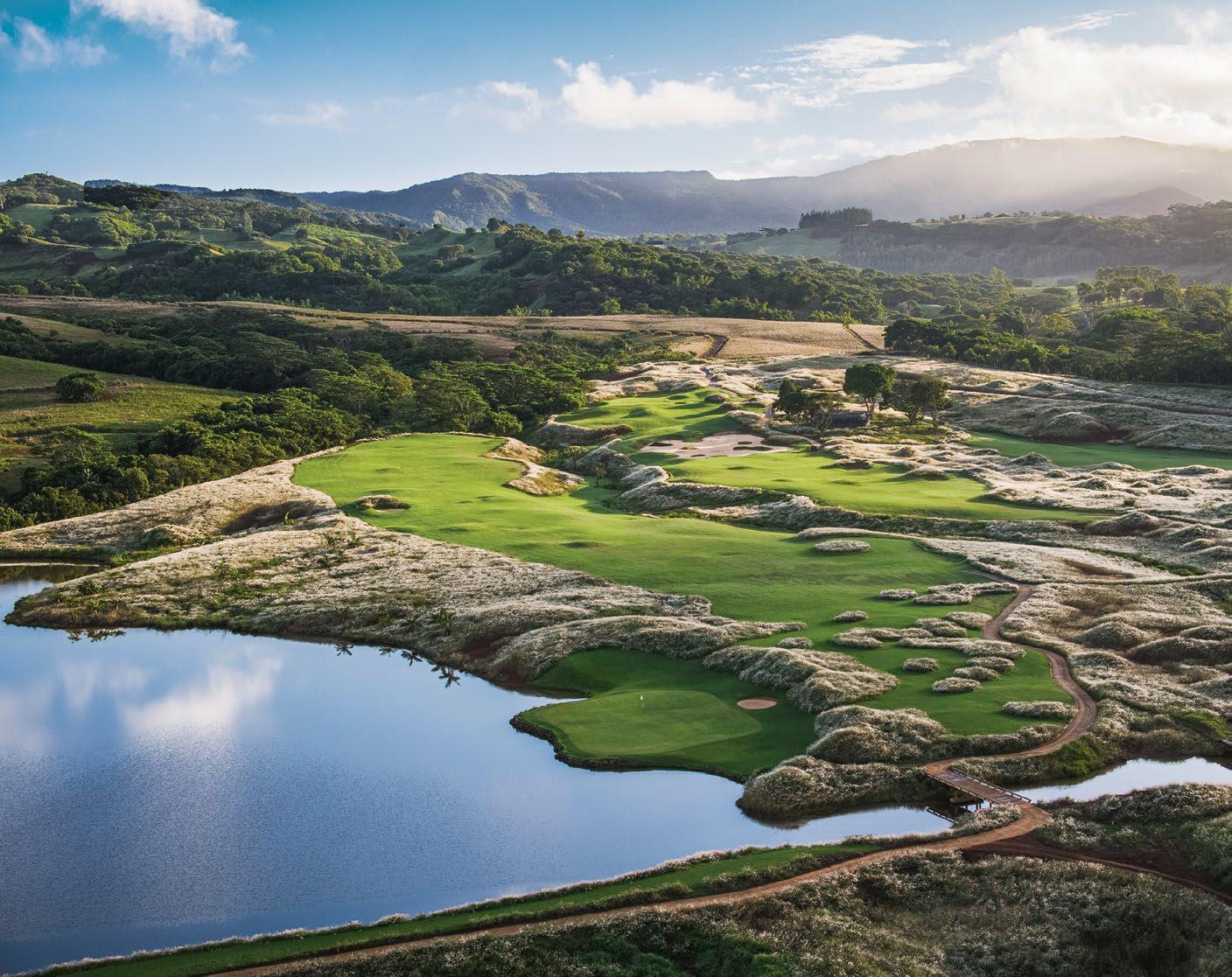
Jacob Sjöman
Mexico
Home to two sprawling beach resorts—and soon to welcome one more, the St. Regis Los Cabos—Quivira is a gated Mexican retreat set just outside of Cabo San Lucas. It is perhaps most famous for its semiprivate golf course, which itself is known for a handful of dramatically positioned cliffside holes.
Take the par-3 seventh hole, which the course’s designer, Jack Nicklaus, once described as “awesome, spectacular, picturesque” and “a monster.” Carved into a cliff and playing downhill to a green with the Pacific Ocean crashing on the rocks hundreds of feet below, the hole remains a beautiful beast, 10 years after Quivira Golf Club first opened its doors. Lately, the club has been tinkering with other holes, making the course feel both familiar and fresh for those who have played it in the past. Most notably, Quivira now opens with a mediumlength par 4 (previously the 18th hole), which plays out to an infinity-edge green perched not far from the beach and the Pacific.



Australia may be one of the world’s mosthyped golf destinations, but it hides a few secrets that only the well-informed are likely to know. Cape Wickham Golf Links, just about an hour outside of Melbourne, is one of those secrets. Set on King Island in the Bass Strait, midway between Tasmania’s main island and the Australian mainland, this 6,150-yard Mike DeVries design takes full advantage of its location. The course boasts wide fairways carved between large dunes and offers firm and fast playing conditions. Simply put, the golfing experience is as authentically “links” as you’ll find anywhere in the world, with all 18 holes offering ocean views.

This Canadian resort course’s origin story boasts some notable names in golf architecture. It all started in 1911 when Bill Thomson, a Scottish expatriate who apprenticed under Old Tom Morris in St Andrews, built a nine-hole layout. A little more than a decade later, Donald Ross arrived to expand the course to 18 holes; however, it was Stanley Thompson—Canada’s most decorated golf architect—who molded the final iteration of the course in 1928. Wedged between the Canadian Rockies and the Bow River, the almost-7,000-yard routing is teeming with scenic golf holes, none more captivating than the famous par-3 fourth, which is guarded by the majestic Rundle Mountain. “The hole is called the Devil’s Cauldron, with a glacial lake between the back tee and the green,” explains golf photographer Jacob Sjöman. “The setting is hard to beat. Rundle Mountain is huge, and it feels like the mountain hangs over you.”
Dominican Republic
For decades, Casa de Campo has enjoyed a place among the pantheon of golf resorts in the Caribbean. Shortly after its now-famous Teeth of the Dog course (shown) was completed, in 1971, the Pete Dye design was deemed by many pundits to be the region’s best course. Earlier this year, the seaside course closed for a comprehensive, Jerry Pate–led restoration, one that not only regrassed the entire property with Dynasty Paspalum (a varietal that’s ideal
for seaside conditions) but also expanded and reshaped greenside bunkers and returned the putting surfaces to their original sizes. With the course reopening in November, it joins the Dominican Republic property’s new Premier Club (a standalone wing of butler-enhanced luxury suites) and state-of-the-art destination spa to form a trio of amenities that is certain to reestablish Casa de Campo among the Caribbean’s leading golf resorts.

It sounds like a fantasy, but there really is an 18-hole David McLay Kidd golf course on a private island set in the middle of the South Pacific. The place is Fiji’s Como Laucala Island, where DMK’s design features verdant, narrow fairways laced between hills landscaped with lush palms; a signature par 5 extending right onto a white-sand beach; and very few golfers. In fact, it’s quite possible you could play an entire round at Laucala and never see another player.
Beyond its golf course, Laucala is one of Earth’s most remarkable destinations, with just 25 villa-style accommodations scattered across more than 3,000 acres. The largely undeveloped expanse offers ample opportunities for hiking and horseback riding, while underwater explorers enjoy access to some of the world’s best dive sites.

Costa Rica
Arnold Palmer preferred walking rounds of golf, but he had to adapt when presented with a 125-acre site on Costa Rica’s rugged Peninsula Papagayo. Stretching nearly nine miles from first tee to 18th green—with constant ups and downs along the way—Palmer’s Ocean Course set a new standard in Costa Rica when it debuted in 2004. It remains the lone layout and a primary attraction at Peninsula Papagayo, a 1,400-acre swath of luxury resorts, residences, hidden beaches, and tropical dry forest that juts into the Pacific in the country’s Guanacaste province.
Navigating a cart on the Ocean Course can feel like a safari drive, as howler monkeys and myriad bird species frequent the forest that lines the fairways and long paths that link one hole to the next. Each hole offers a distinct environment, from thread-the-needle layouts in jungle-shrouded valleys to wide-open par 5s with ocean views all around.
The Ocean Course completed a twoyear renovation in 2023, led by Thad Layton of Arnold Palmer Design Company. More recently, it welcomed a new neighbor— Nekajui, a Ritz-Carlton Reserve, an exclusive clifftop resort near the Ocean Course’s Ronald Zürcher–designed clubhouse.
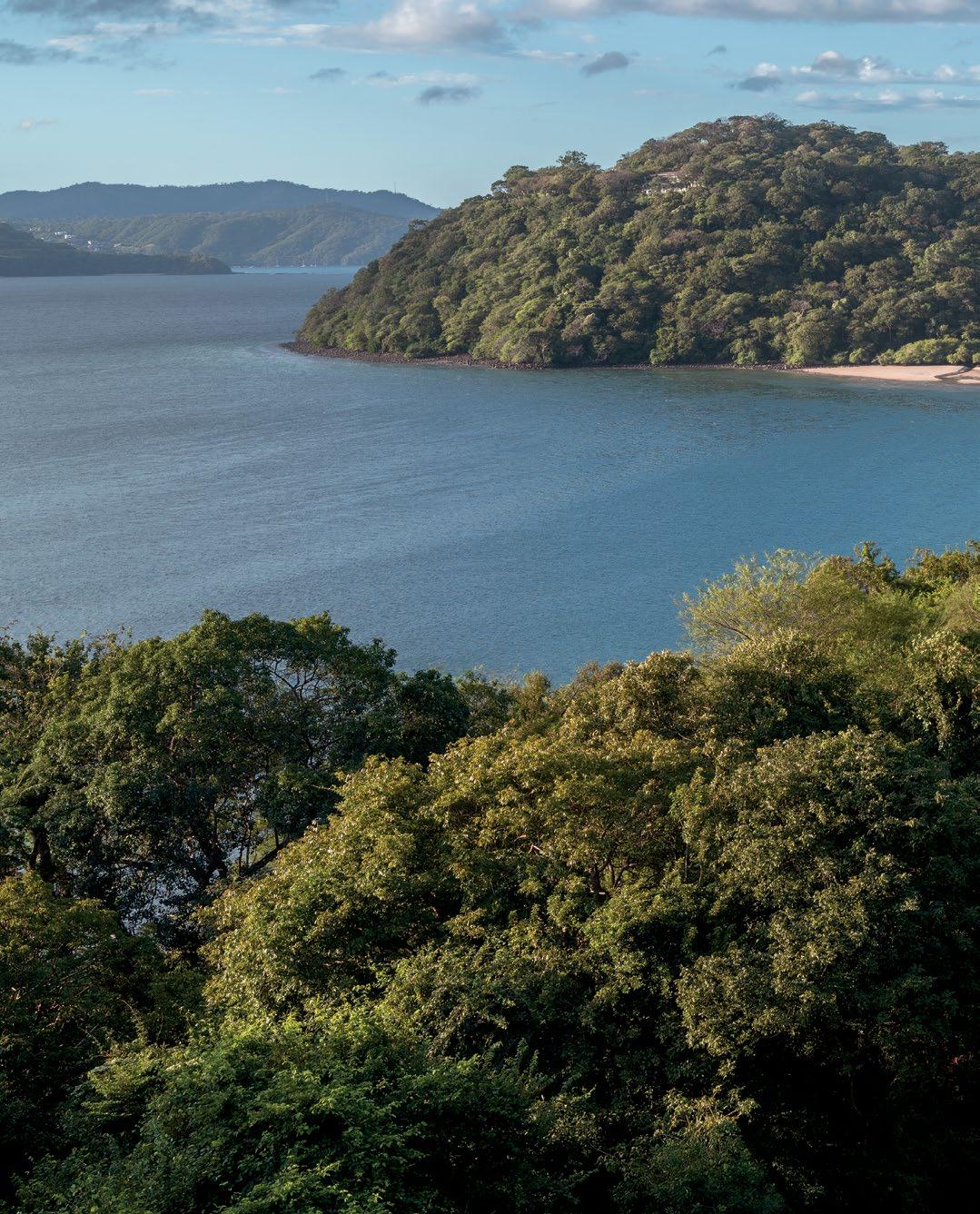


When it opened a quarter of a century ago, Jack Nicklaus’s “Tail of the Whale” hole (shown) helped put Punta Mita on the map. Billed as having the world’s only natural island green, the optional par 3 on the Pacifico Course is open for play only during low tide, when the island is accessible via an aquatic golf cart. But even those who miss their shot at the Tail will find no shortage of thrills at the now-famous resort on Mexico’s Pacific coast.
The 1,500-acre property has become a model for luxury resort communities in Mexico and beyond. Set on a hammerhead-shaped peninsula about 45 minutes north of the Puerto Vallarta airport, Punta Mita comprises two Jack Nicklaus–designed championship golf courses, 18 residential communities, beach clubs, restaurants, and a pair of luxury resorts from Four Seasons and St. Regis, the latter having recently emerged from a $45 million renovation.
Barbados’s prestige as a golf destination got a boost in 2022 thanks to a Ron Kirby–led redesign of the almost-7,000-yard golf course at Apes Hill. Trundling through tropical forest about 1,000 feet above sea level, the resort and private residential community’s crown jewel delivers striking vistas—much like Kirby’s most famous design, Old Head Golf Links, in Ireland. In fact, along certain stretches of the course, golfers will enjoy simultaneous views of the Atlantic Ocean and the Caribbean Sea.
Although Apes Hill originally operated as a semiprivate club, these days (following its acquisition by a Canadian businessman in 2019), it’s far more exclusive. Most rounds are reserved for members who have purchased real estate—such is the only way to gain membership. However, the club also doubles as a boutique resort, where guests can book stays in a variety of villas that owners make available through a rental pool.
CONTRIBUTORS: Robin Barwick, Shaun Tolson & Bruce Wallin
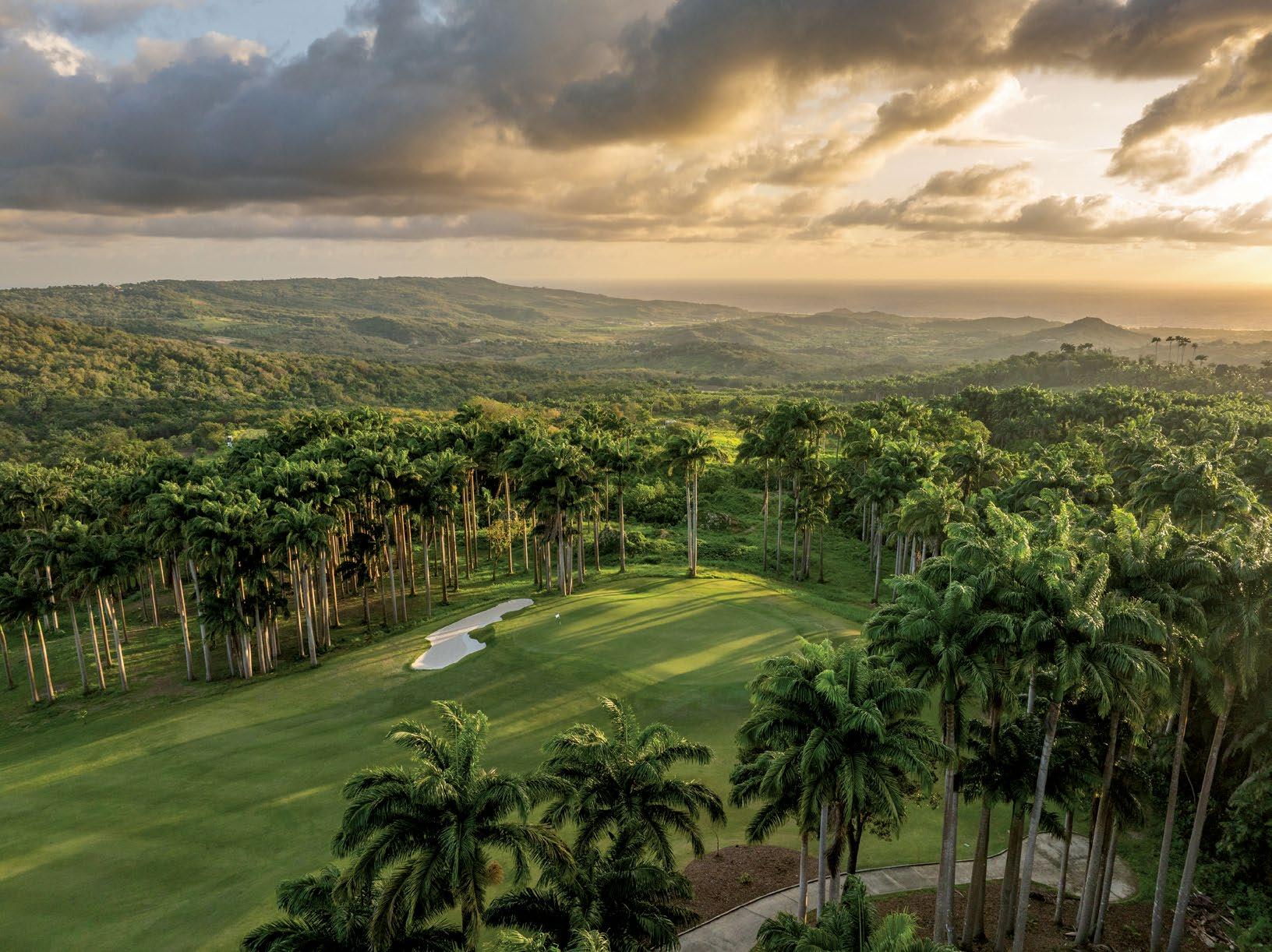
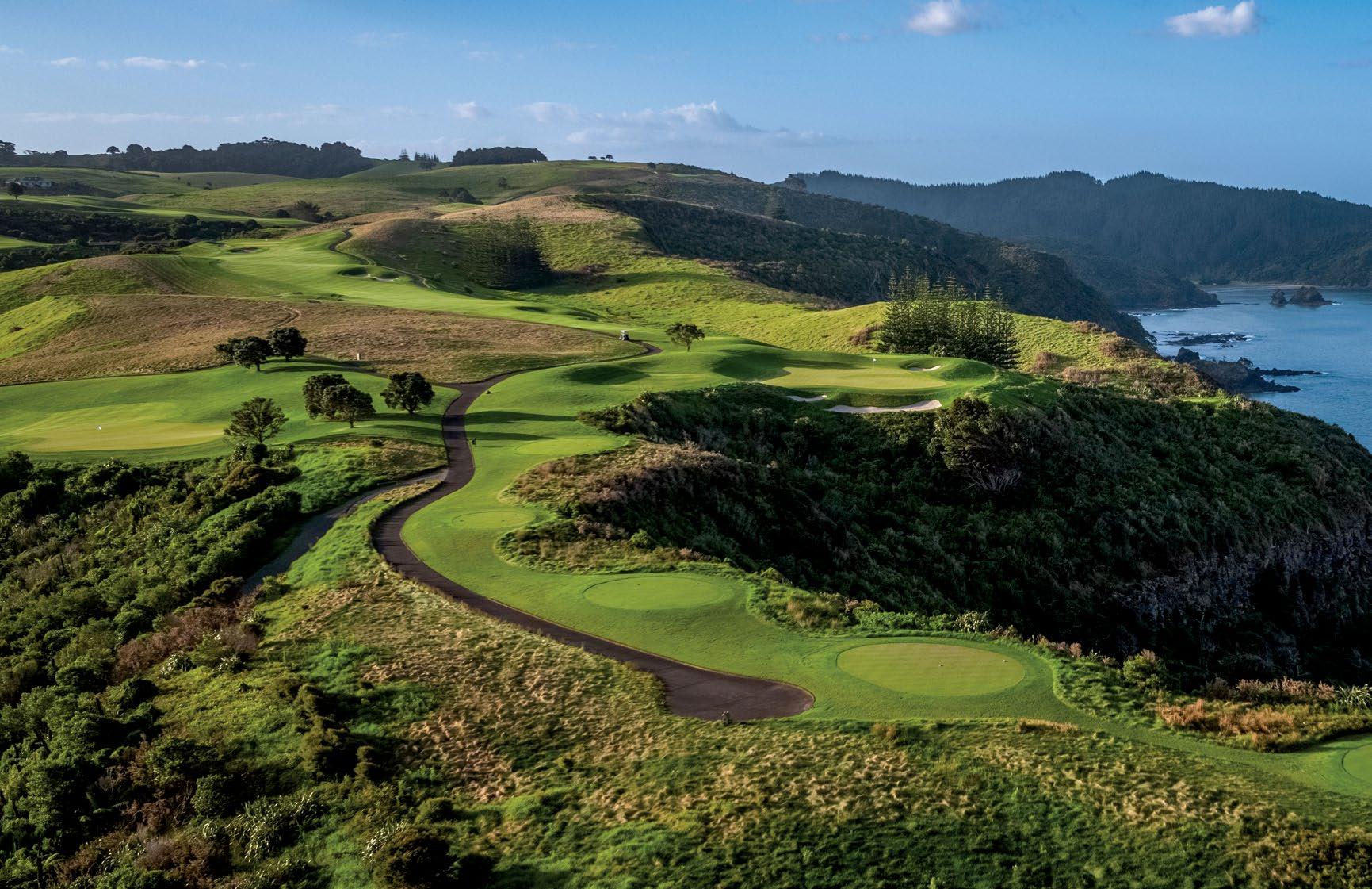

You’ve been dreaming about it ever since that first time you saw a photo of Kauri Cliffs. Here’s why you should follow your adventurous instinct—and what you need to know before heading south on an epic journey.
For a true taste of New Zealand golf, tee it up at one of the nation’s uniquely Kiwi “country courses.”
By Hal Phillips
new zealand is known for luxury golf resorts. Kauri Cliffs pioneered this trend when it opened in 1999, and some two dozen elite courses have since debuted, frequently accompanied by stellar accommodations. This template has become the global face of Kiwi golf, but what of the Kiwis themselves?
The locals tend to lean the other way. Kiwis are famously without airs, an ethos faithfully reflected in the nation’s collection of “country courses.” These casual, obscure, rough-hewn, frequently magisterial, and always idiosyncratic layouts are sprinkled across the North and South islands. Invariably modest, they tend to exist in remote locations where honor boxes prevail and sheep maintain the fairways (but not the greens, thanks to perimeter fencing).
The bulk of the country courses were developed in the 1950s and ’60s by farmers operating their own DC3 Oliver tractors. And they might well have remained a national secret if it weren’t for, ironically, a man largely responsible for New Zealand’s luxury-golf emergence.
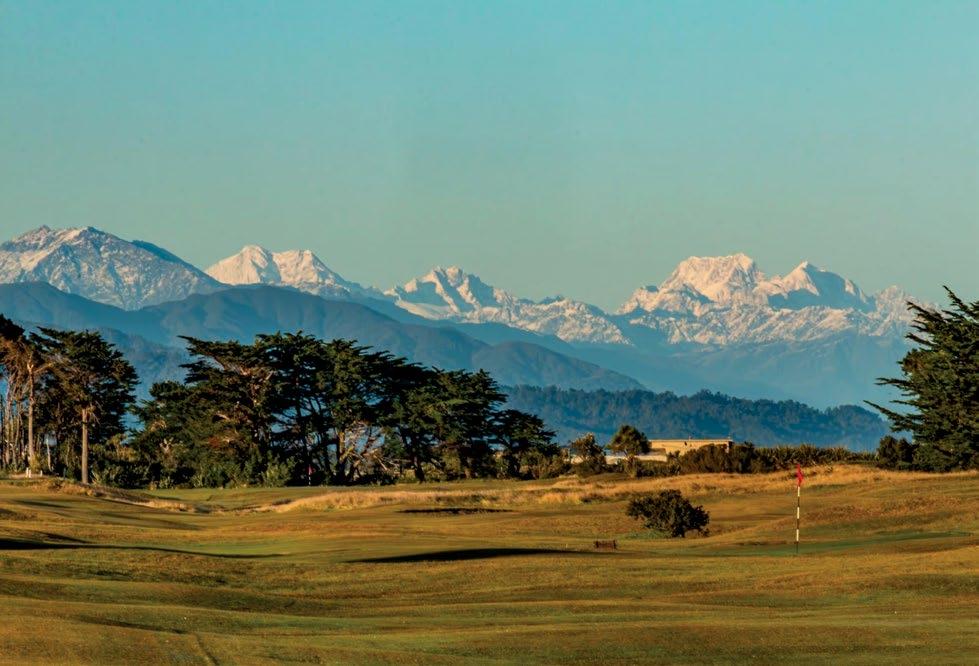
Tom Doak arrived in New Zealand in 2002 to build Kauri Cliffs’ sister course at Cape Kidnappers. He would later return to create Tara Iti GC and, next door, Te Arai Links.
Each time, he was accompanied by a coterie of course-shaping design nerds who, along with their like-minded boss, loved digging up these rusticated, off-brochure golf experiences. Their subsequent evangelism has drawn far-flung Doak acolytes and minimalist-architecture mavens to the country courses, in addition to
well-heeled tourists looking to break up the drive between resort venues.
Here, a few of our favorite local spots from Auckland to Aoraki.
Raw, subtropical links just south of 90 Mile Beach in Ahipara, five hours north of Auckland by car. Formerly known as Kaitaia Golf Club, the course features 18 gorgeous all-weather holes, with an outside loop that is truly sublime.
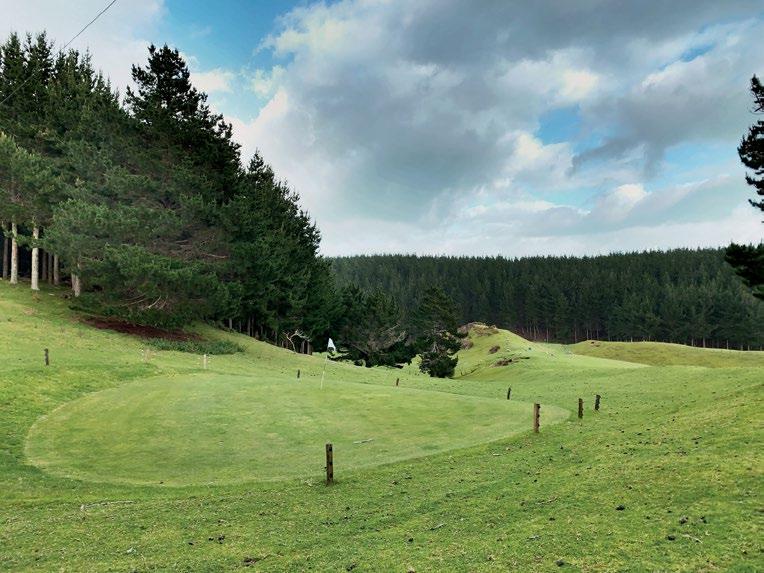

Seaside parkland layout three hours west of Taupo, highlighted by what Doak shaper Clyde Johnson calls a “cracking seven-hole stretch that tracks along the rugged Taranaki coastline and back, over perfectly scaled dunes.”
Johnson, who now has his own shop (Cunning Golf Design), calls Waverley “an adventurous journey over varied inland dunes, interspersed with half-par holes that tempt and frustrate.” Great fun and just 90 minutes south of Waitara. Waverley does close for 10 days each July for lambing season.
The first president of this nearly 120-year-old club was turn-of-the-century New Zealand prime minister Richard Seddon. Set on the South Island’s wild and rugged west coast, the club’s 18-hole, out-and-back links course borders the Tasman Sea and offers fantastic views of Aoraki/Mount Cook, New Zealand’s highest peak.
Par-68 thrill ride set amid a South Island moonscape accented by outcroppings of schist rock. Roxburgh is almost too organized to be considered a country course (it even has a website, roxburghgolfclub.co.nz, when many of its contemporaries get by with Facebook pages at best). But it qualifies based on its absolute middle-of-nowhere location—and the fact that it’s well worth the trek.
Nine quirky, exhilarating holes routed over flamboyant terrain, with greens to match (some of them perfectly rectangular). This region south of Auckland is known for its blackiron-sand beaches, visible across the peninsula from the high ground at Kawhia, which is nevertheless bunkerless.
How an American businessman turned New Zealand into a golf mecca.
By Jeff Wallach
on a recent visit to what is now known as Rosewood Kauri Cliffs, my wife and I were the only guests on property. We were ably catered to by a cadre of servers, chefs, golf pros, and other staff, and each night a fresh tasting menu with wine pairings awaited us. Most significantly, we also had one of the best golf courses in the world virtually to ourselves.
Such an intimate, exclusive golf experience—one that you won’t find at Pebble Beach, Pinehurst, or other top golf resorts—owes to the vision of billionaire American hedge-fund manager, developer, and philanthropist Julian Robertson. When he opened Kauri Cliffs in 1999, Robertson essentially created a new class of golf experience, one that he and other developers have since used as a model for New Zealand’s elite lineup of luxury golf resorts.
“Golf travelers everywhere owe a debt to the Robertsons,” says Ray Geffree, director of golf at Cape Kidnappers, which Robertson opened in 2004 outside of Hawkes Bay. “Others
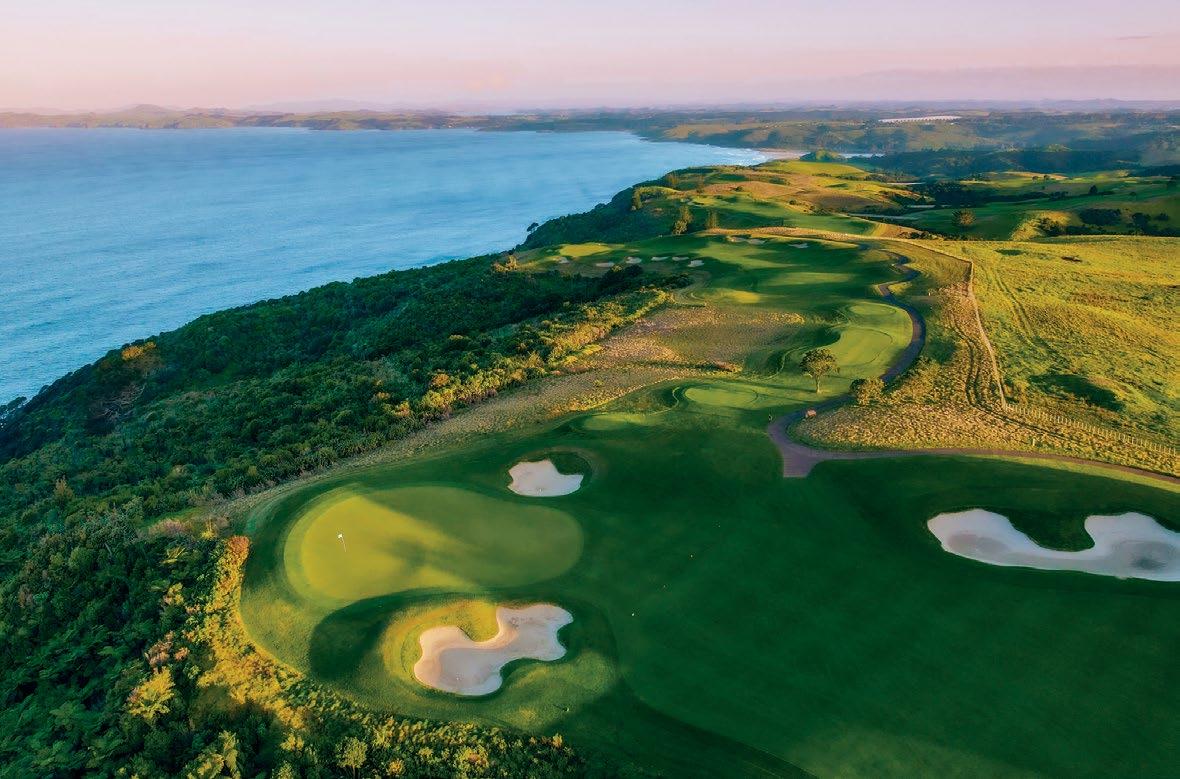

have since followed and riffed on their example, but the Robertsons almost single-handedly created this country’s luxury destination golf brand.”
The Robertson family bought the 6,000acre property that would become Kauri Cliffs in 1995. The site lies in the northern Bay of Islands and rolls across high cliffs hiding three private beaches below, including the unmissable Pink Beach, where the colorful sands are made of millions of broken-down shells.
Golf architect Dave Harmon visited more than three-dozen times to design an inspired and unusual collection of golf holes in this unique setting. At various times the course brings to mind Lowcountry golf in the Carolinas; windy oceanside holes in Hawaii; Irish links complete with spectating sheep; and Western mountain golf where using the terrain to move the ball toward the hole may be your most successful strategy. The par 3s, all requiring ravine crossings, are especially dramatic. And best of all, even with the ample attention it has received since opening a quarter century ago, Kauri Cliffs hosts a mere 50 rounds on a busy day.
Robertson followed on the success of Kauri Cliffs by purchasing 6,000 acres on a peninsula in prime New Zealand wine country. There, he built Cape Kidnappers, a country retreat on a working sheep and cattle farm. He also created a wildlife sanctuary to protect native species, a collection of villas and suites, and a Tom Doak golf course that, like its predecessor, would soon
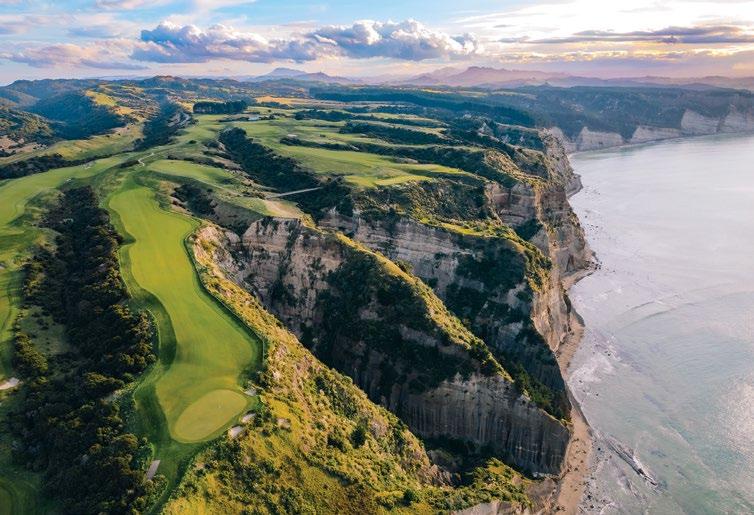
rank among the top layouts in the world.
“The play is seaside golf at its finest,” Doak says. “The surface is firm and fast, the conditions can be windy, and the player who can control his trajectory will be master of the course. You’ll hit shots over the tops of tea trees and play along the edges of deep ravines.”
Robertson bought the final property in his masterful triumvirate, Matakauri Lodge, in 2009. The resort, outside of the adventure capital of Queenstown on the South Island, lacks a golf
course but serves as an ideal first or last stop on a journey through the Robertson portfolio.
That portfolio, now managed by Rosewood Hotels & Resorts, stretches from Queenstown to the northern tip of the North Island, where Kauri Cliffs’ plantation-style suites and villas overlook the Pacific from a high promontory. In addition to golf, the resorts offer hiking, tennis, fishing, sailing, wine tasting, cultural experiences, and more. And if you’re lucky, you might just have it all to yourself.
long before there was Kauri Cliffs, Huka Lodge at Taupō created the template for what would become New Zealand’s signature blend of luxury accommodations and outdoor adventures. Now known as the grande dame of luxury lodges in the country, Huka had humble beginnings, in 1924, as a fishing outpost along the Waikato River. It gradually evolved into a world-class retreat with a who’s who of visitors over the years. To celebrate its centennial last year, Huka went through
comprehensive renovations, including updates to the main lodge, the 20 generously proportioned suites, the two owners’ residences, and the spa huts and wellness grounds. Huka’s legendary roster of activities features everything from fly-fishing and jet boating to skydiving and heli-hiking. Though not a golf resort, the lodge is only five minutes from Wairakei Golf and Sanctuary and 20 minutes from the Jack Nicklaus–designed Kinloch Club. —Jill Robinson
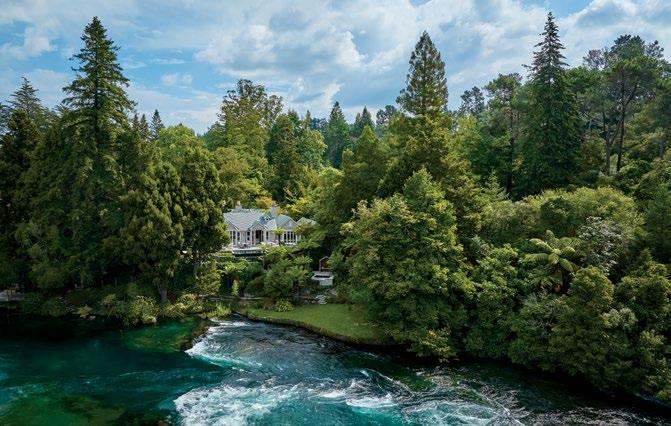
around queenstown, in the heart of the South Island, golf and wine converge with vigor. To that we owe a debt to landscape architect John Darby, who helped develop the famed resort destination’s two top golf clubs: Jack’s Point and Millbrook. He also founded Amisfield, one of Central Otago’s most respected vineyards (whose eponymous restaurant in Queenstown proper is divine). Golf and wine now also come together at Gibbston Valley, located just east of town, which has produced the region’s renowned Pinot Noir longer than anyone. The vineyard’s lodge, spa, restaurants, wine cave, and real estate community now boast nine golf holes designed by former Kiwi tour pro Greg Turner. The course is scheduled to begin limited public play once the clubhouse is complete, in spring 2026. —H.P.
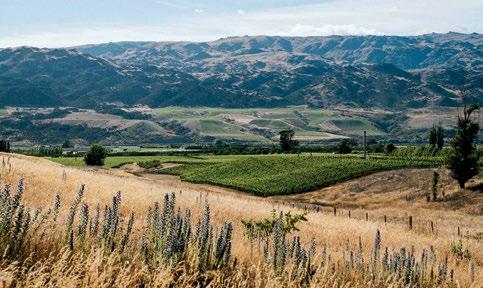
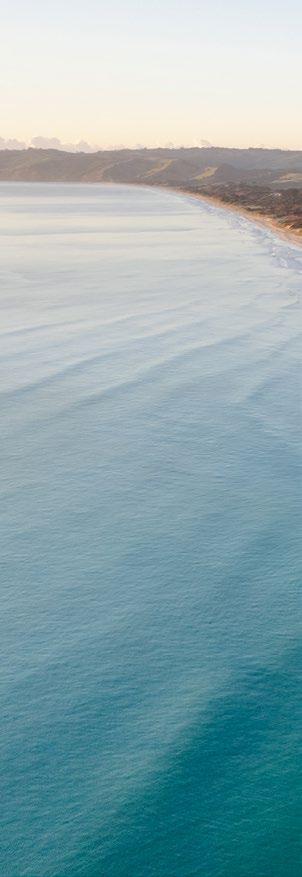
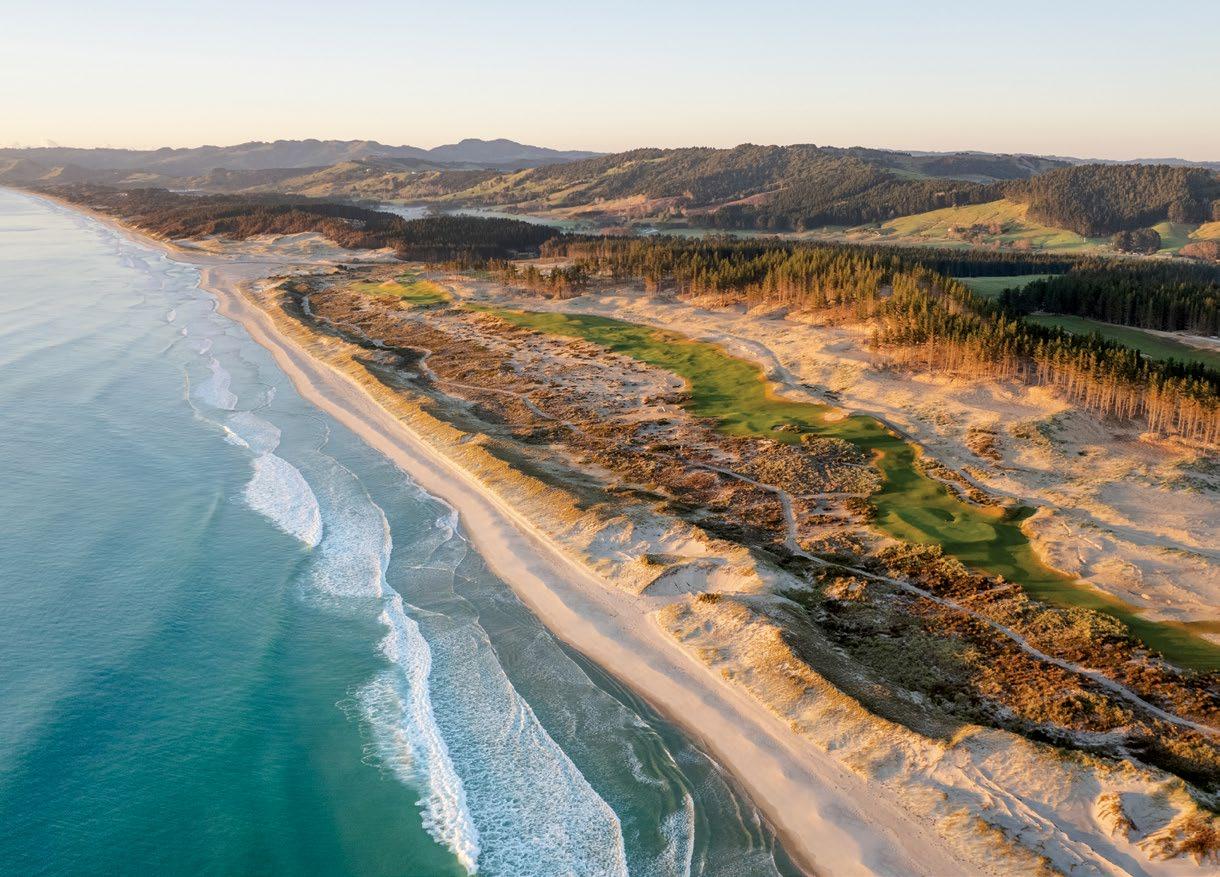
Te Arai Links feels like an old, beloved friend to this Oregonian golf writer.
By Jeff Wallach
if you’ve ever had a stranger rush up to hug you and call you by someone else’s name, you understand the concept that we all have someone roaming the world who looks just like us. And if you were, say, the Bandon Dunes Golf Resort, your doppelgänger would surely be Te Arai Links on New Zealand’s North Island.
As an Oregonian who’s lucky enough to live just 200 miles from Bandon, I’ve played all the courses there dozens of times. Arriving at Te Arai Links for the first time, I essentially rushed up and embraced the terrain, whispering, “Hello, old friend.”
It starts with the fact that Te Arai, like Bandon, awaits at the end of a long drive through remote country. You approach with a “what-the-what?” expression, wondering if maybe you made a wrong turn a while back. Then you see it: the perfect grassy expanses of
green rolling dunes pocked with occasional flags, the sublime bunkering, the absolute perfection of the blending of masterful golf architecture and spectacular natural terrain carpeted in dreamy soft fescue. All set by the ocean, with holes stretching toward and away from the blue horizon.
The view, as at Bandon, is not marred by golf carts—all layouts at both properties are walking only, with no housing crowding the golf holes. The similarities extend to the artists who worked on each of these properties: Both resorts boast some of the best designs executed by Tom Doak and the team of Bill Coore and Ben Crenshaw.
Even some of the specific holes at Te Arai Links bring to mind holes at Bandon, featuring giant punchbowl greens, waste areas, and muscular earthworks. Doak’s North Course at Te Arai encompasses exposed red rock faces, like the legendary 16th hole on the original Bandon Dunes course.
Both resorts were also created by wealthy American visionaries on two of the world’s best sites for the game. Mike Keiser, Bandon’s founder, is legendary for risking his own money to build the resort’s first course on a stunning site that’s convenient to nothing and nowhere. In New Zealand, Jim Rohrstaff and Ric Kayne took a similar gamble, although Te Arai is only

an hour from Auckland and its amenities are noticeably more upscale and stylish.
“Bandon was absolutely an inspiration,” Rohrstaff says. “We admire what Mike Keiser did there with pure destination golf and the tradition of walking. We’re flattered by comparisons to Bandon.”
Even with the many similarities between the two, in the end, Te Arai Links, like Bandon Dunes, is a one-of-a-kind golf experience.
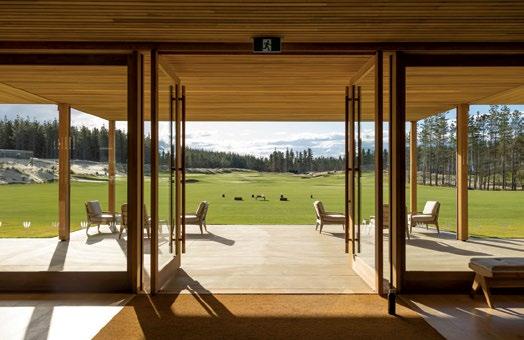

three hours from christchurch, at the base of the Southern Alps, lies milky turquoise Lake Tekapo. The accompanying town isn’t much—a couple of restaurants, a few hostelries, and a lot of sheep—which is part of what makes it so special. Miles from anywhere, Tekapo sits amid 1.1 million acres designated as the Aoraki Mackenzie International Dark Sky Reserve, where the near total lack of light pollution ensures the clearest view of the night sky you’ll ever see. Several outfitters offer sky tours from mountaintops, hot springs, craters, and other locations. Expect to see close-ups of the moon, Milky Way, constellations, and nearby roaming planets through a telescope, with explanations provided by professional astronomers. Book in advance. —J.W.
Fantl Sport makes golf clothing cut out specifically for New Zealand, with an appeal far beyond.
DAN FANTL FOUNDED Fantl Sport to solve the clothing challenges golfers face in his home country’s unpredictable climate. But drab waterproof jackets and scratchy wool sweaters Fantl Sport is not. New Zealand’s climate might not be so agreeable, but the country shares a casual, laid-back lifestyle with California, an influence that’s unmistakable in Fantl’s streetsmart and course-ready designs.
Golf is just the beginning for Fantl, who wants to move beyond overly branded course wear and develop a lifestyle brand focused on versatility, durability, and comfort. “We’re creating incredible product, but ultimately, how do we get people to stay on the golf course, and then how does golf become the entry point to a bigger health and wellness journey?” he says. “That’s the dream.”
Of course, Fantl is still fanatical about golf, and counts Auckland’s Muriwai Golf Club as his home course. He’s also happy to make the 90-minute drive outside of Auckland to Te Arai Links, or head farther afield to the Kinloch Club in Taupō. —J.R
